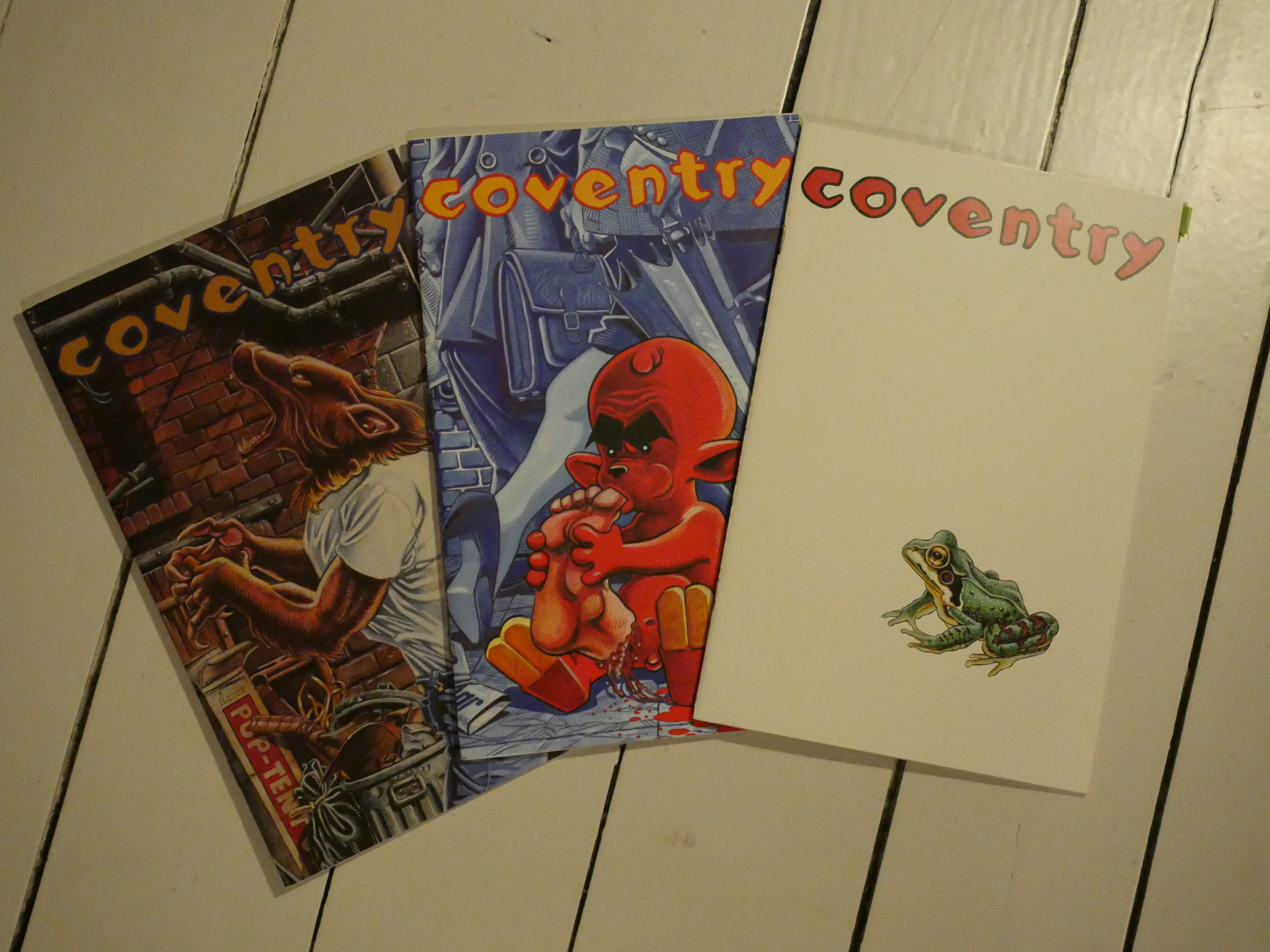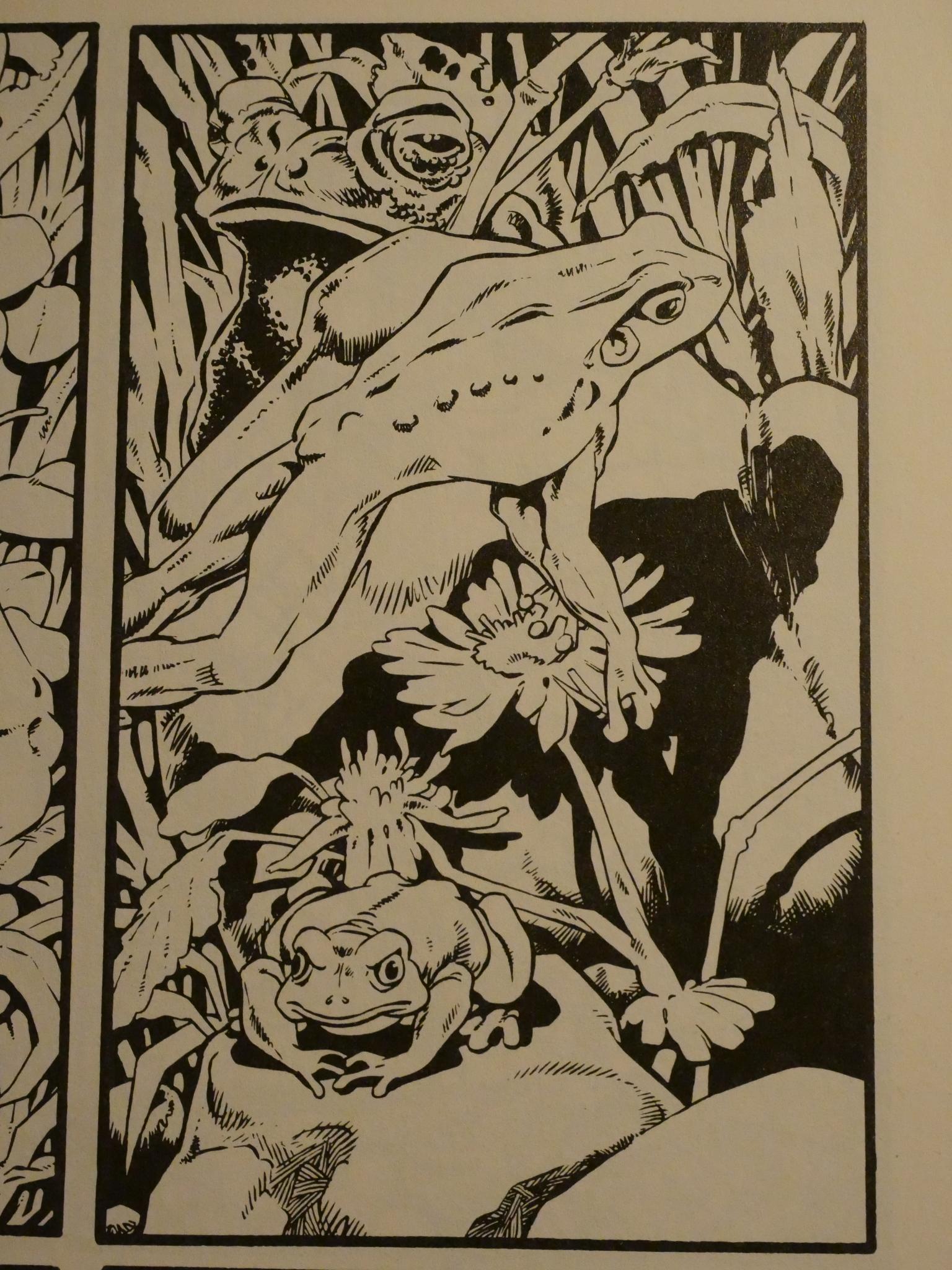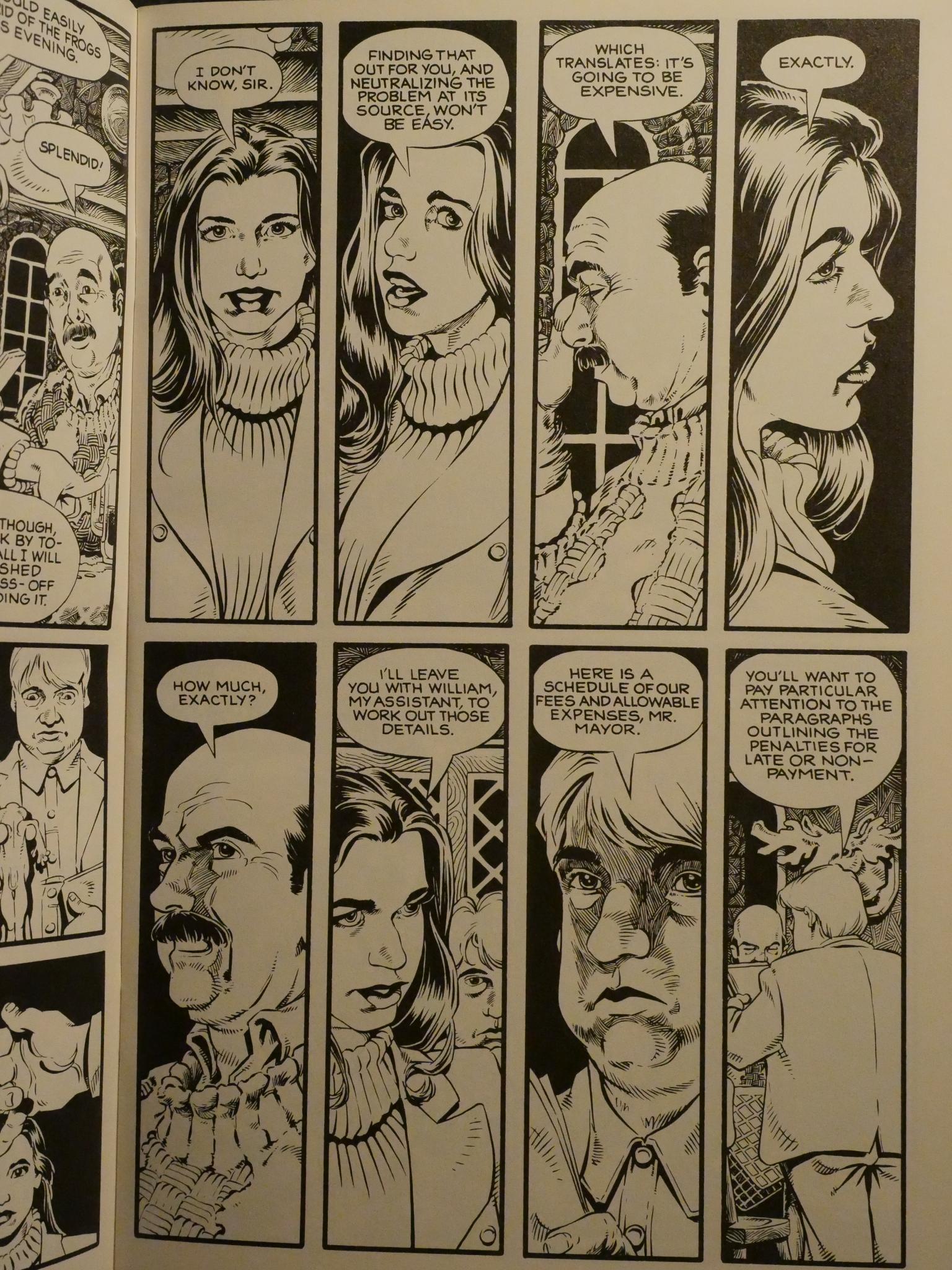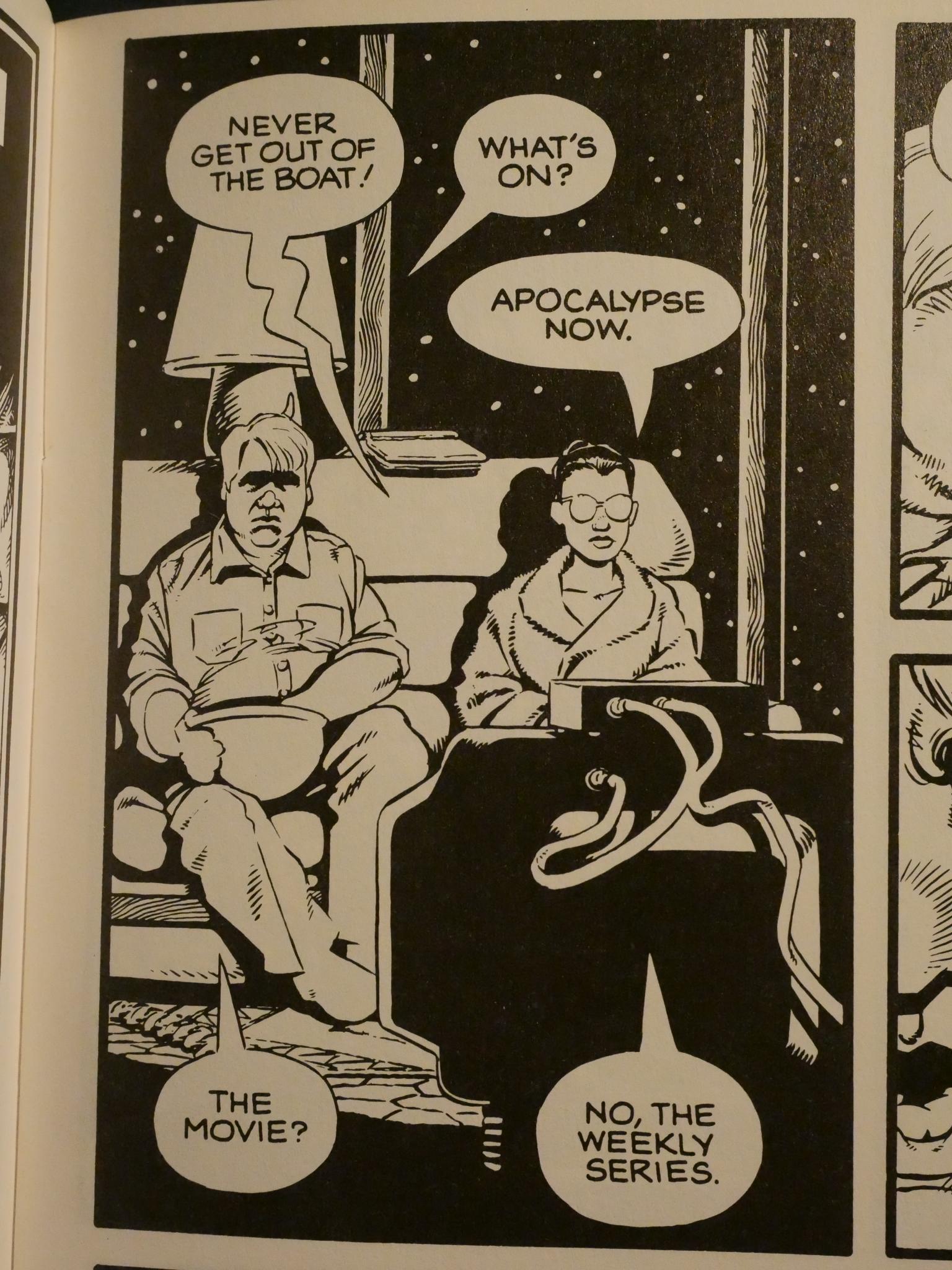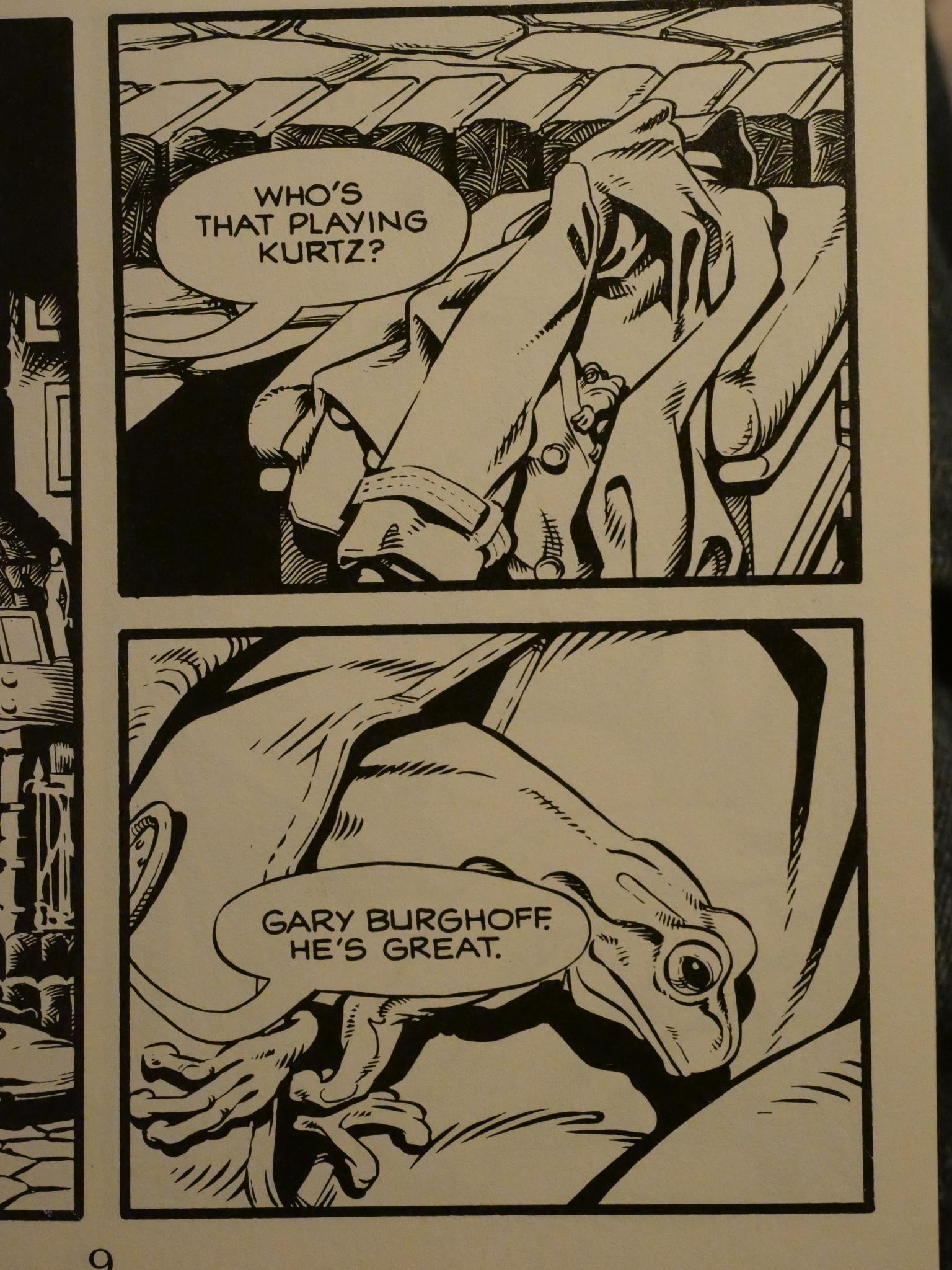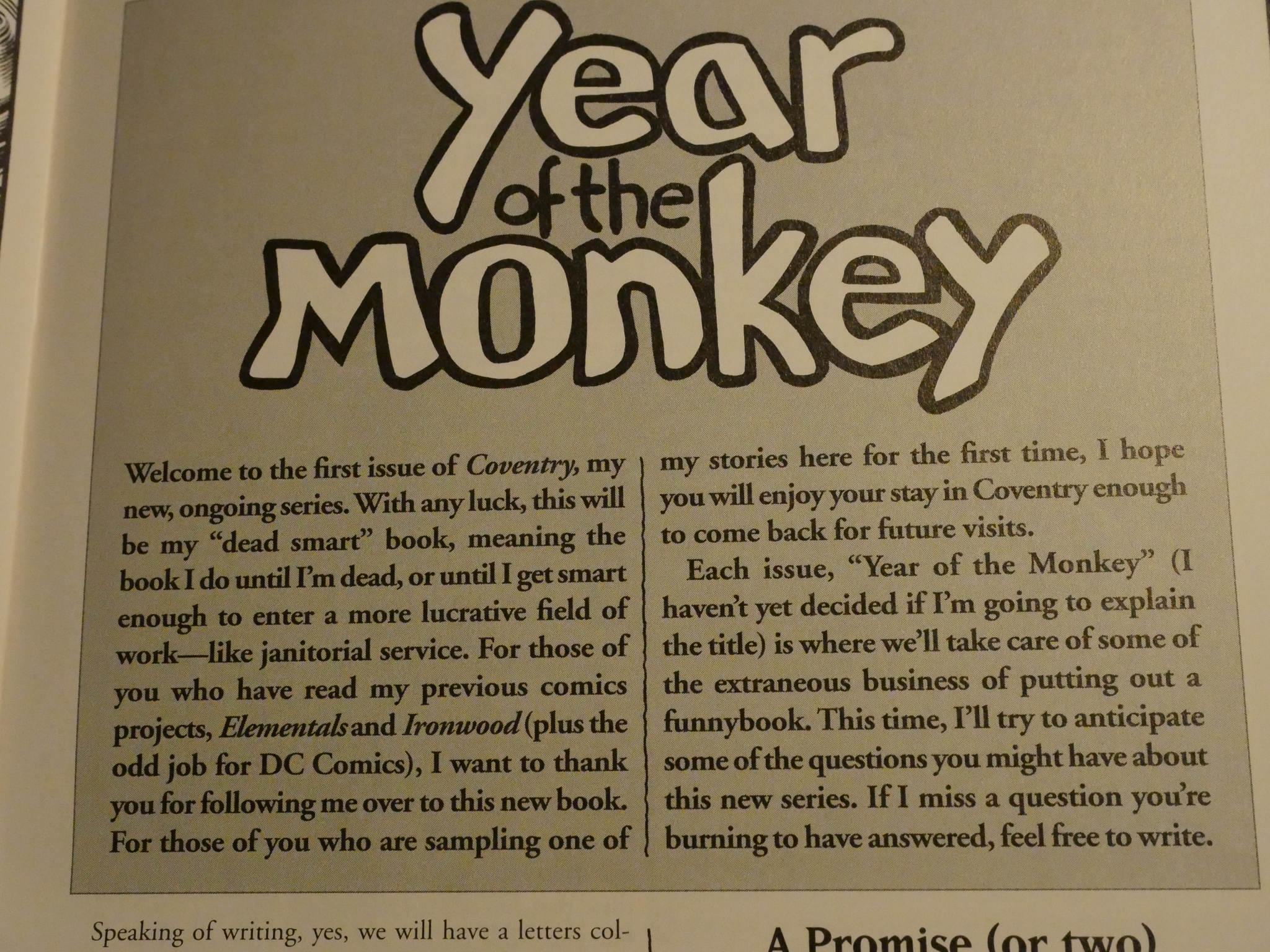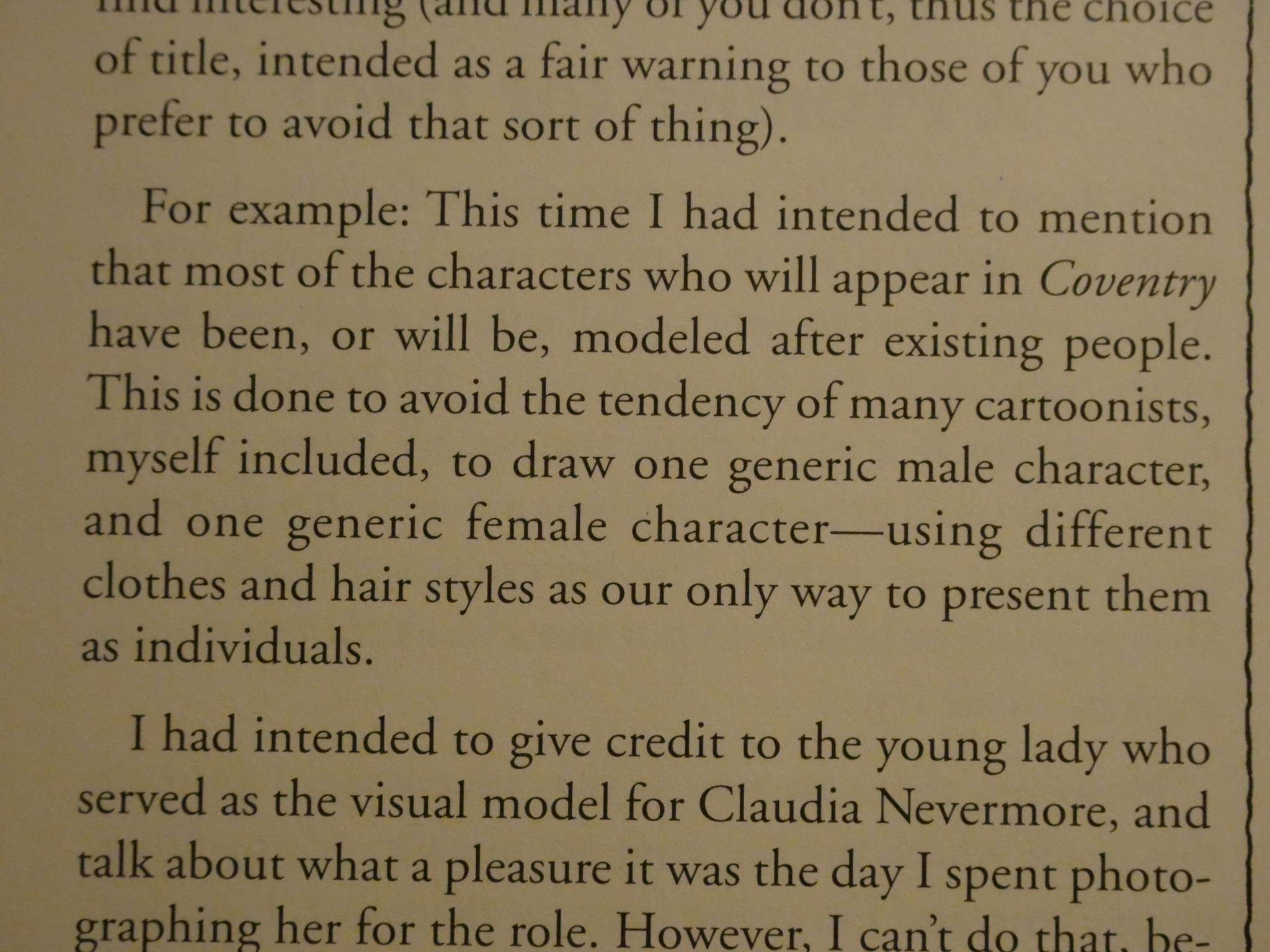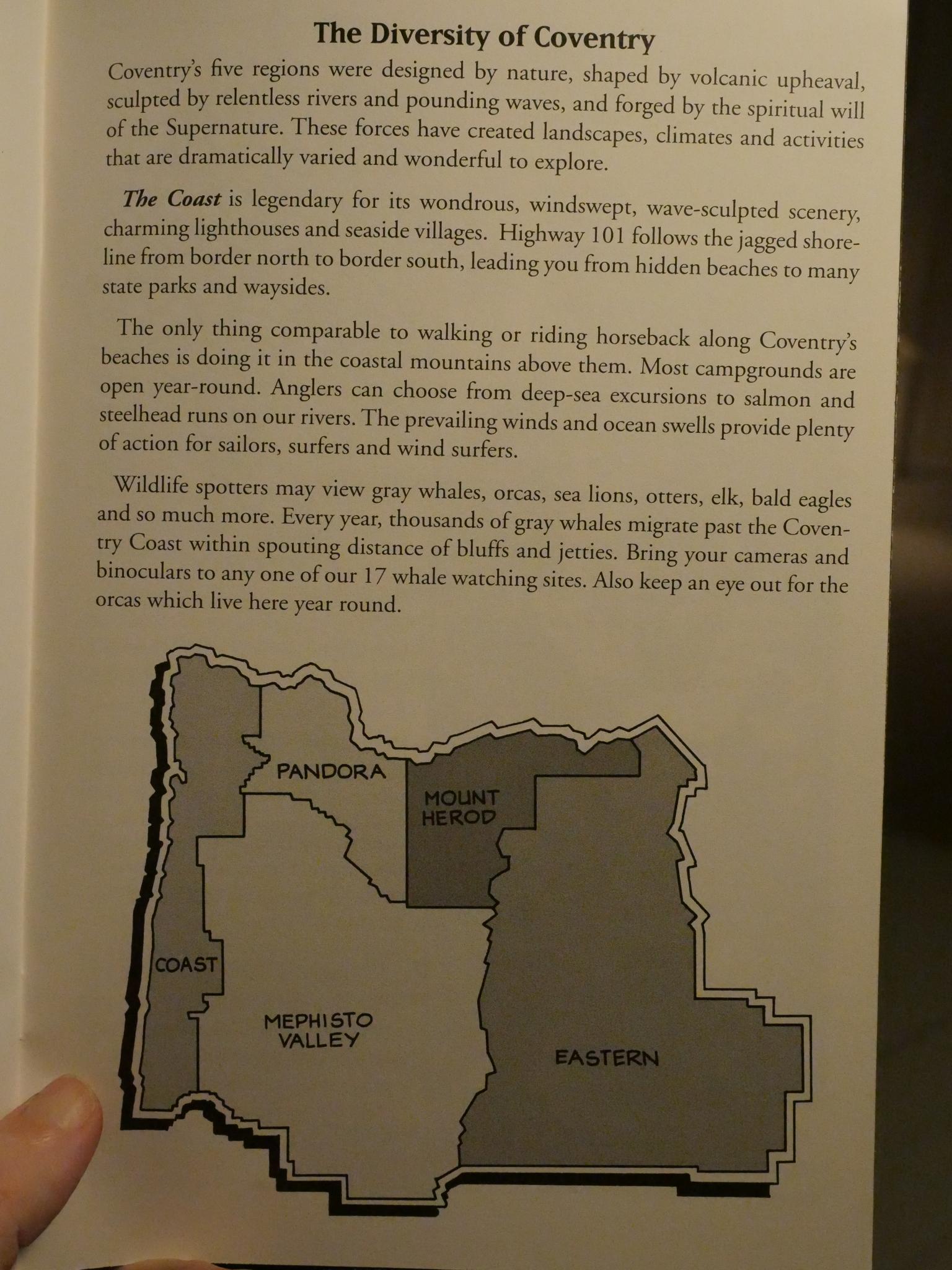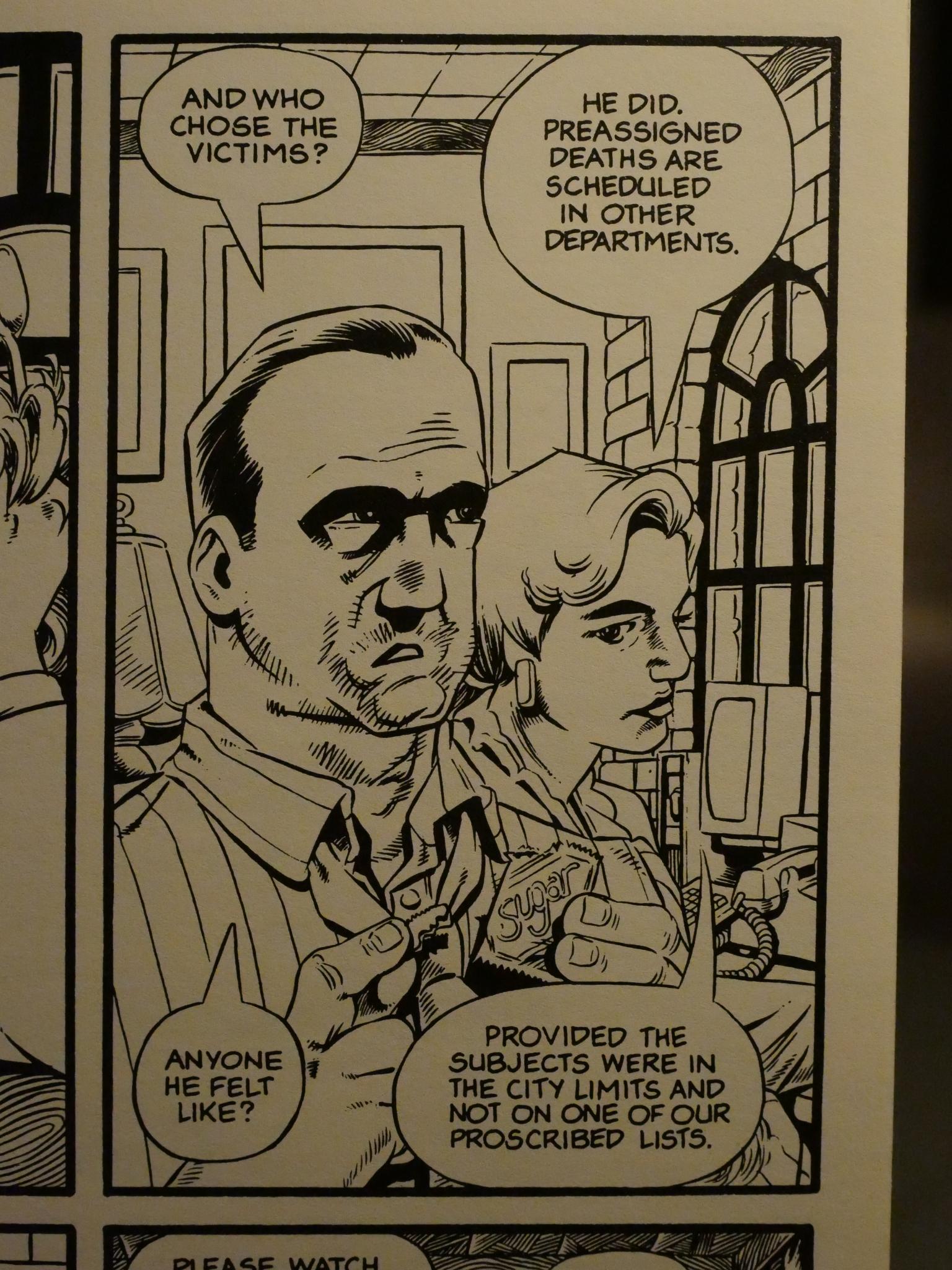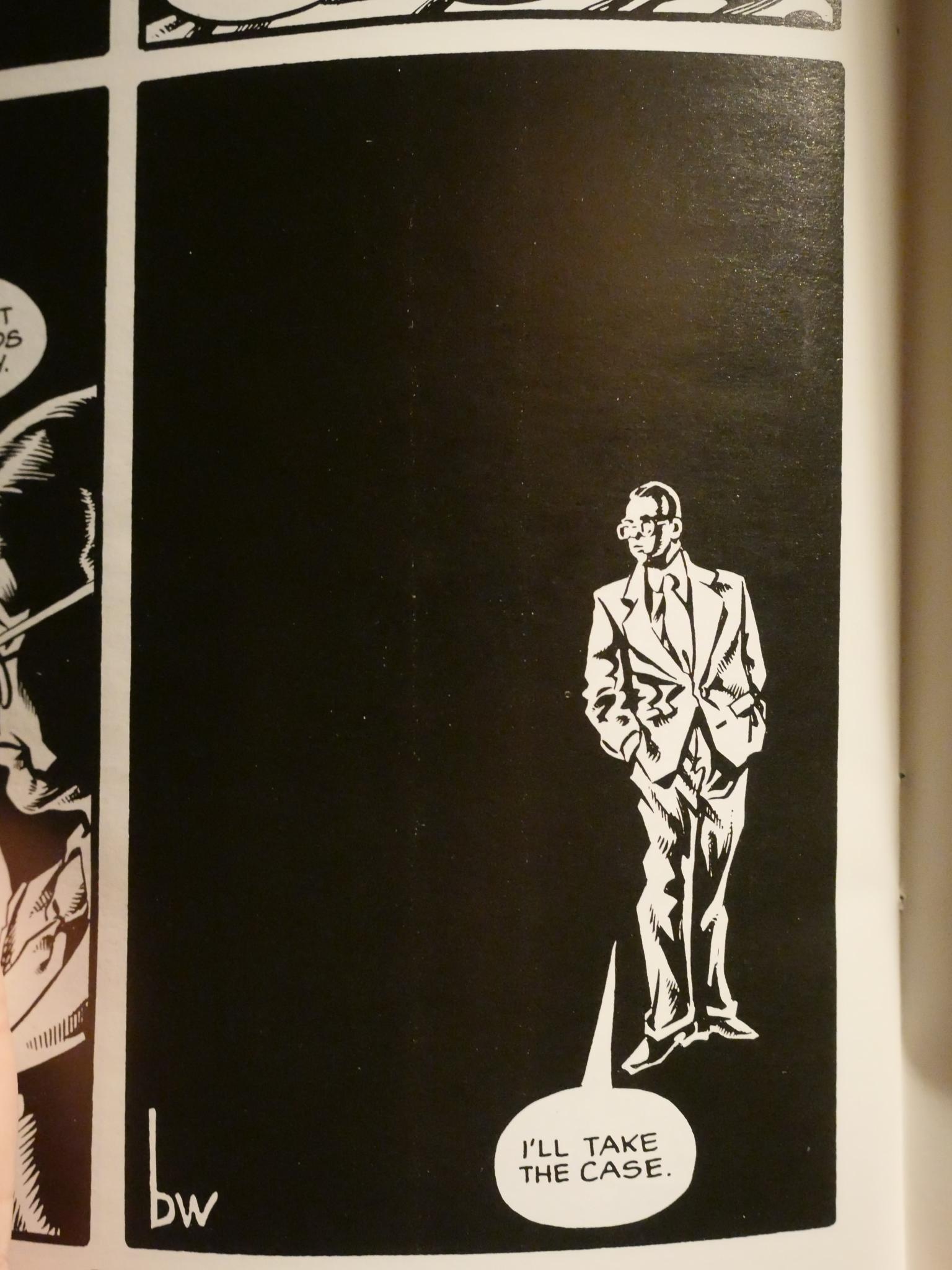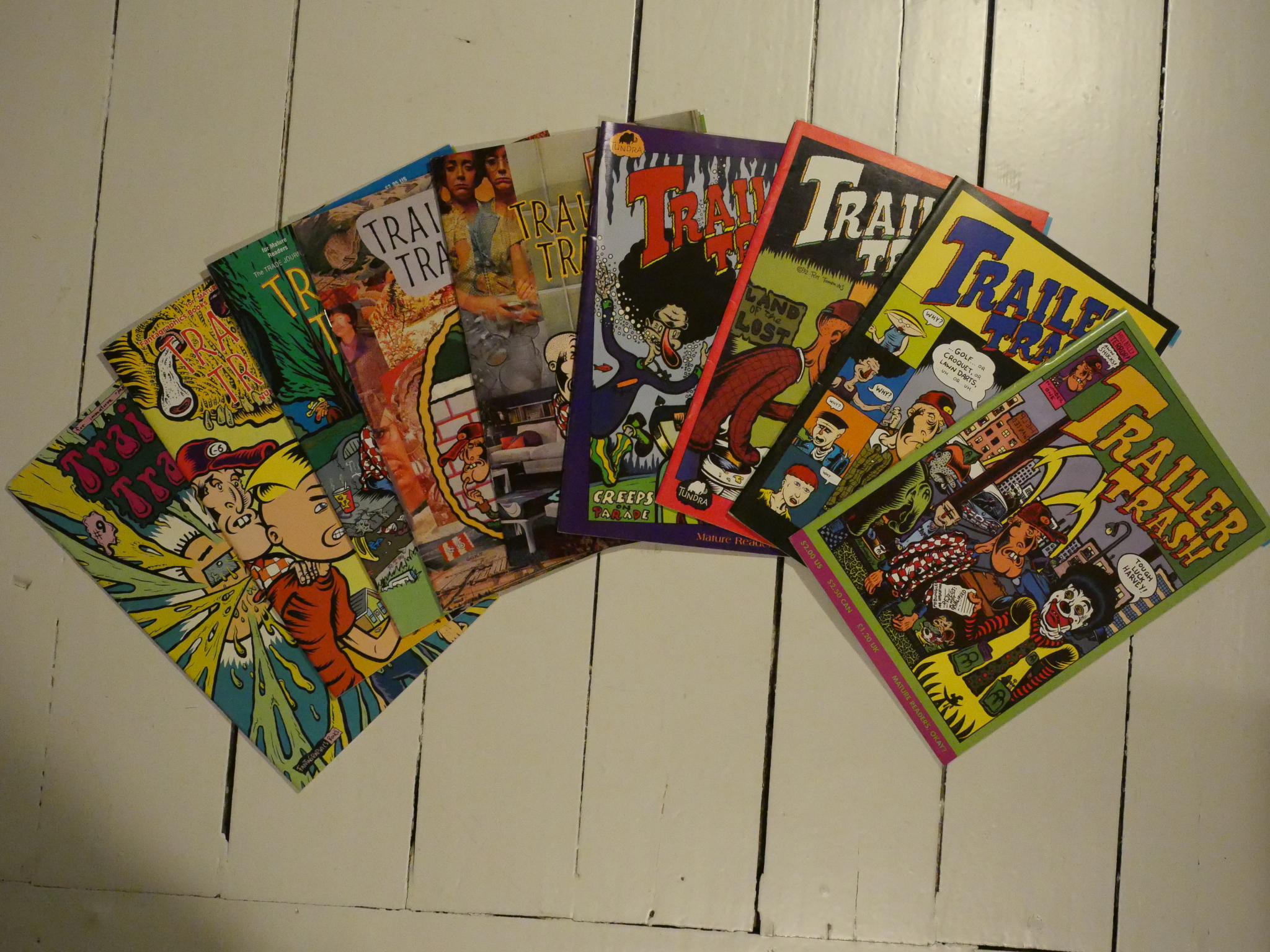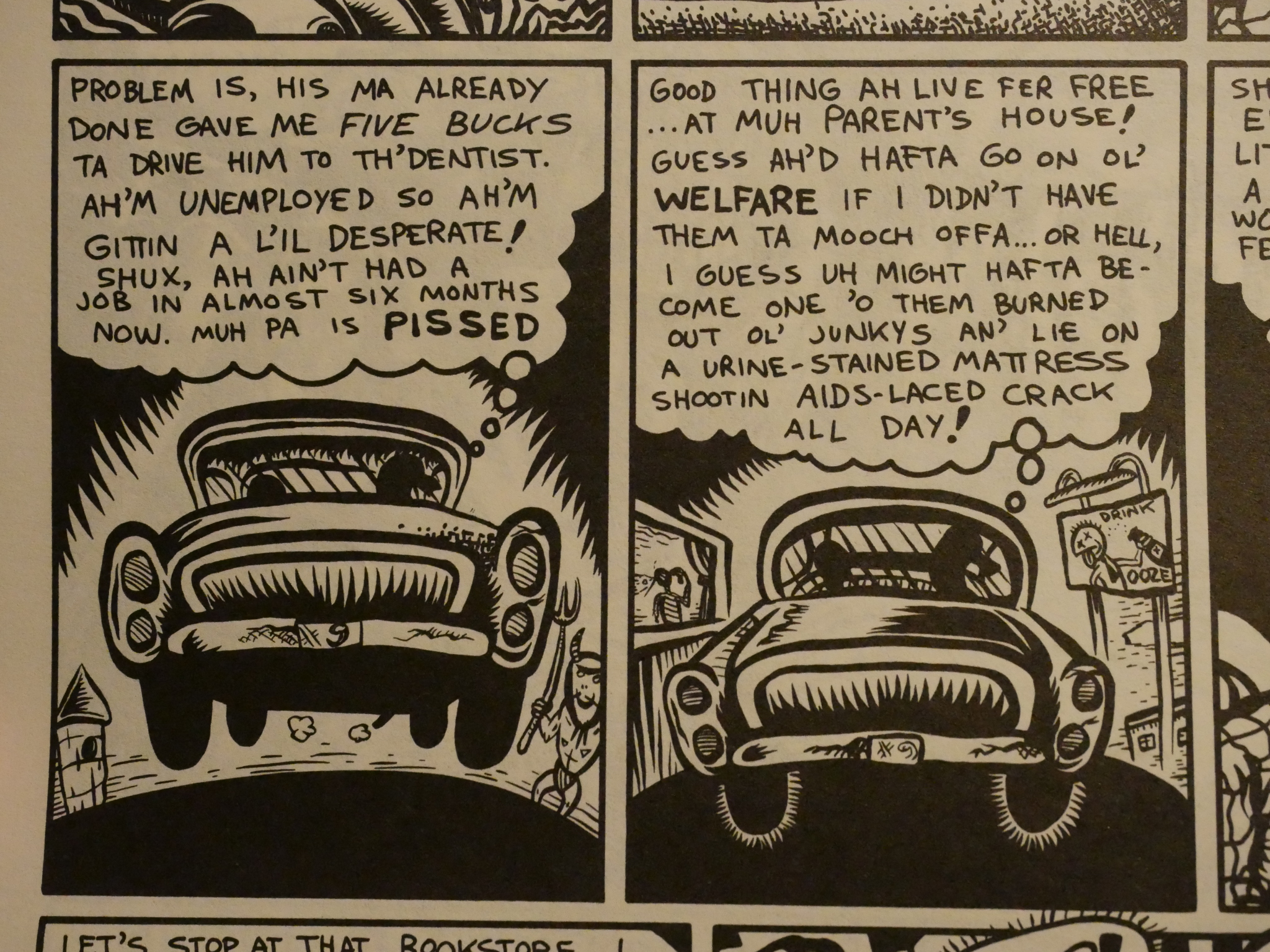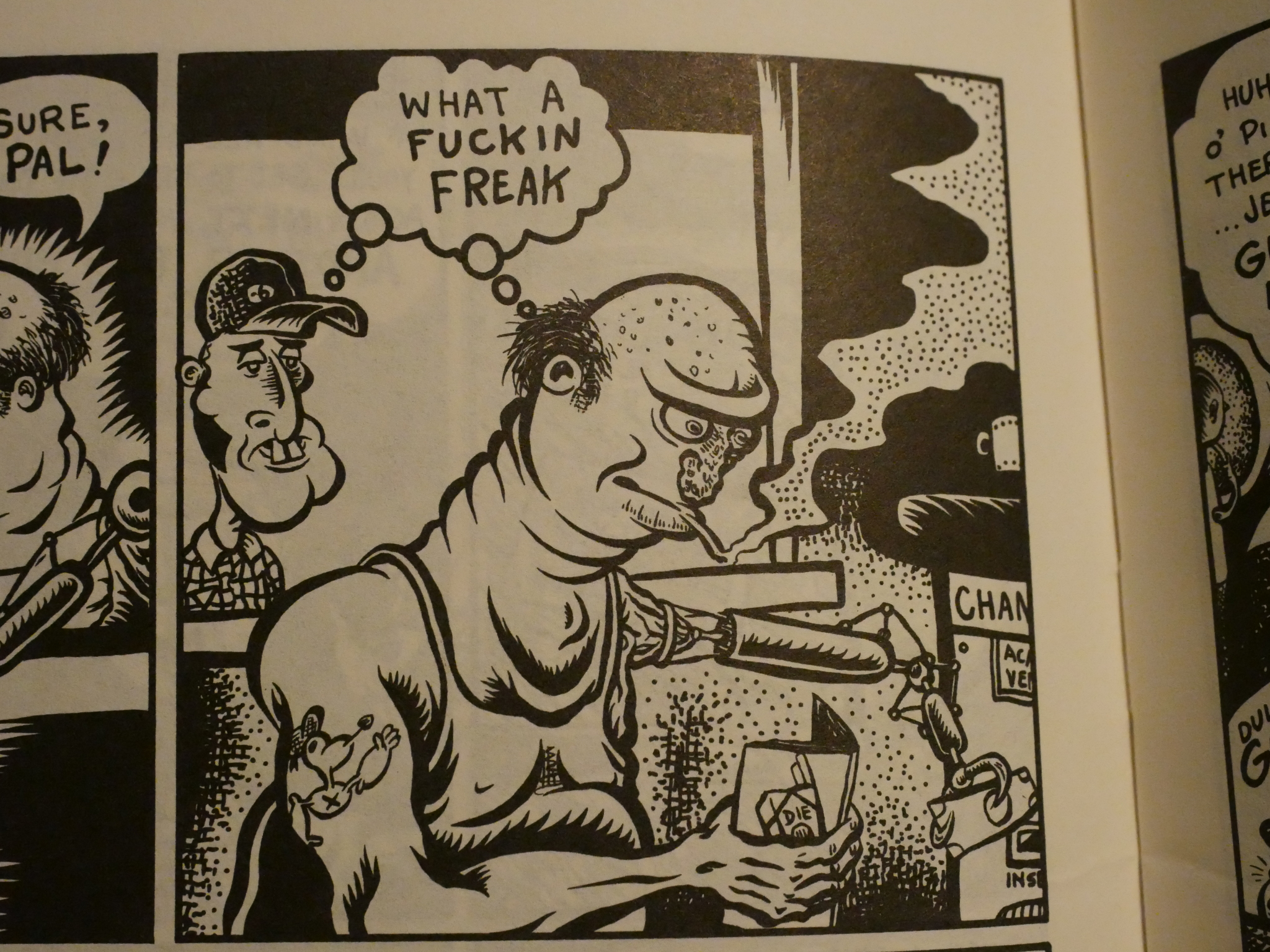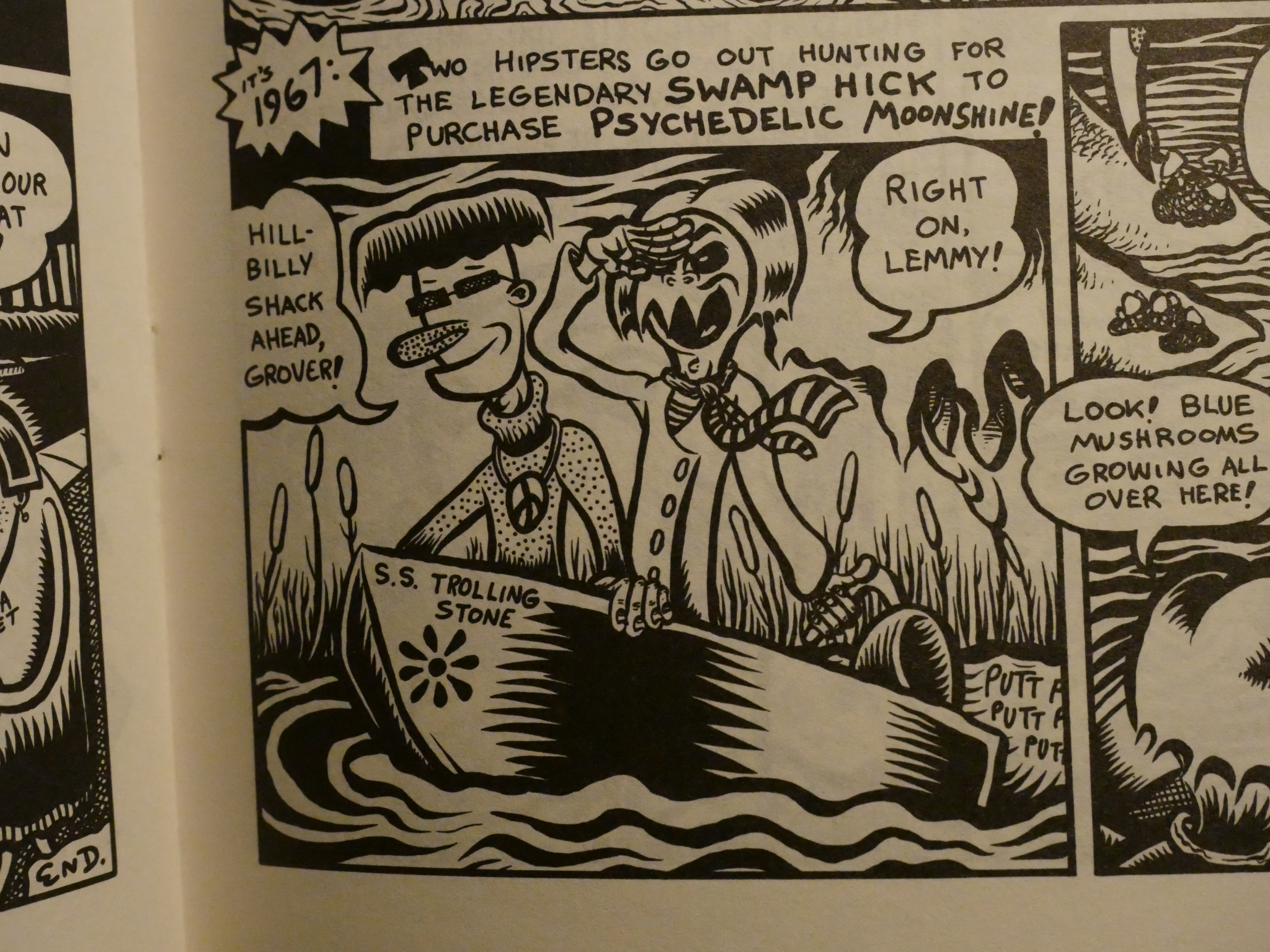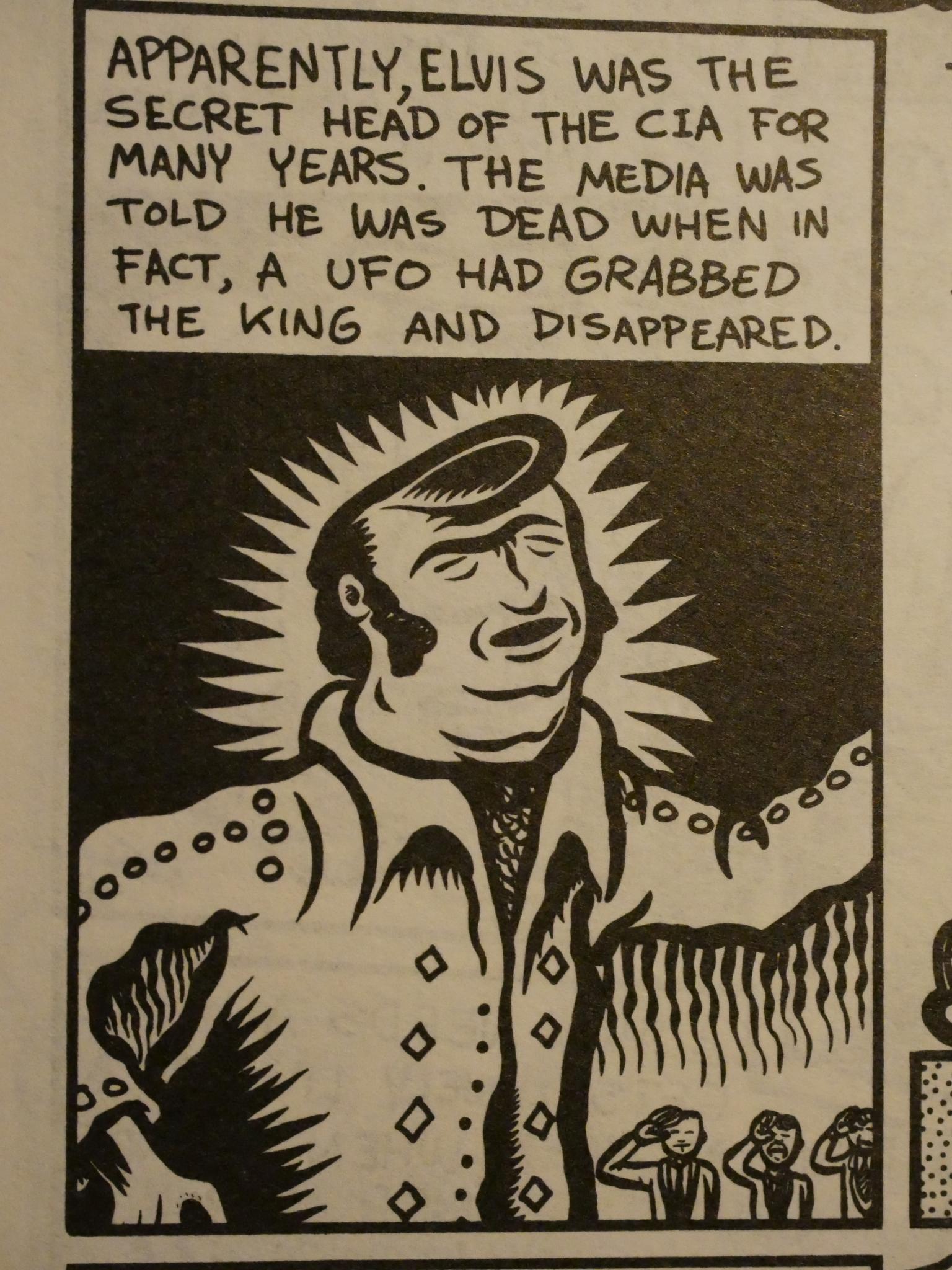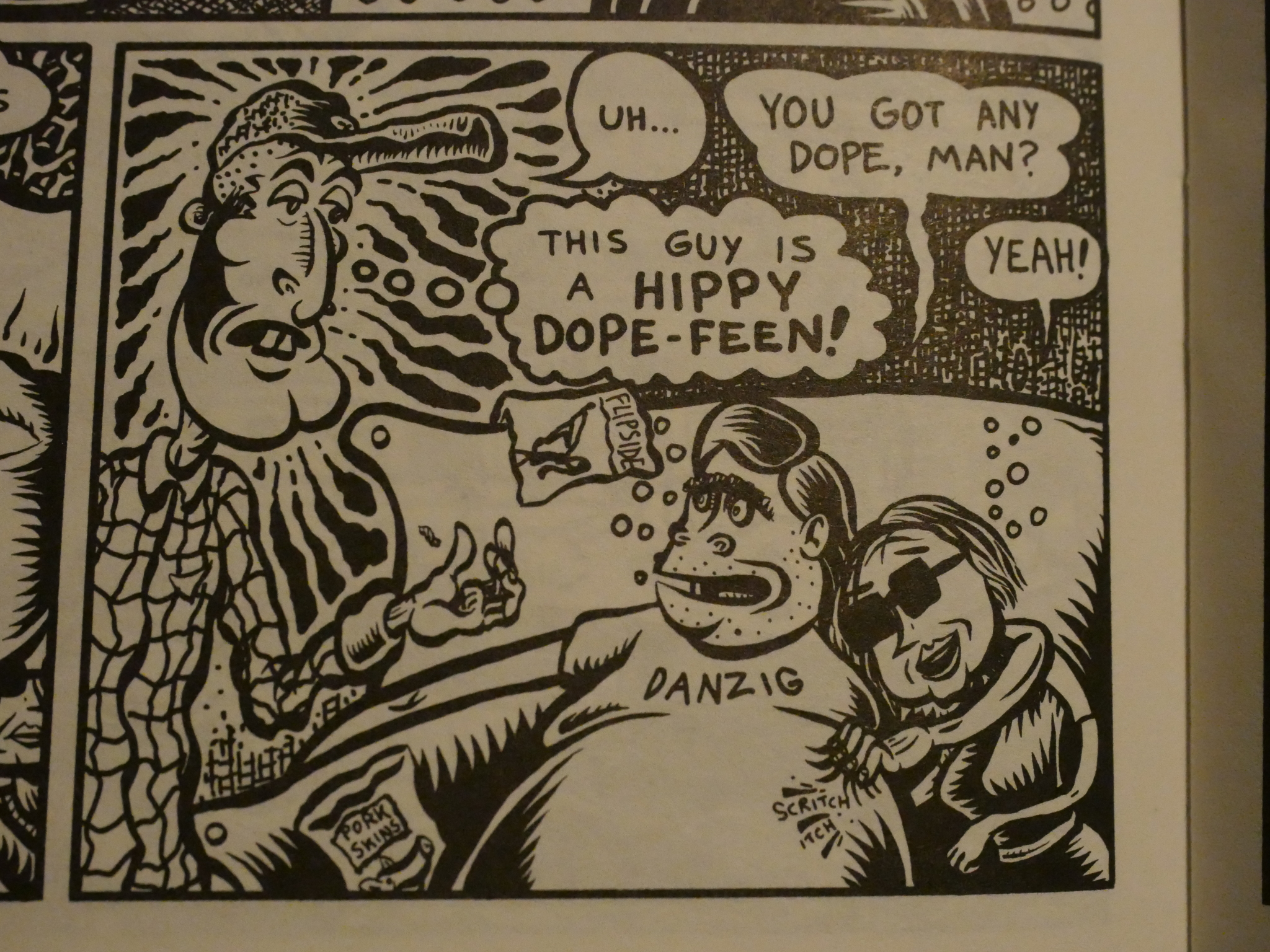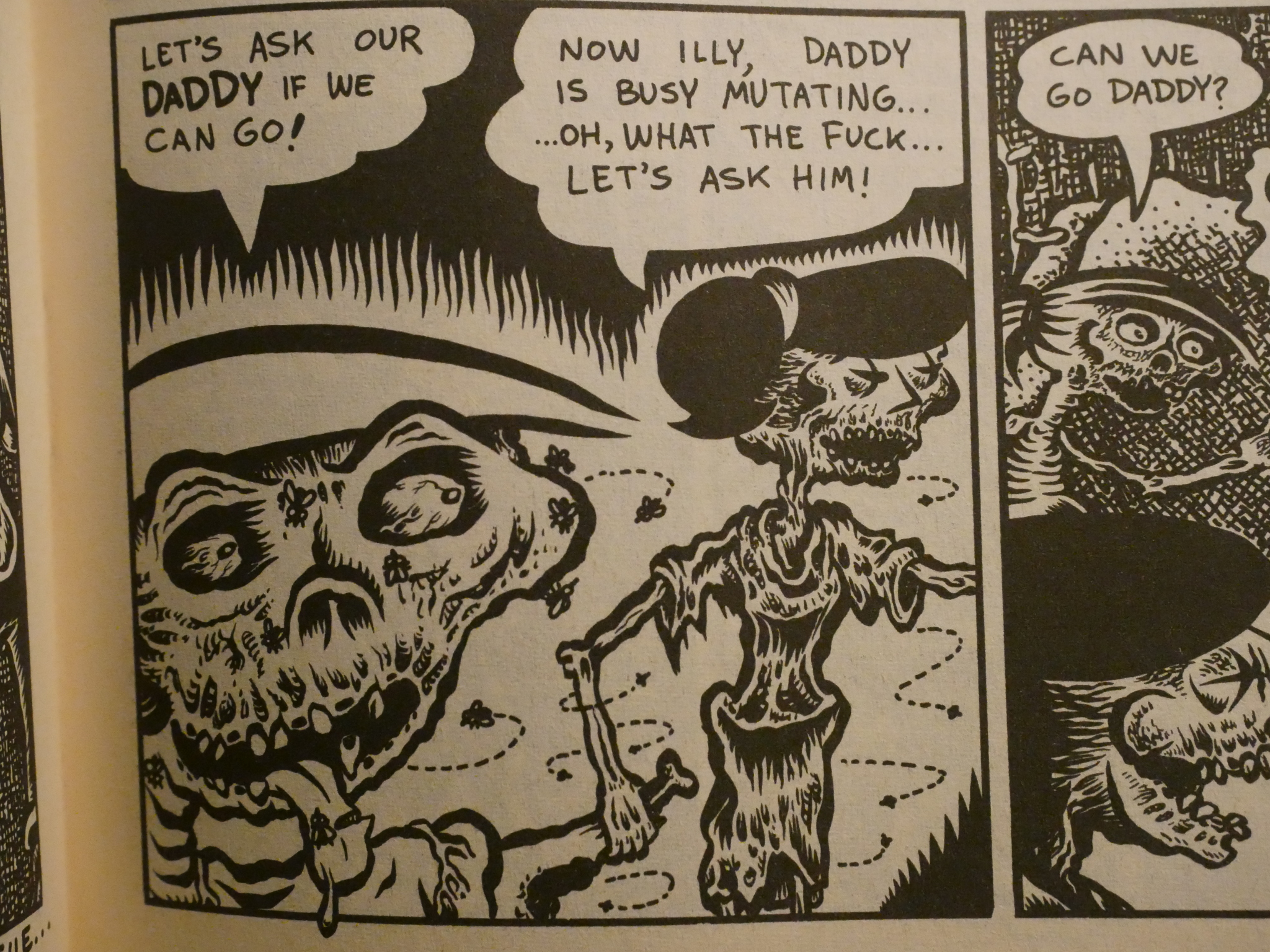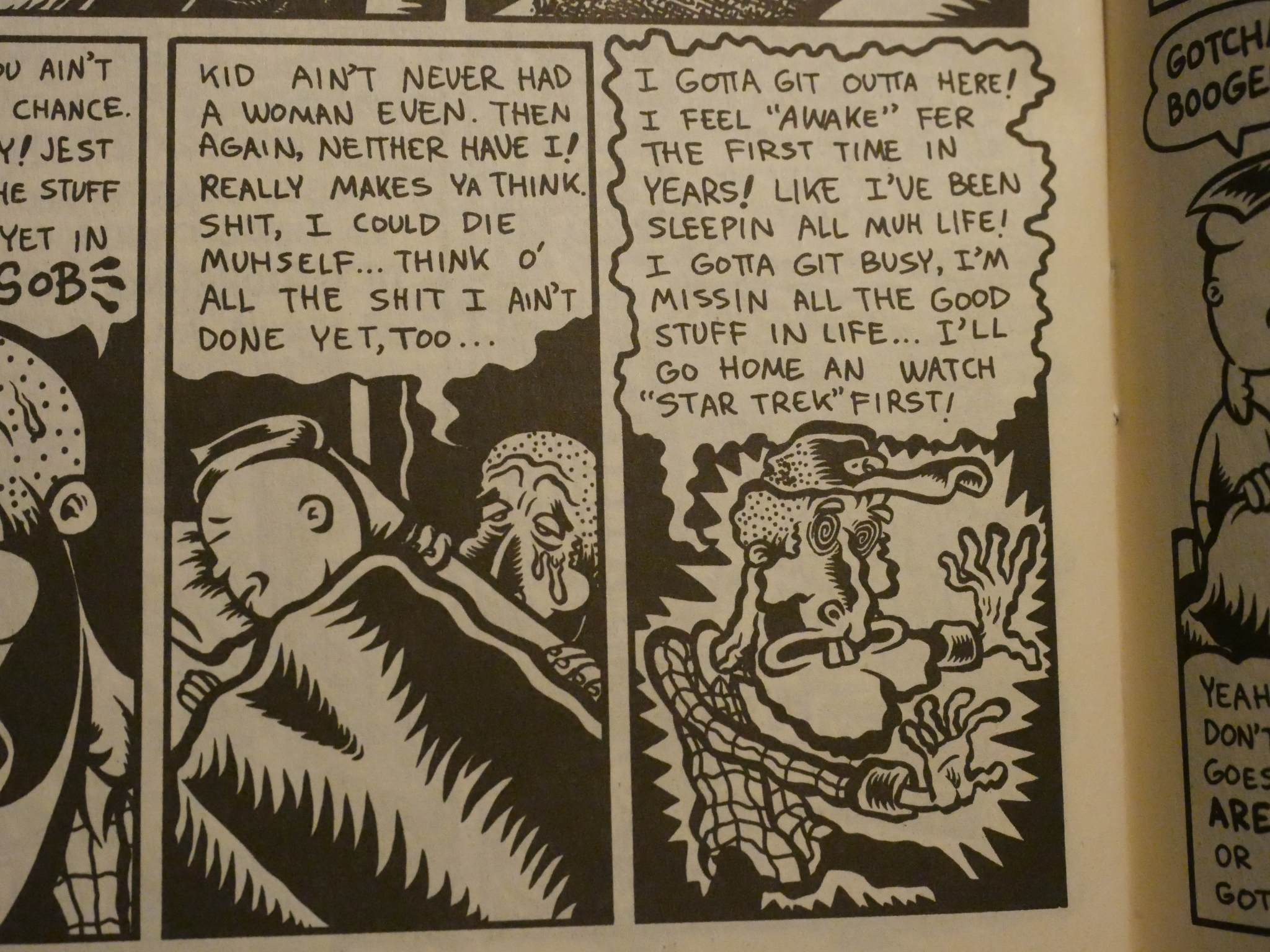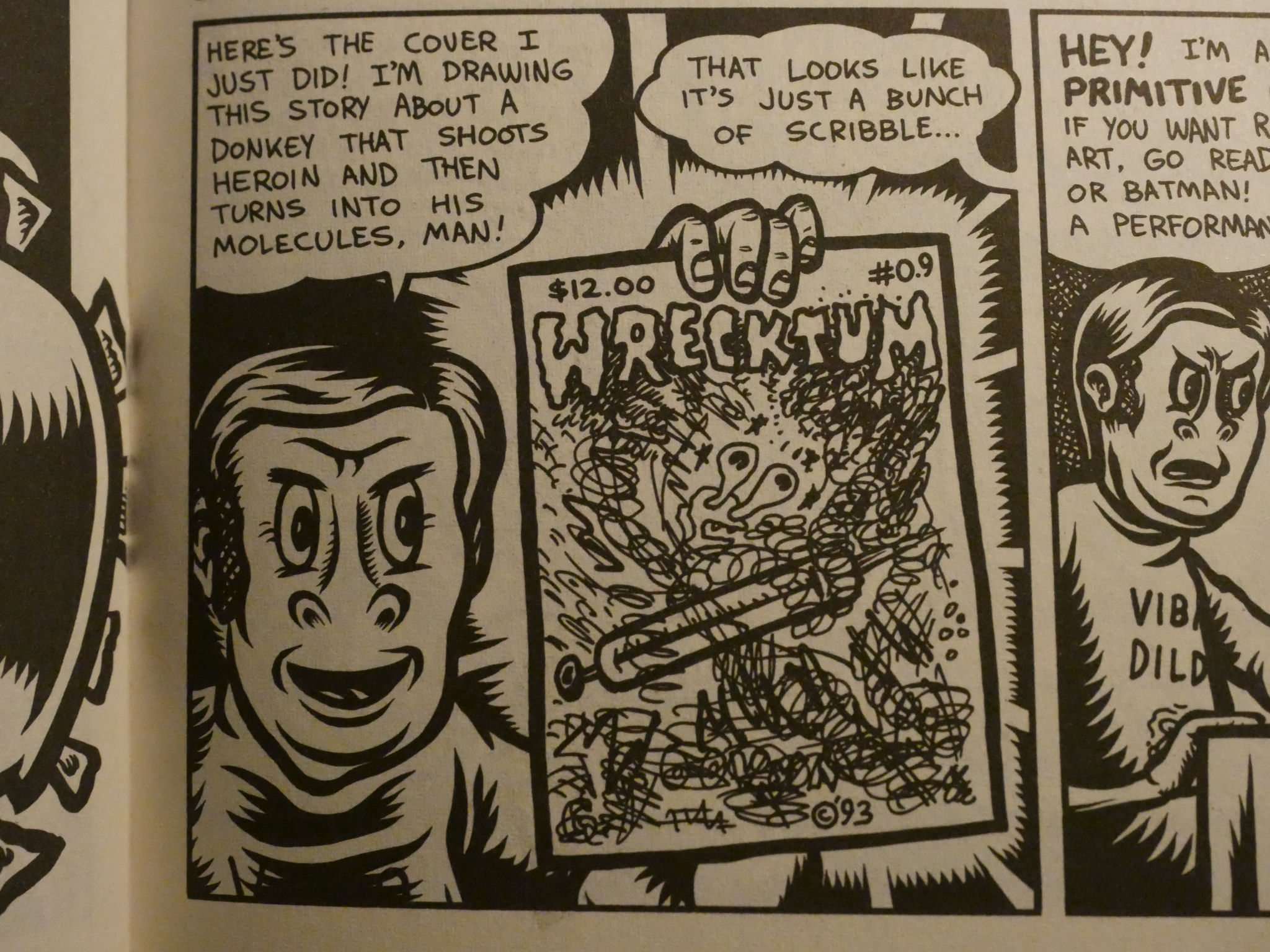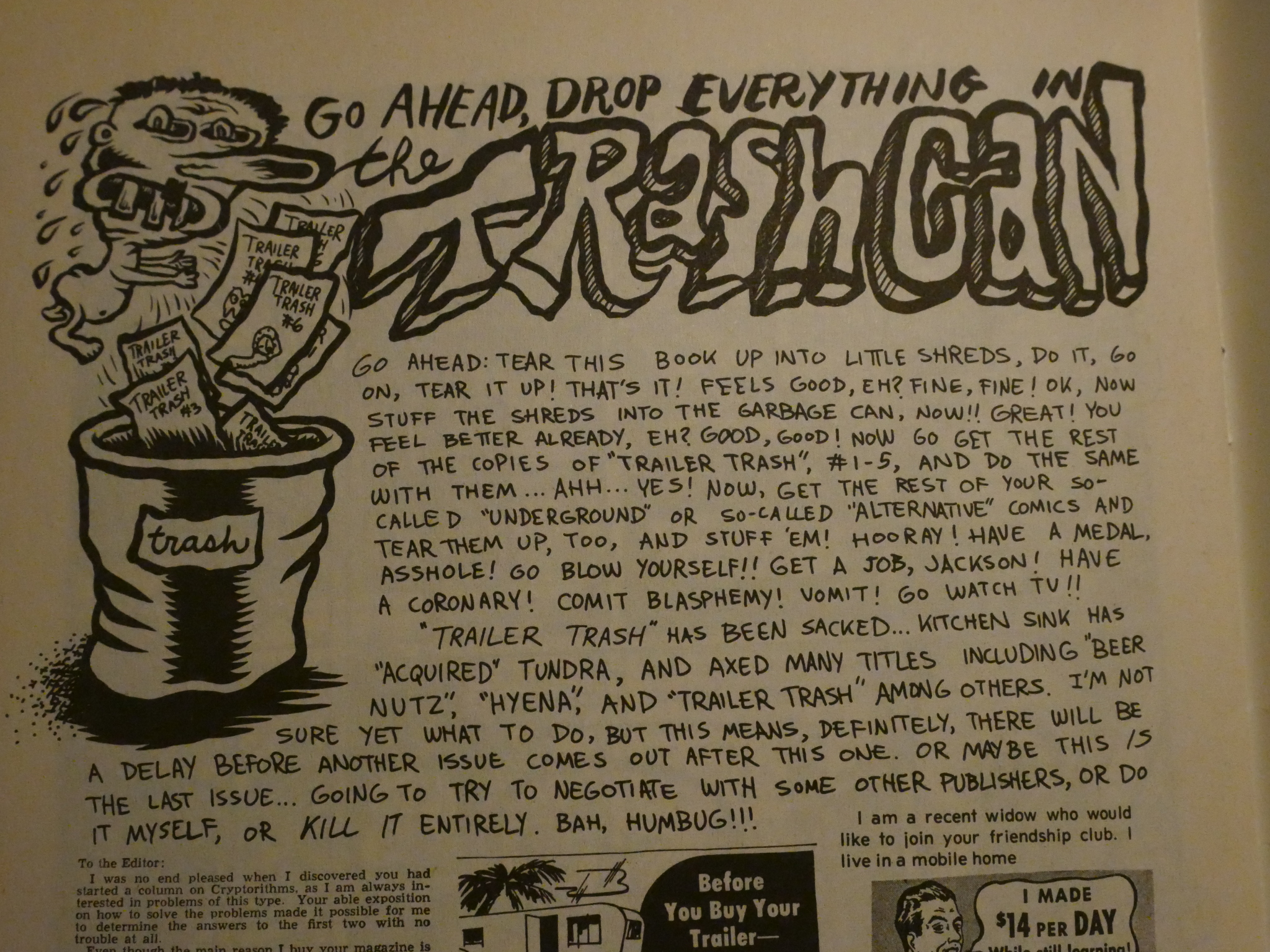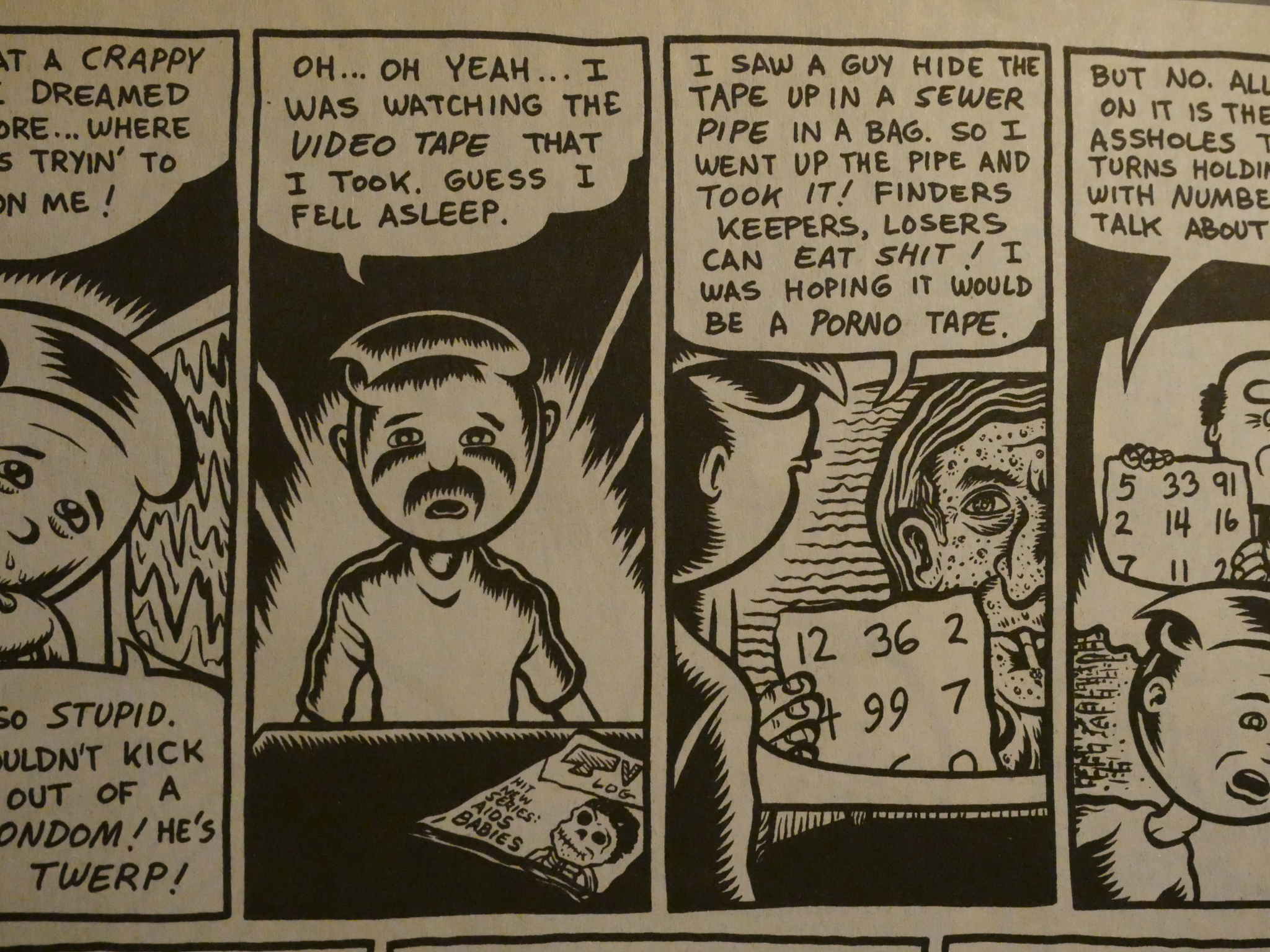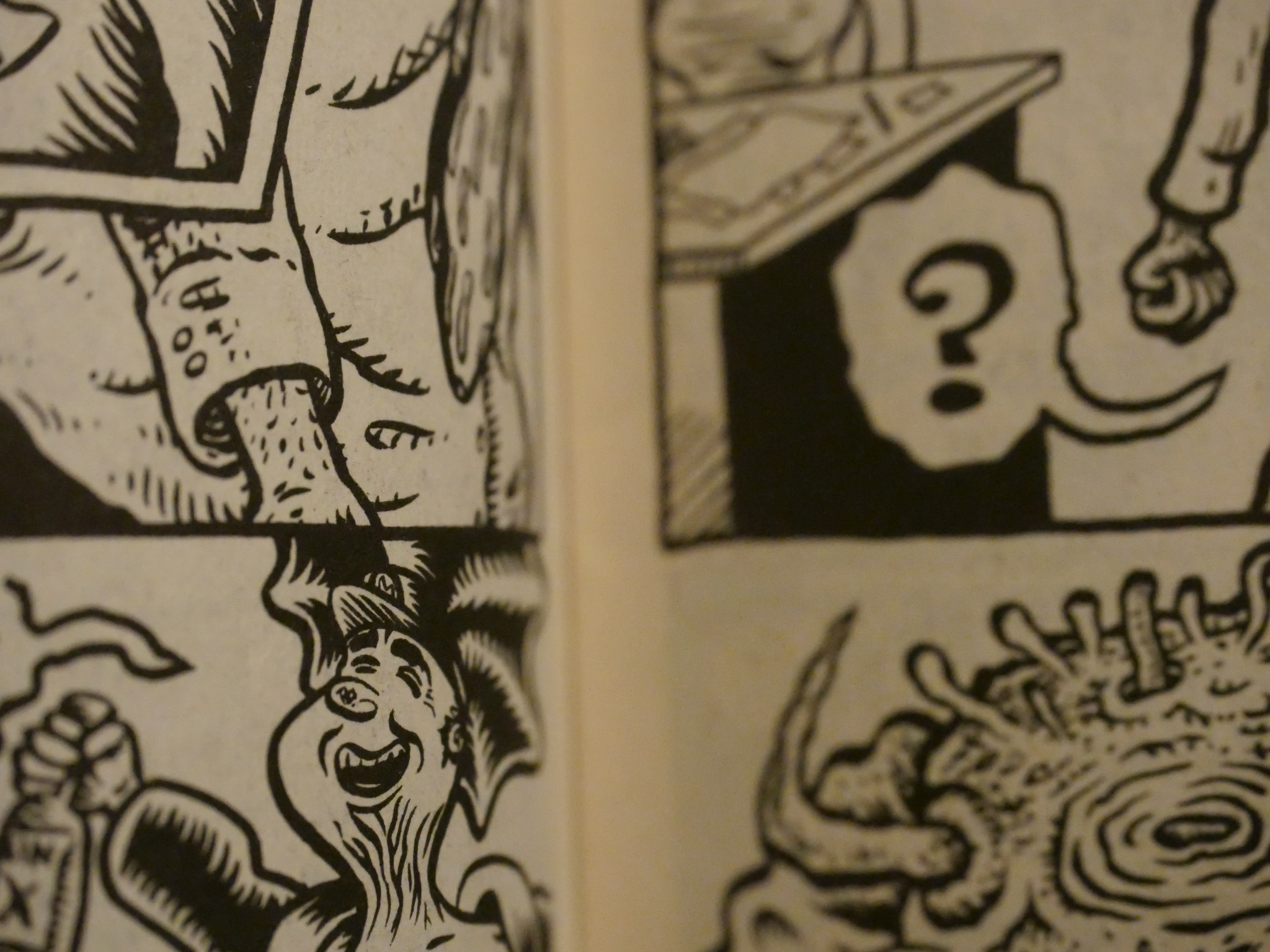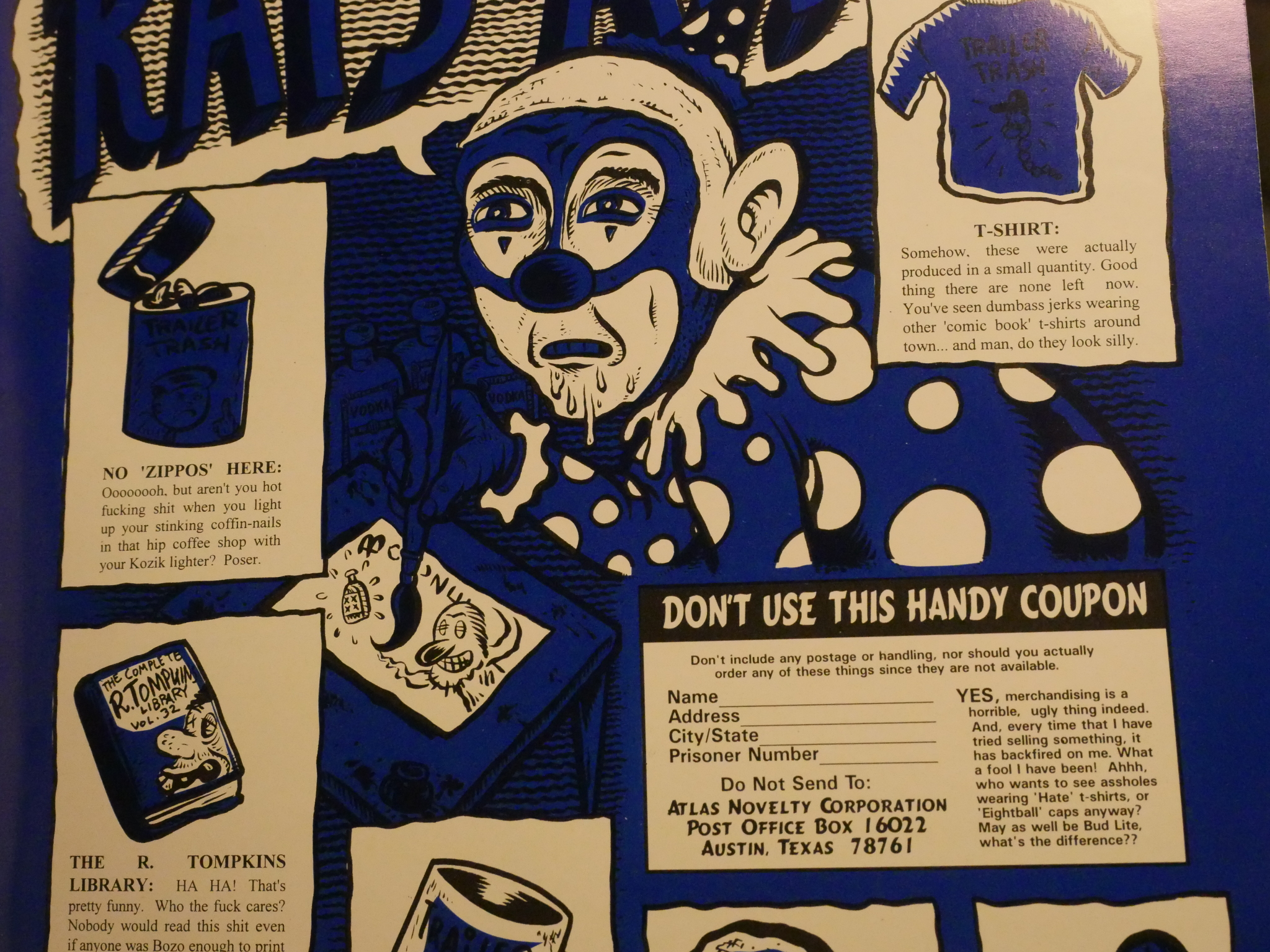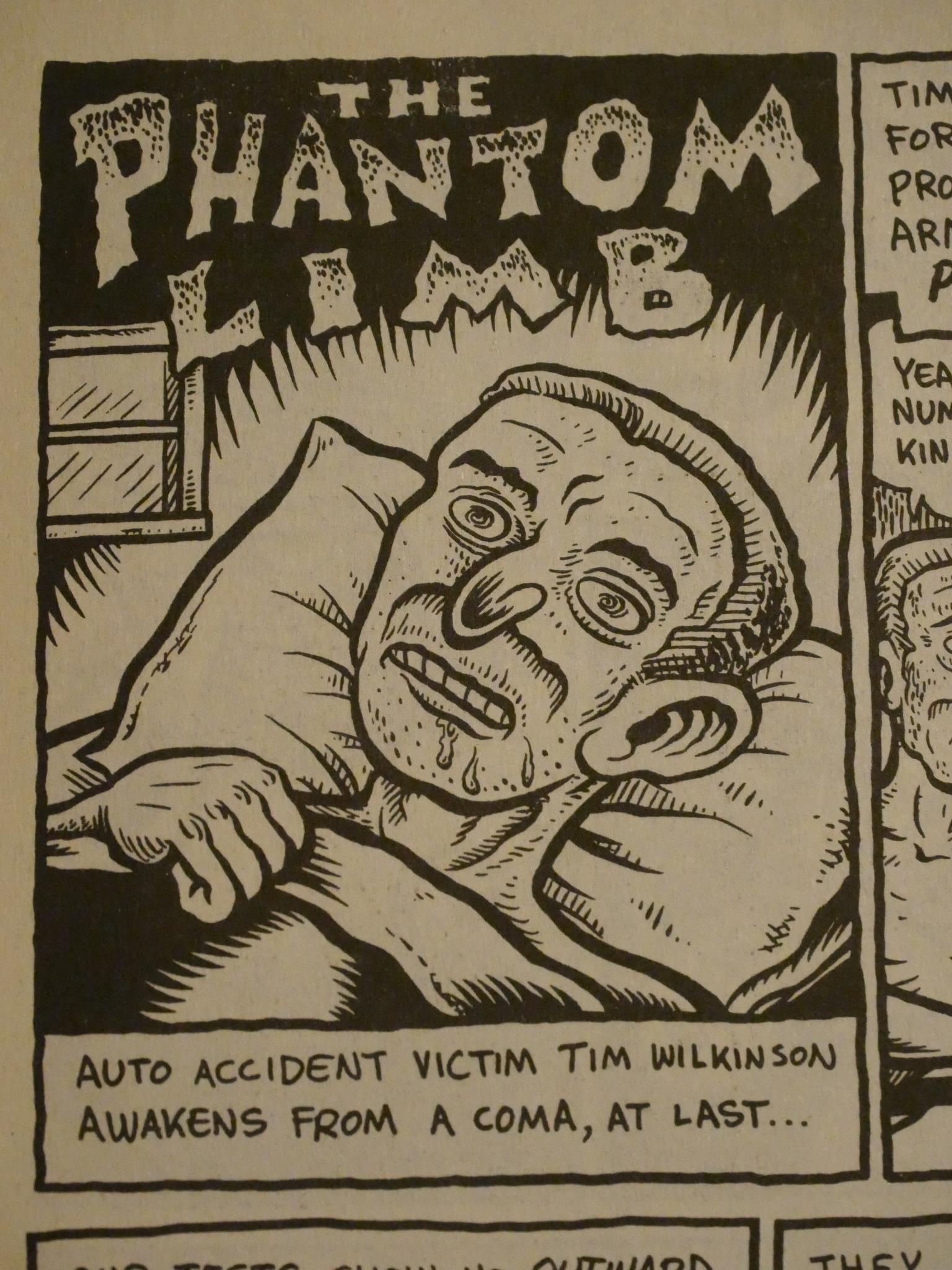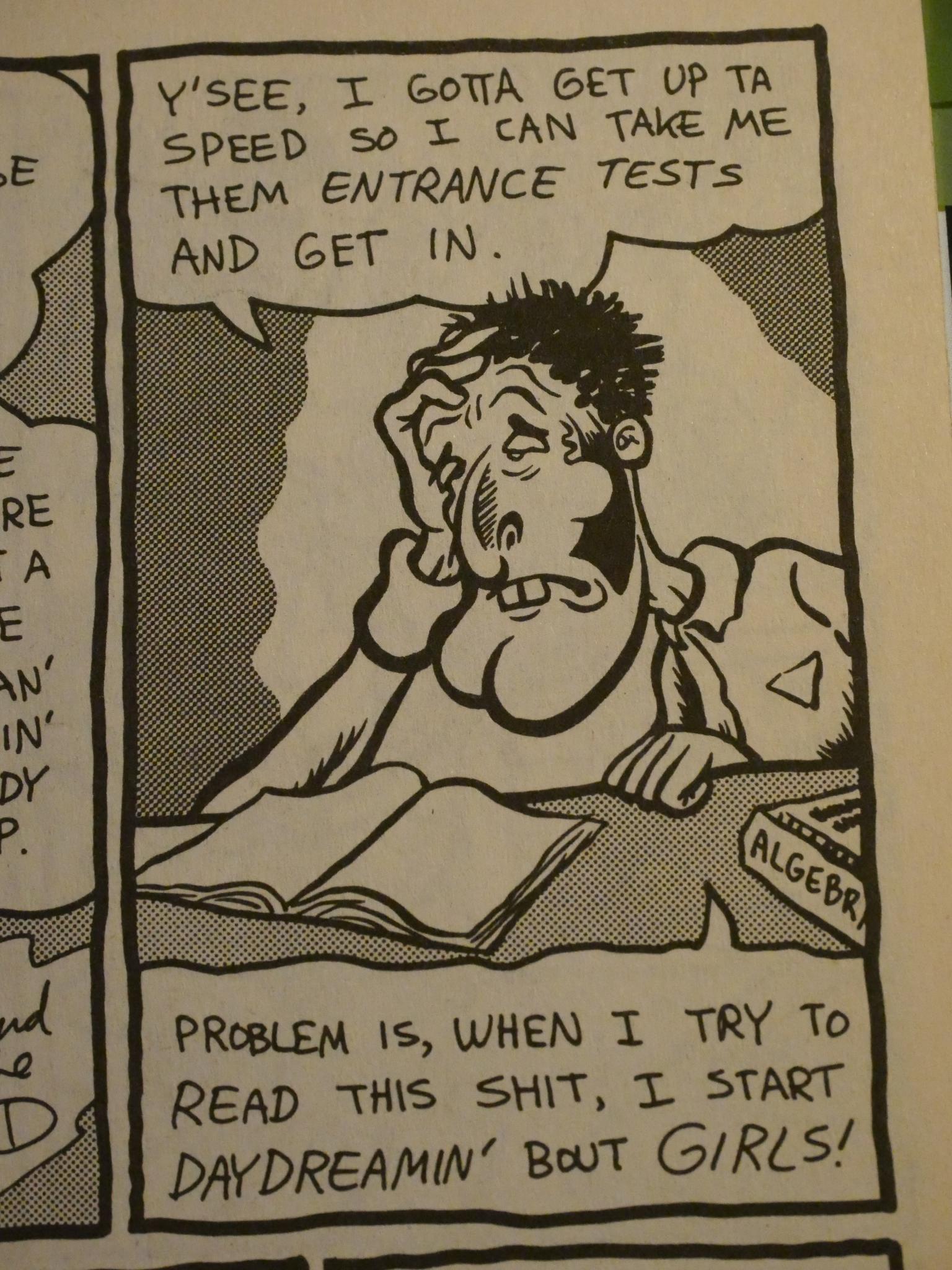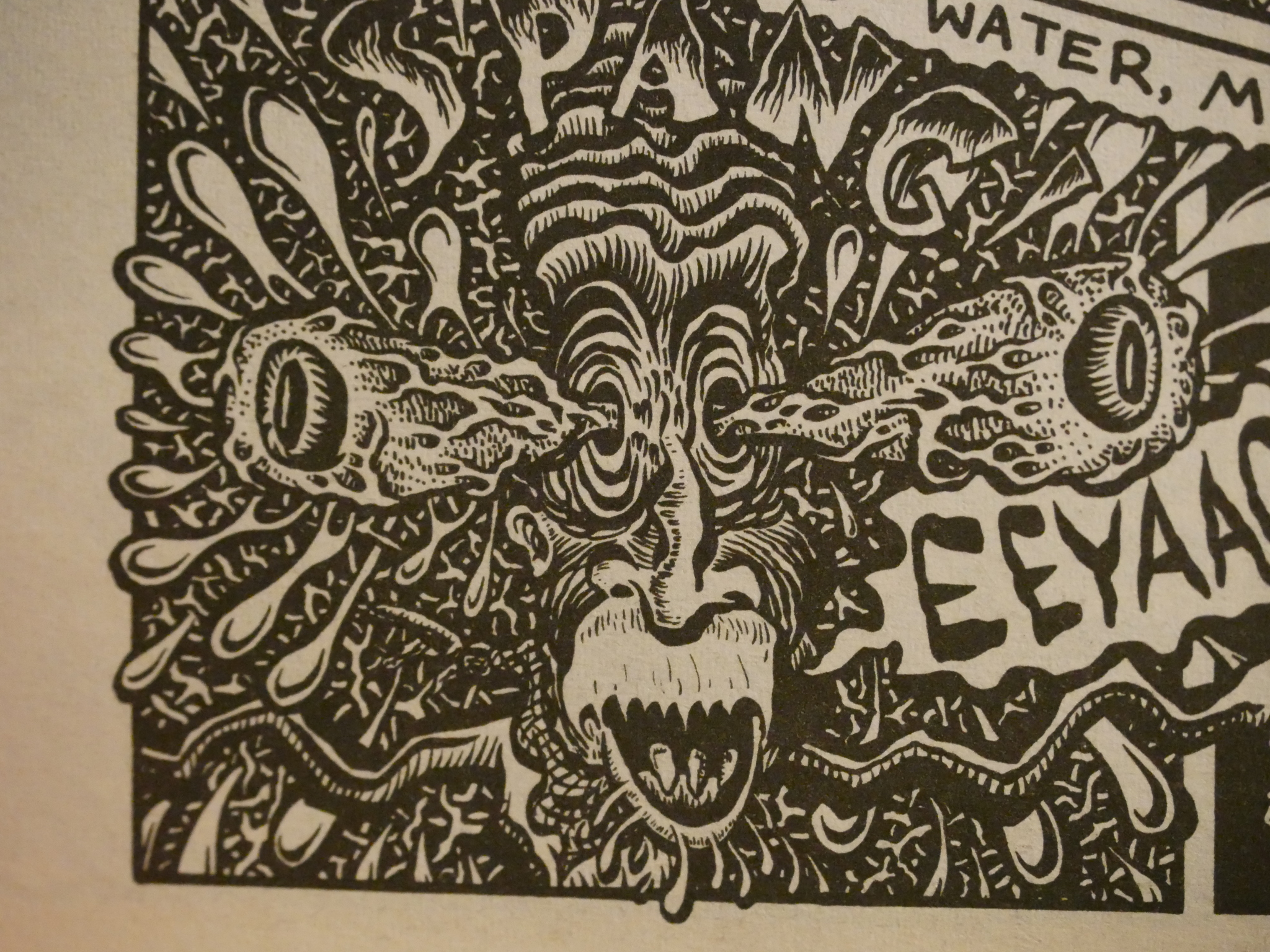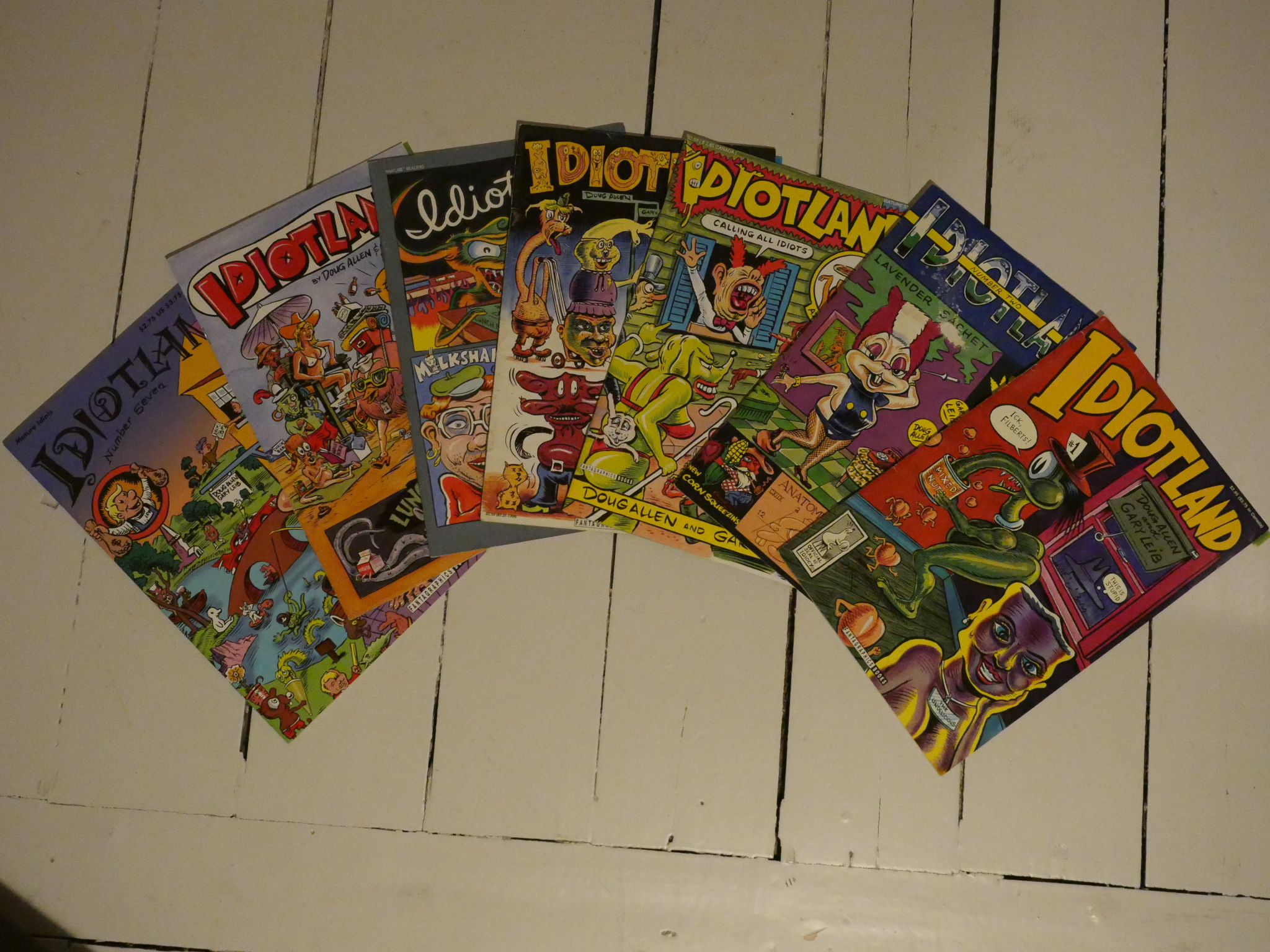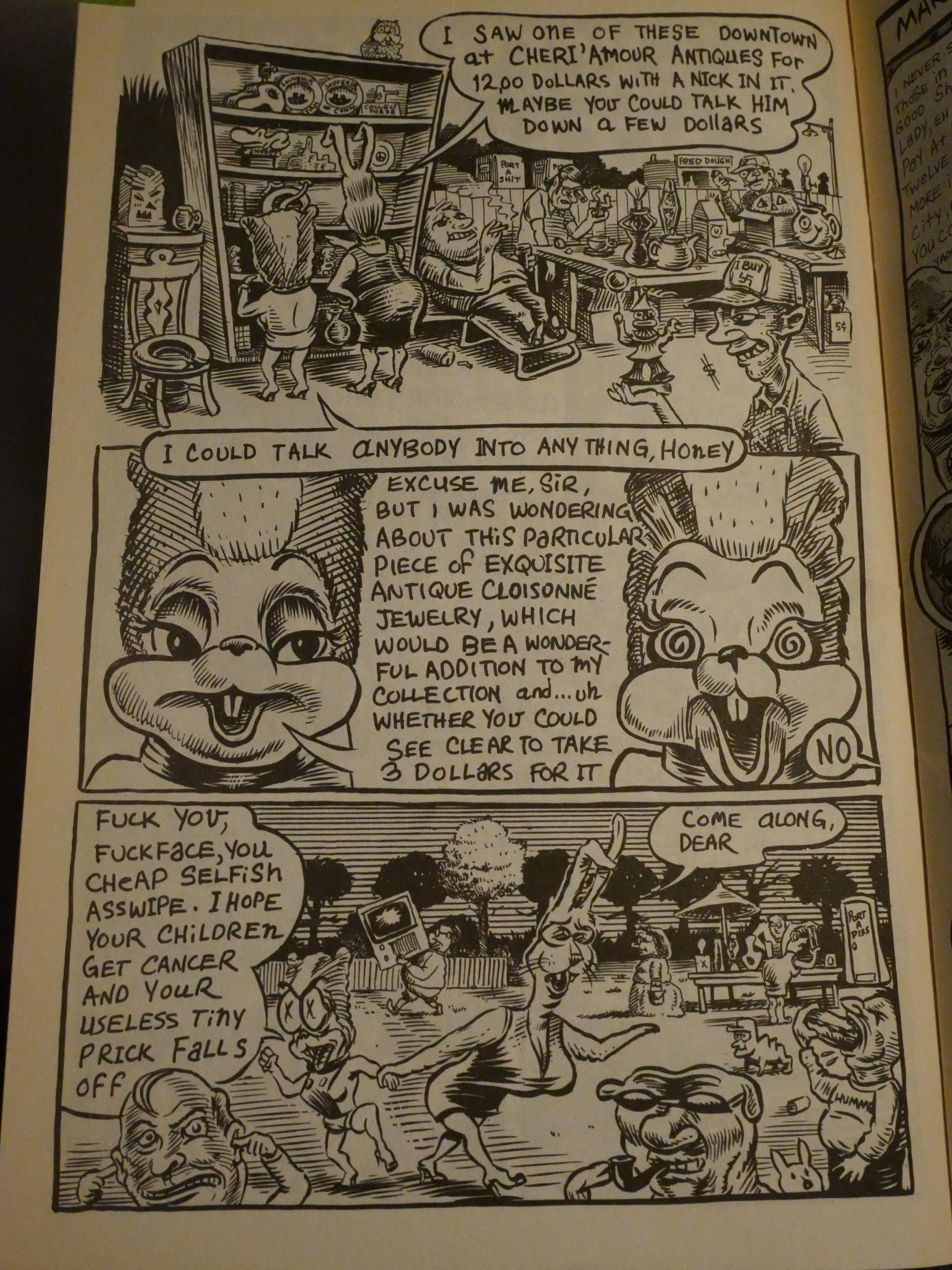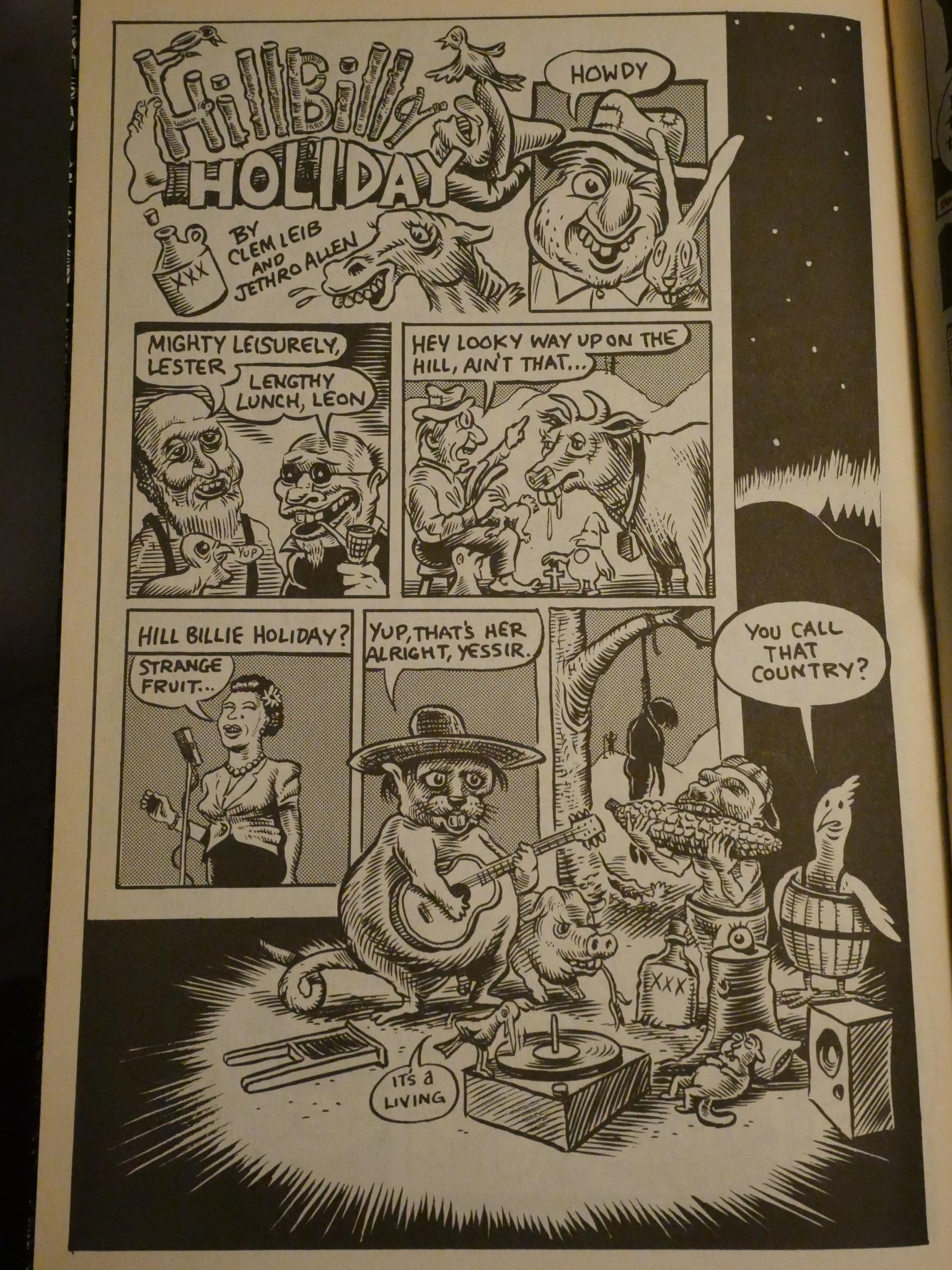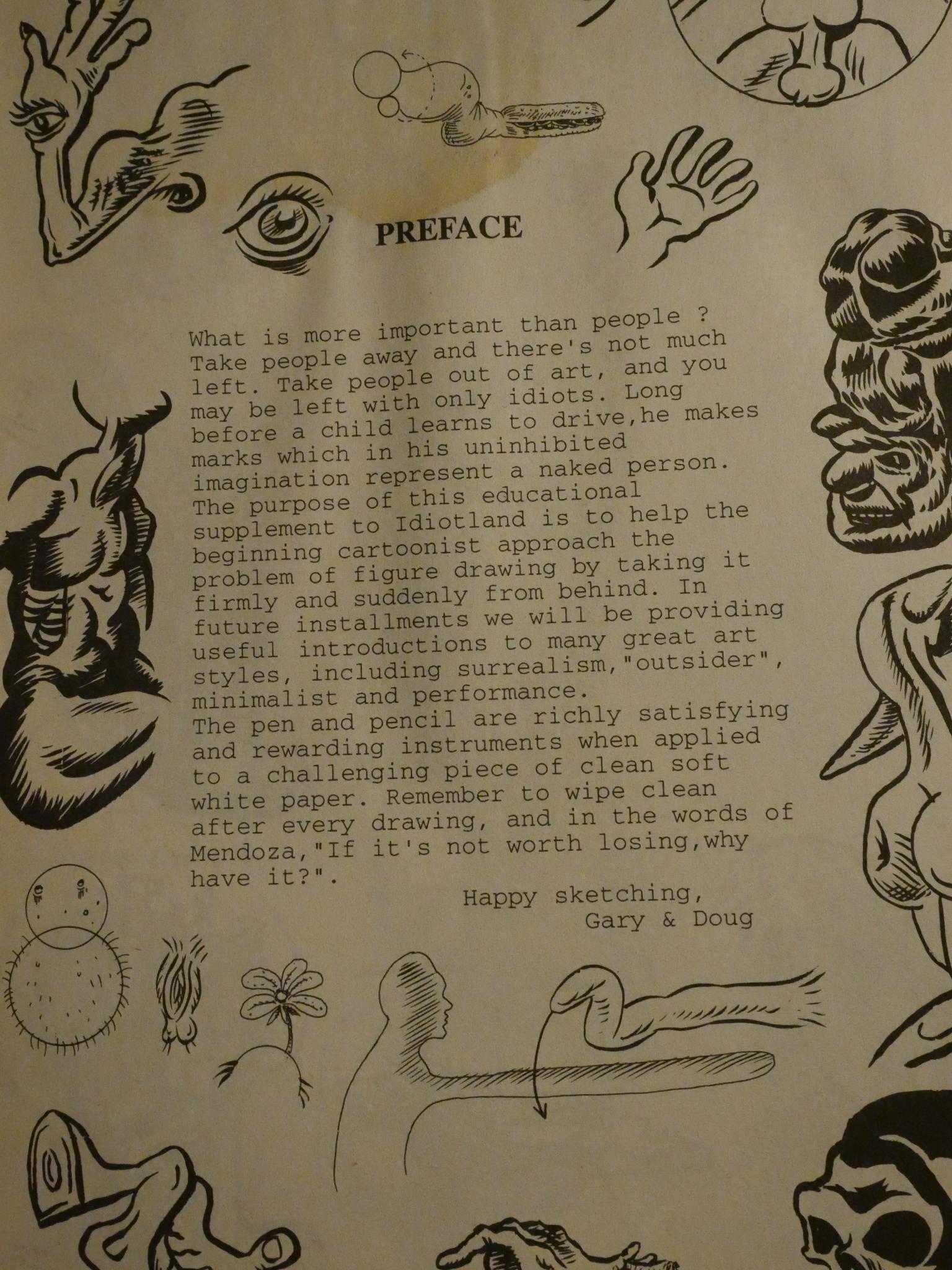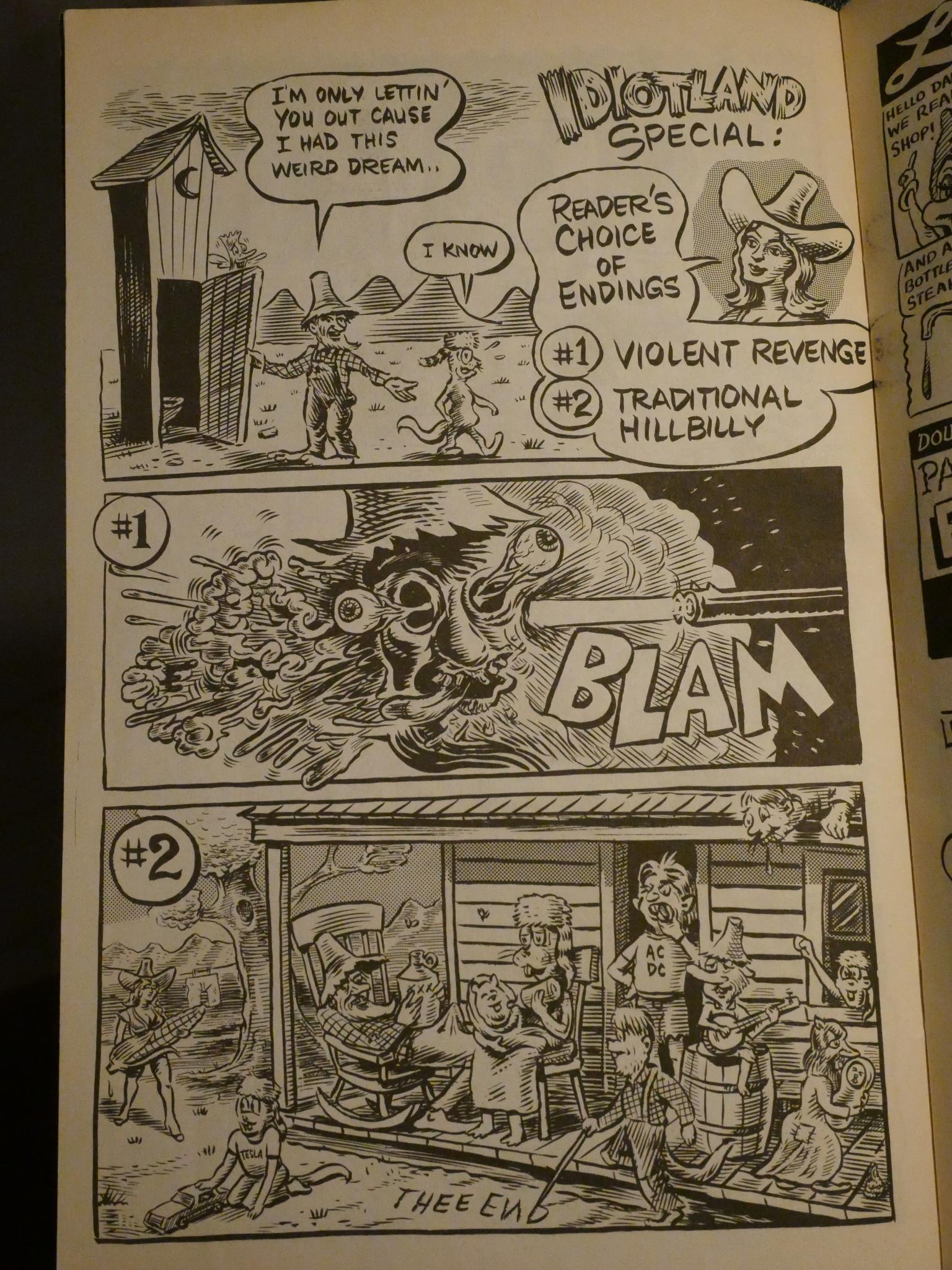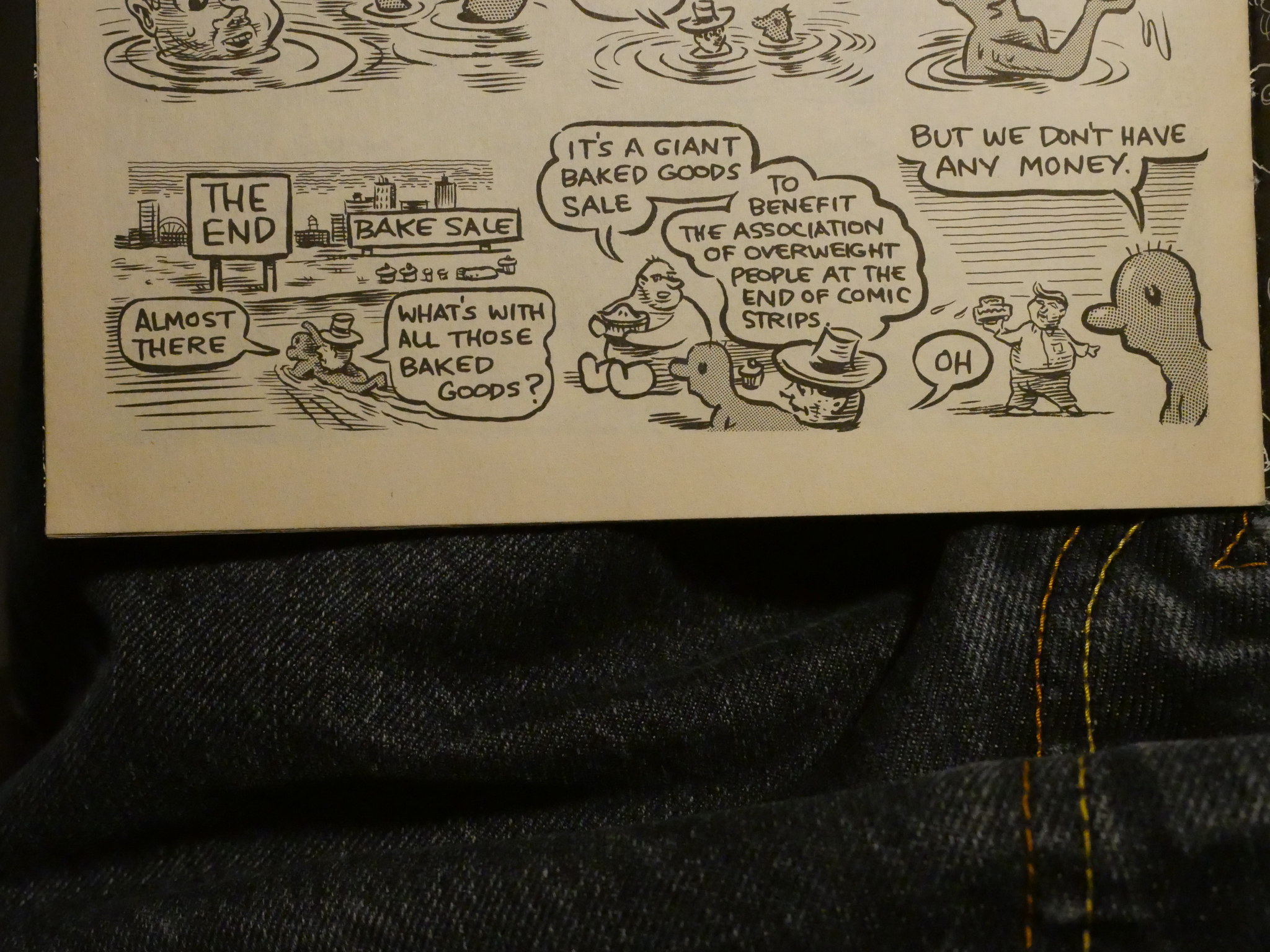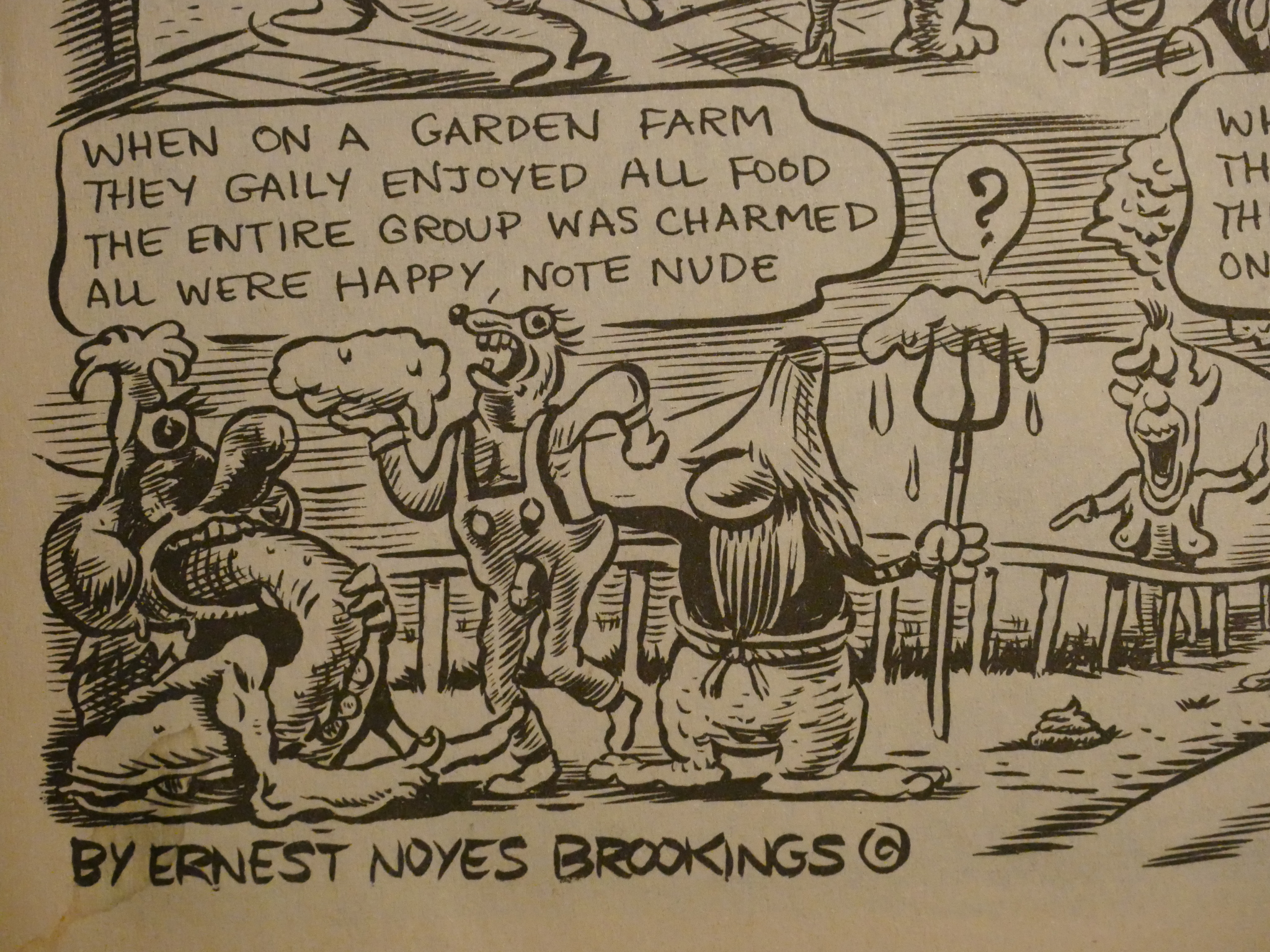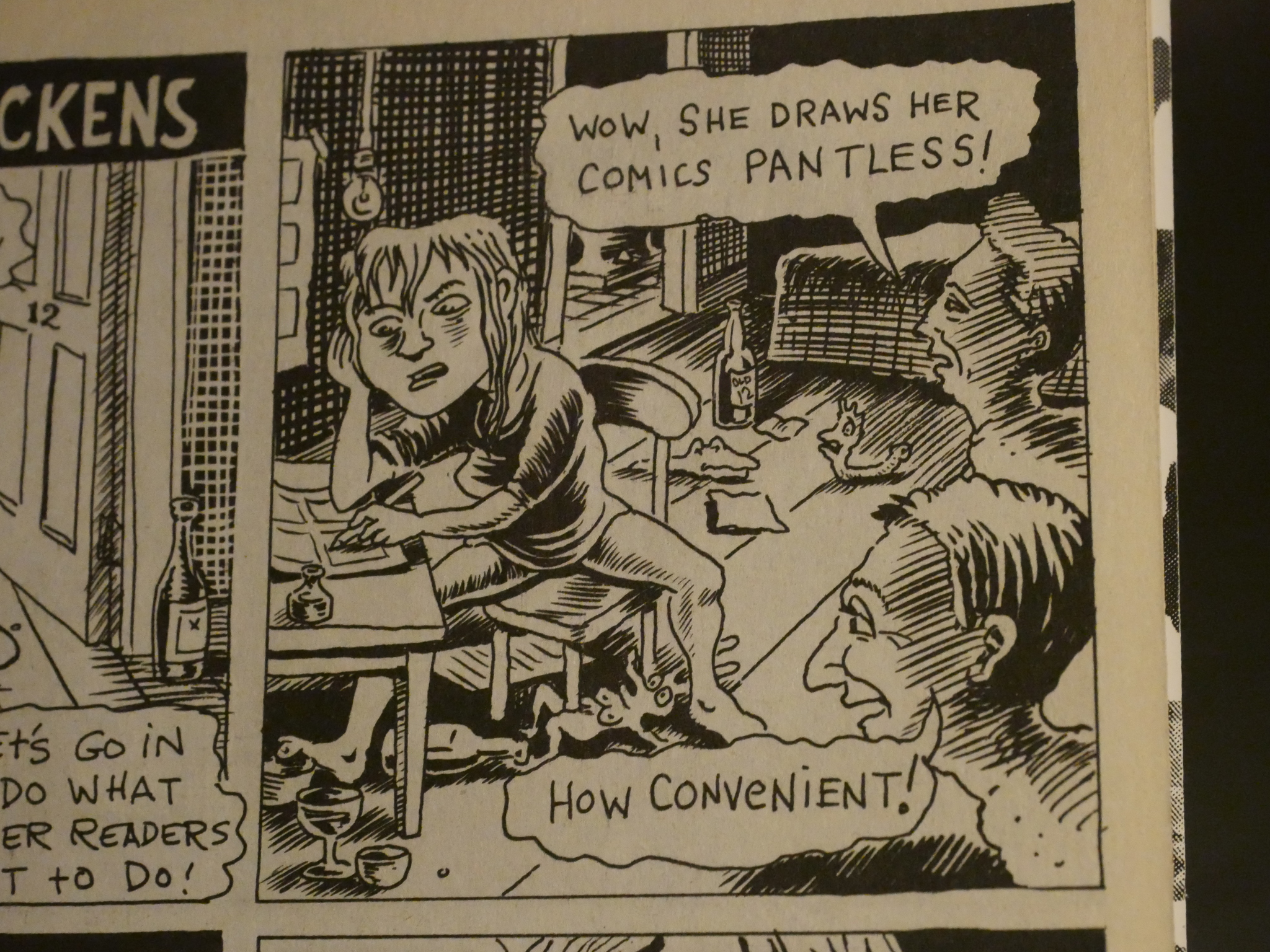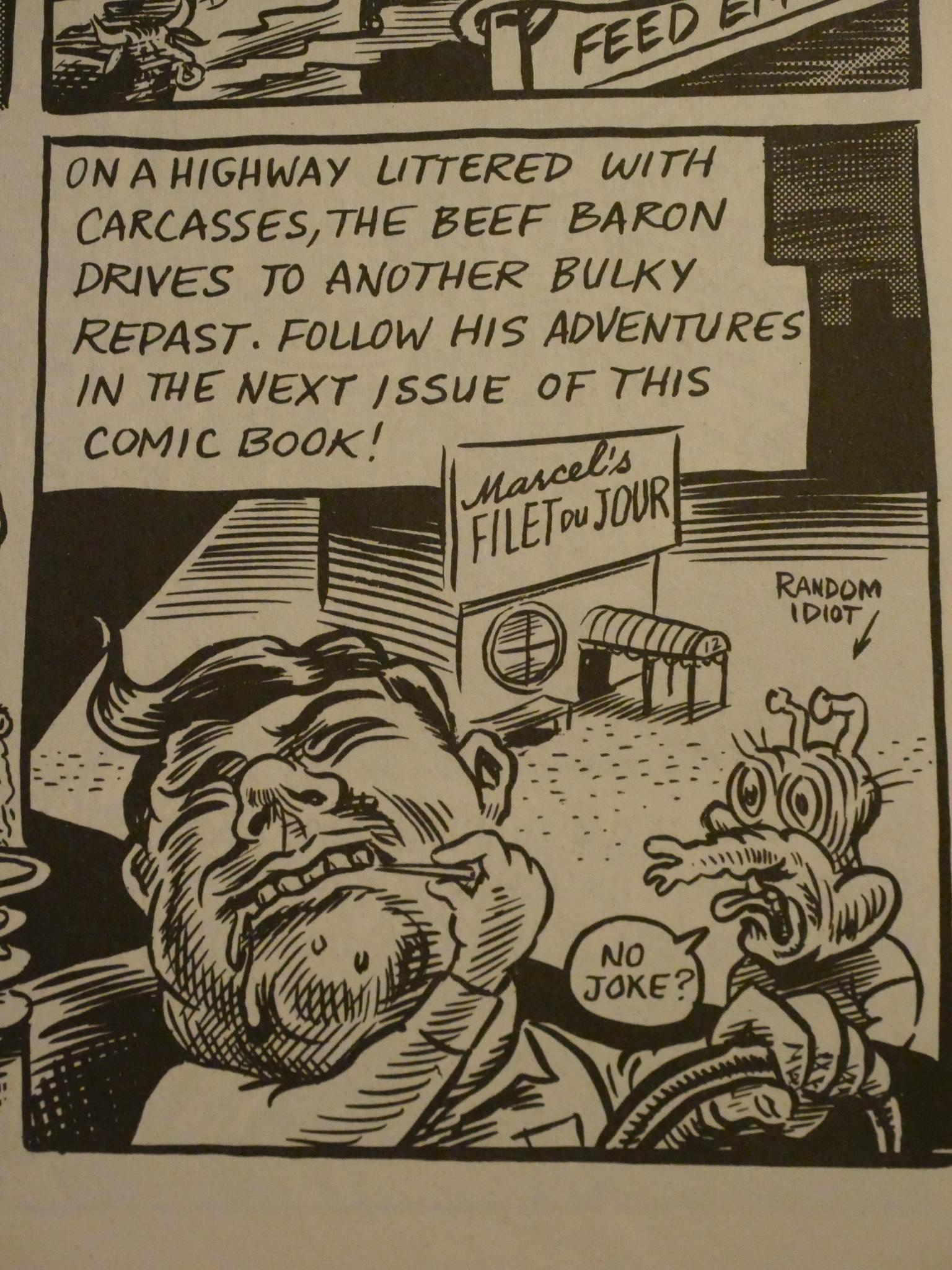Another year gone, and another group of comics that migrated to the “hm, that was interesting” little bookshelf thing in my living room after I’d read them.
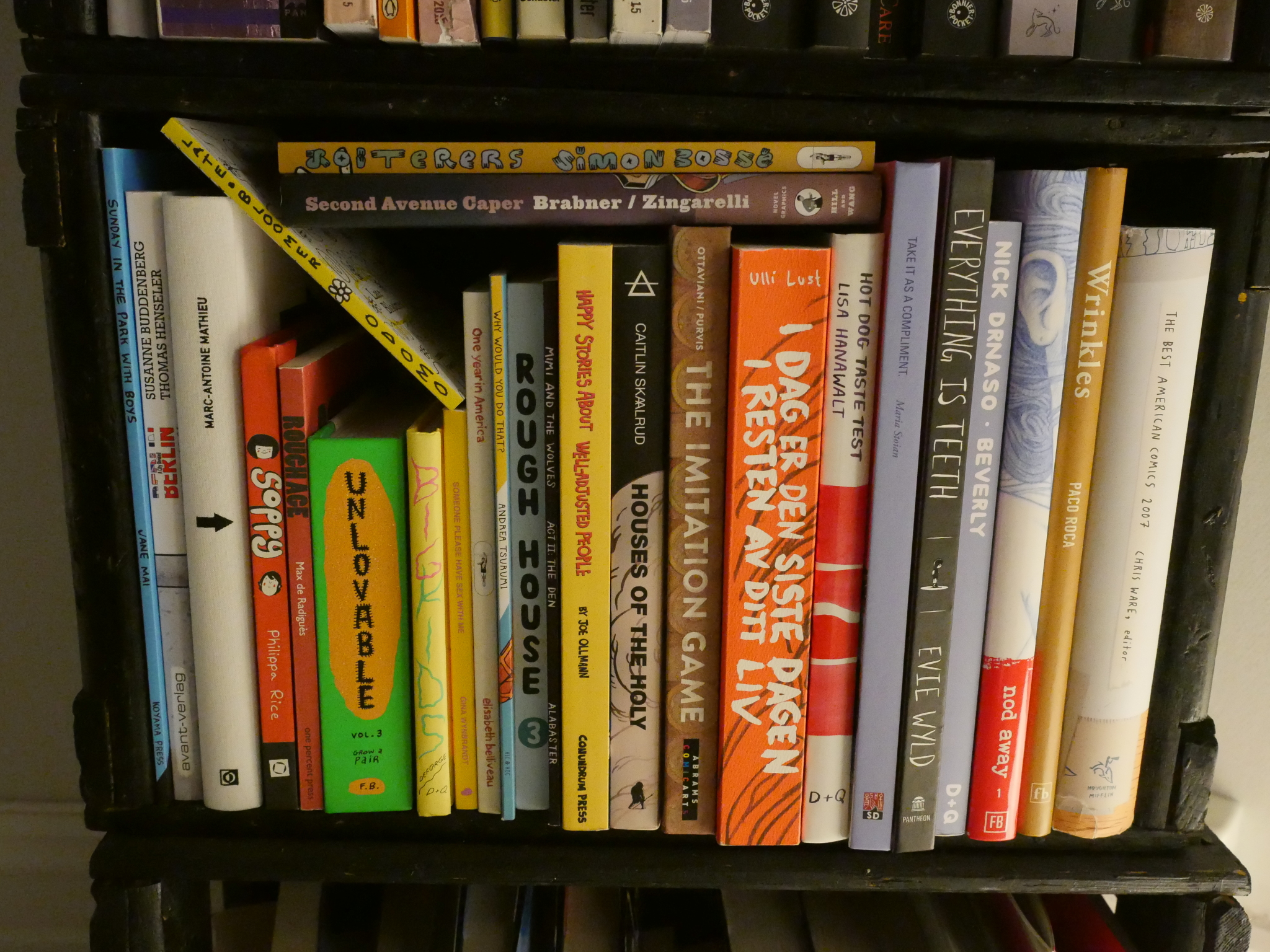
Let’s have a look, first at the books that were actually published in 2016. Since that’s the name of this blog post. Logical, right? I’m very logical.
Late Bloomer by Maré Odomo (Retrofit)
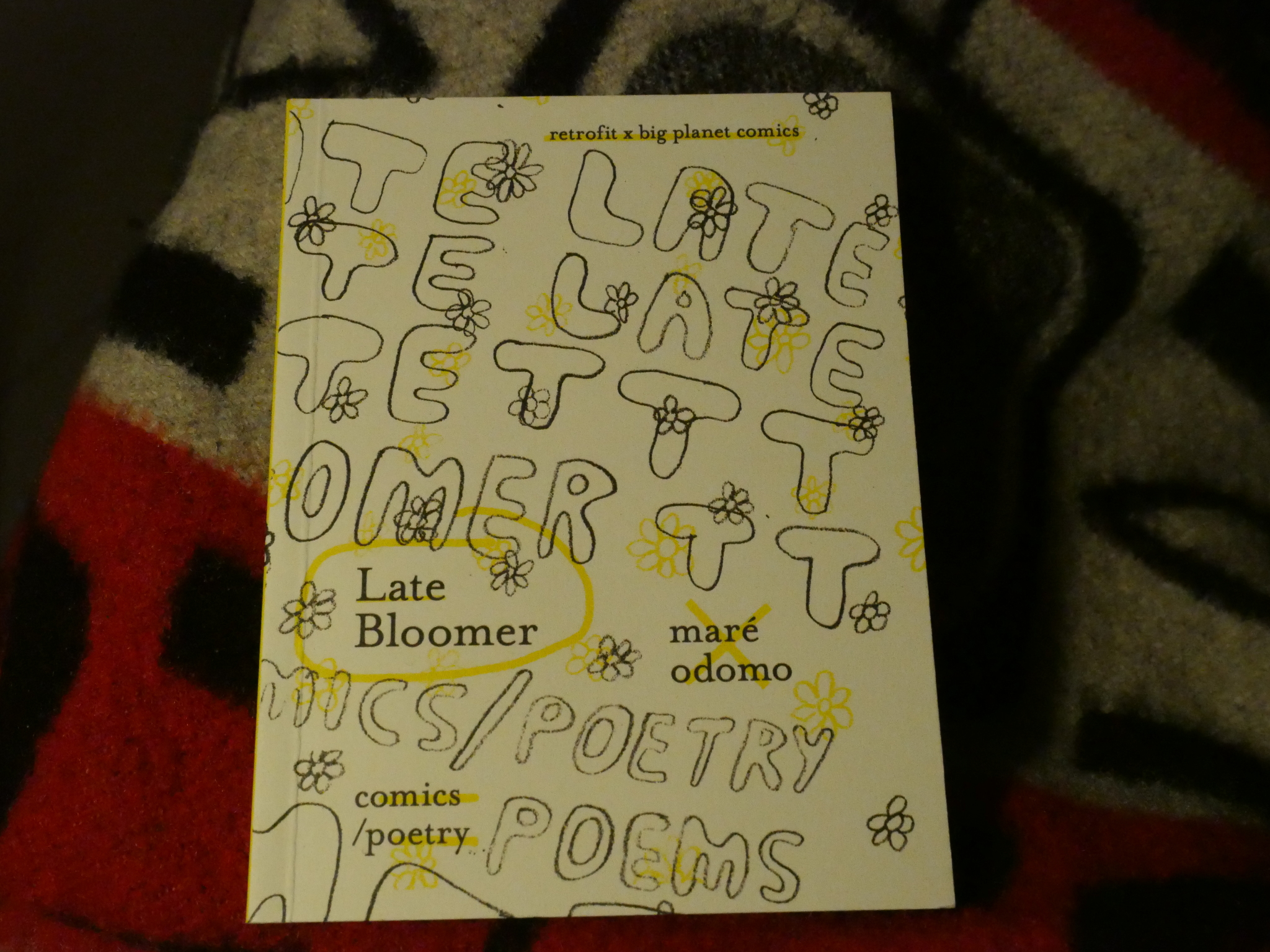

Retrofit has really been killing it the last year or so. They’ve always been publishing interesting stuff, but after they merged with Big Planet, the books are also beautiful in addition to being interesting.
Odomo’s little book (it’s quite small) is intriguing and slightly abstract. As it says on the cover: “comics/poetry poems”, and that’s how it reads, too. It rewards re-readings.
Libby’s Dad by Eleanor Davis (Retrofit)
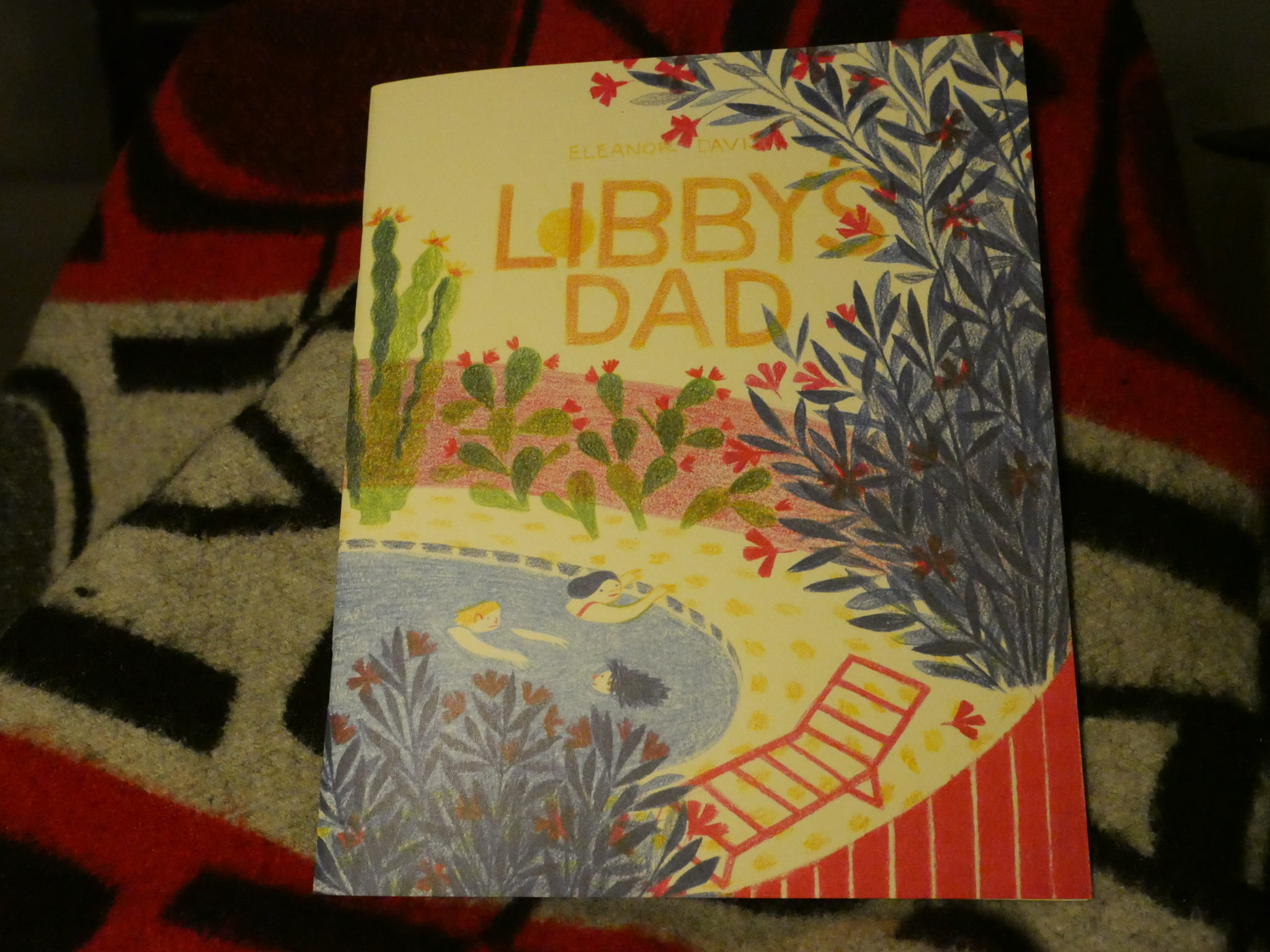
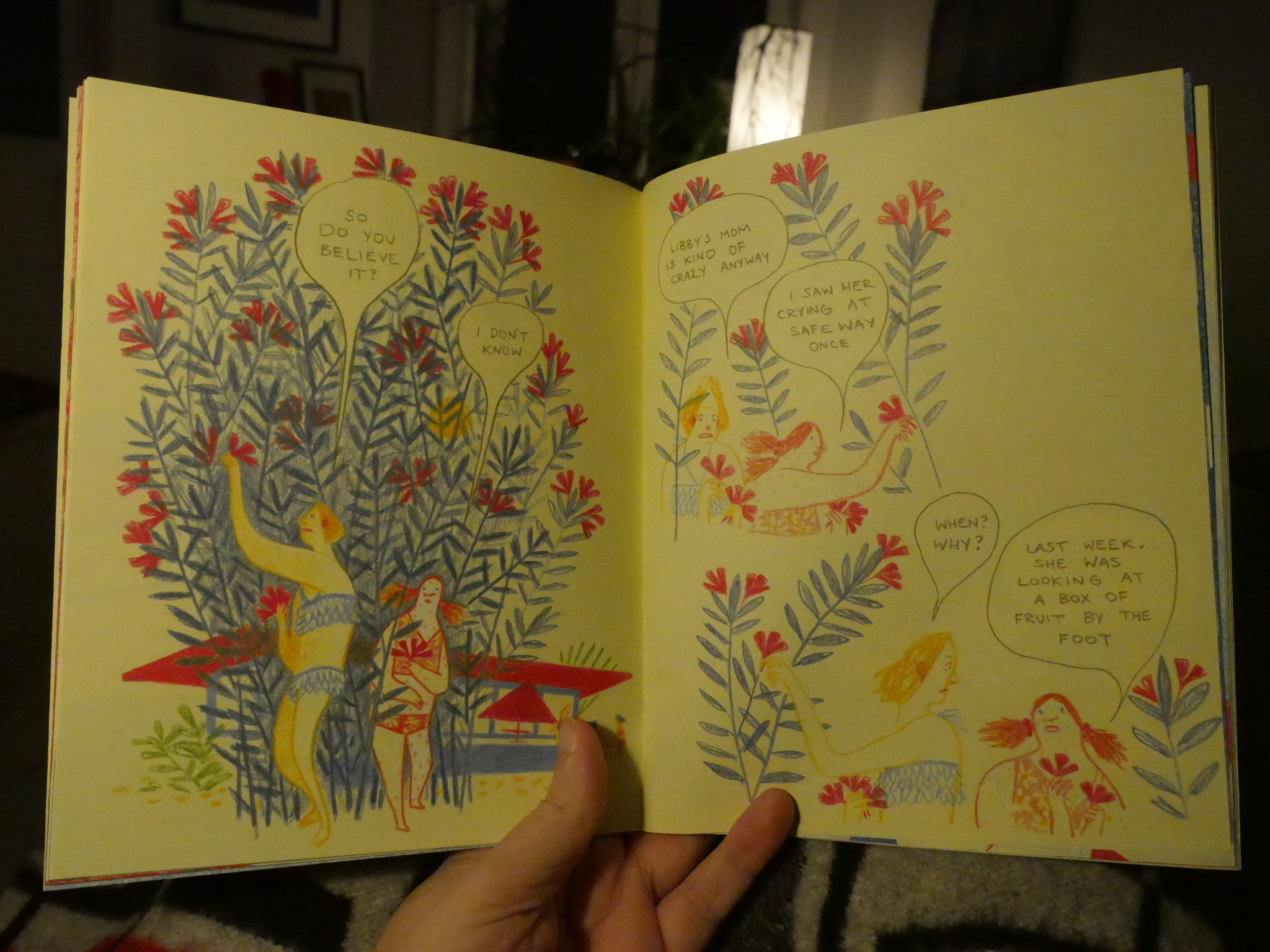
Another perfect little book: It really looks like these coloured pencil drawings have been made directly into the object I’m holding in my hands. It’s like a composition book. And that’s a perfect match for Davis’ claustrophobic tale of children not quite knowing how to respond to rumours of abuse, and feeling they have to take sides.
And so gorgeously drawn, too.
Our Mother by Luke Howard (Retrofit)
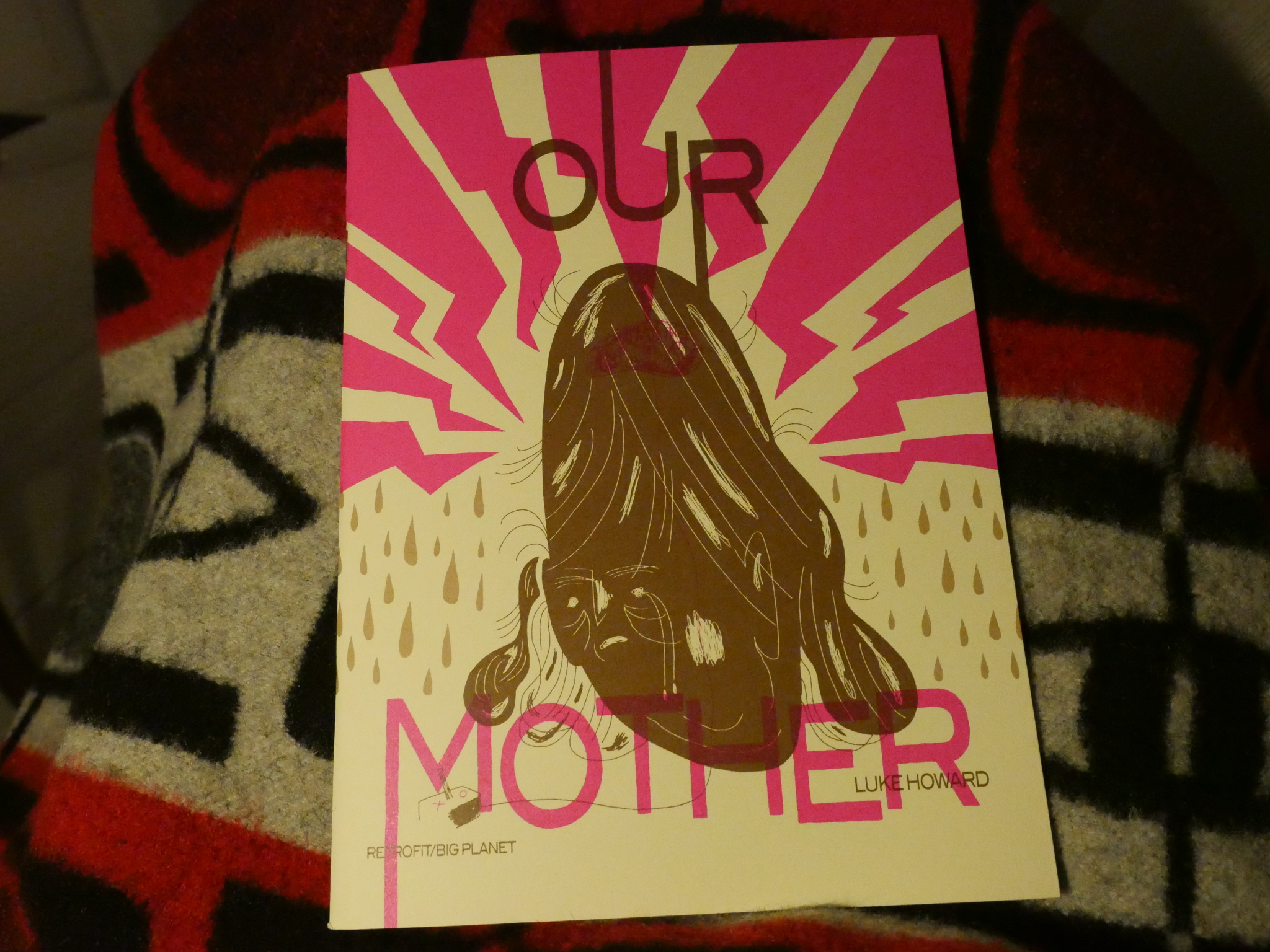

Hey! Did the entire Retrofit/Big Planet output this year end up in that little bookshelf? Perhaps I should just link to their website and go “Here. Here’s the best.” It would save time.
Howard’s comic book reads like nothing else. It’s like a distracted mind that’s trying to avoid thinking about certain subjects. It hits hard, but it’s funny, too. As for the artwork, I think it’s great, although we may have hit Peak Michael Deforge Influence in comics now…
Hellbound Lifestyle by Alabaster Pizzo & Kaeleigh Forsyth (Retrofit)
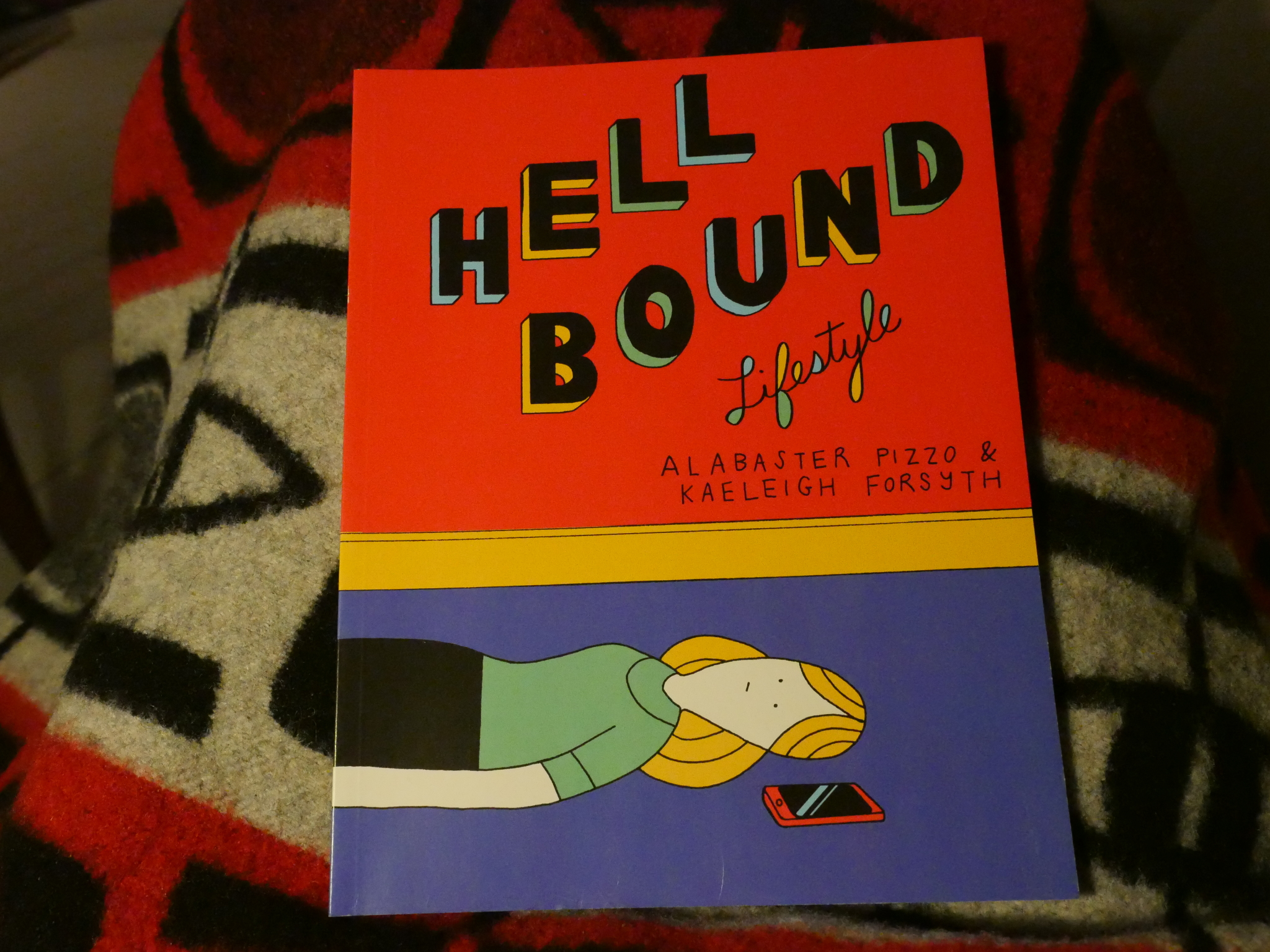
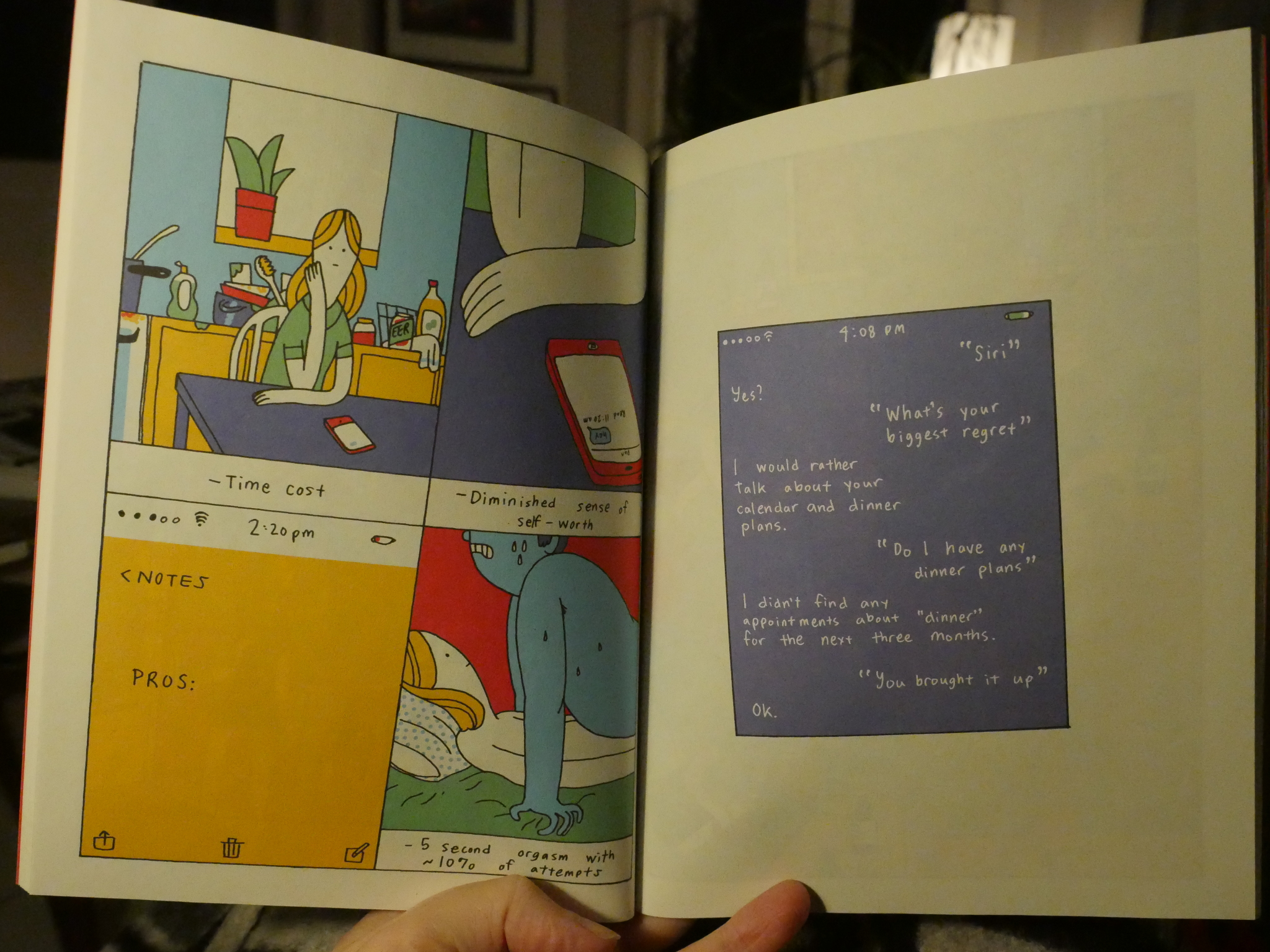
Noo! I swear I had no idea that there was this much Retrofit here…
And speaking of Peak Deforge Influence… But this is a very different work; all modern with the computers and stuff. The kind youngsters like. And, again, funny and heartbreaking.
The Red Virgin and the Vision of Utopia by Mary M. Talbot and Bryan Talbot (Dark Horse)

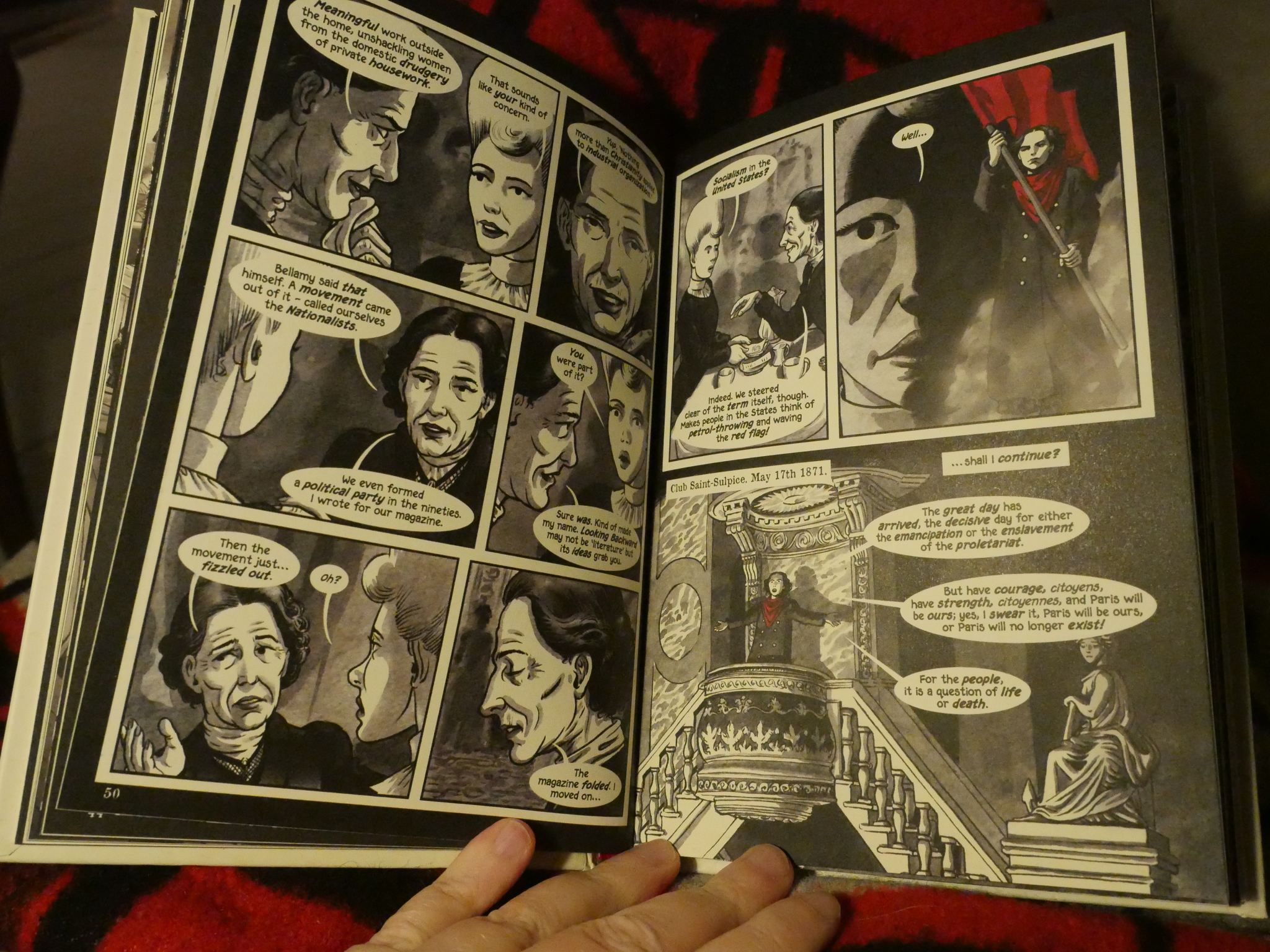
Phew! Not Retrofit! Instead it’s a surprise appearance by a book published by Dark Horse, and it’s way less experimental than the other books so far in this article.
It’s a biography of Louise Michel (kinda), and it’s just so darned interesting. I knew nothing about her, and not that much about the Paris Commune. It’s told in a quite straightforward manner that could, perhaps, have been somewhat dull if it… just didn’t work as well as it does. (That sentence should probably win an award for Most Insightful Critical Analysis Ever.)
Comics biographies have really taken off the last few years, topping sales charts and “best of” lists. I find most of them rather boring, but I see why they’re so popular. I mean, the “weighty tome about worthy person” section in any bookstore is huge, so there’s a market for it. And why not in comics form?
Why Would You Do That? by Andrea Tsurumi (Hic + Hoc)
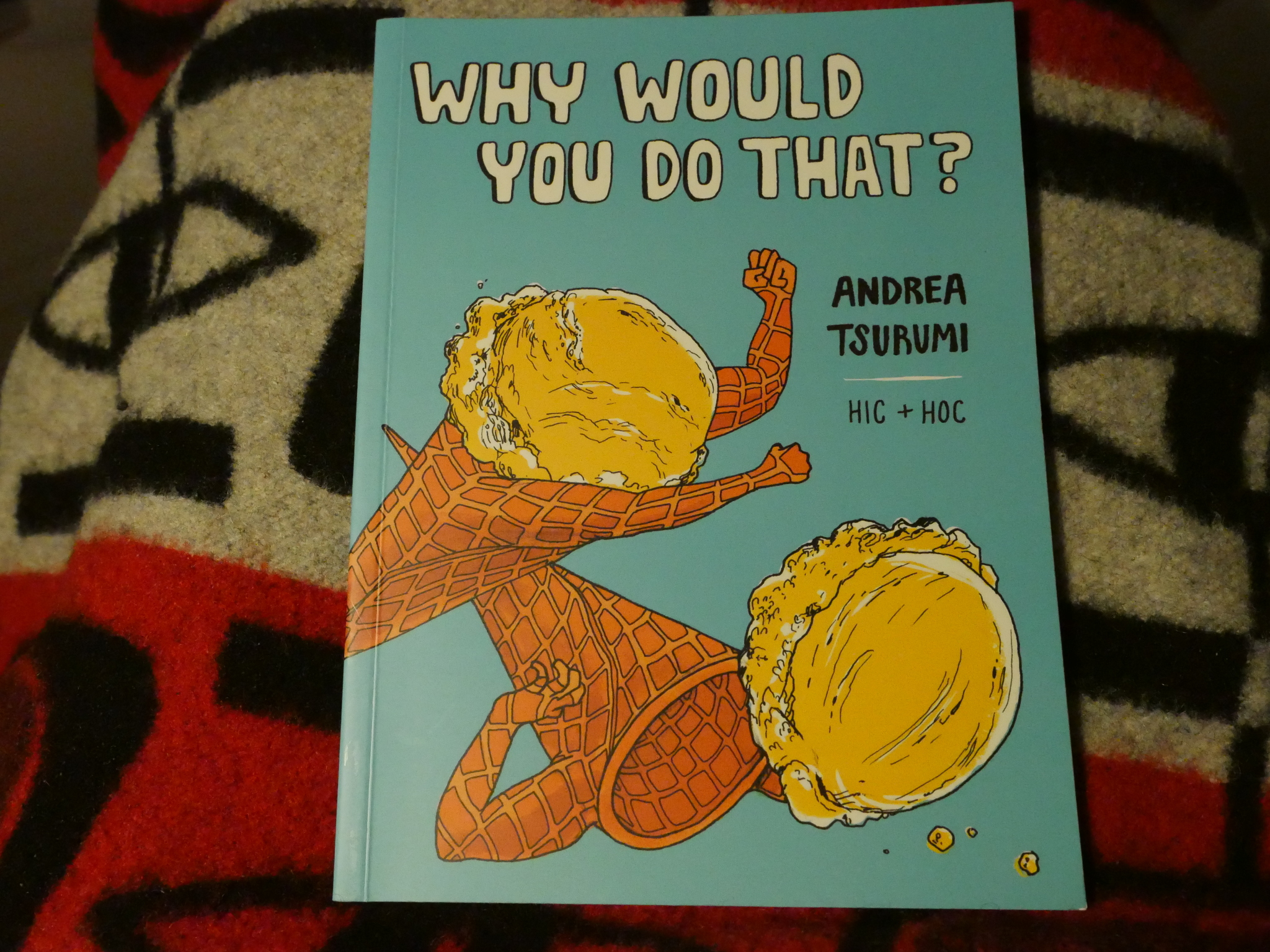
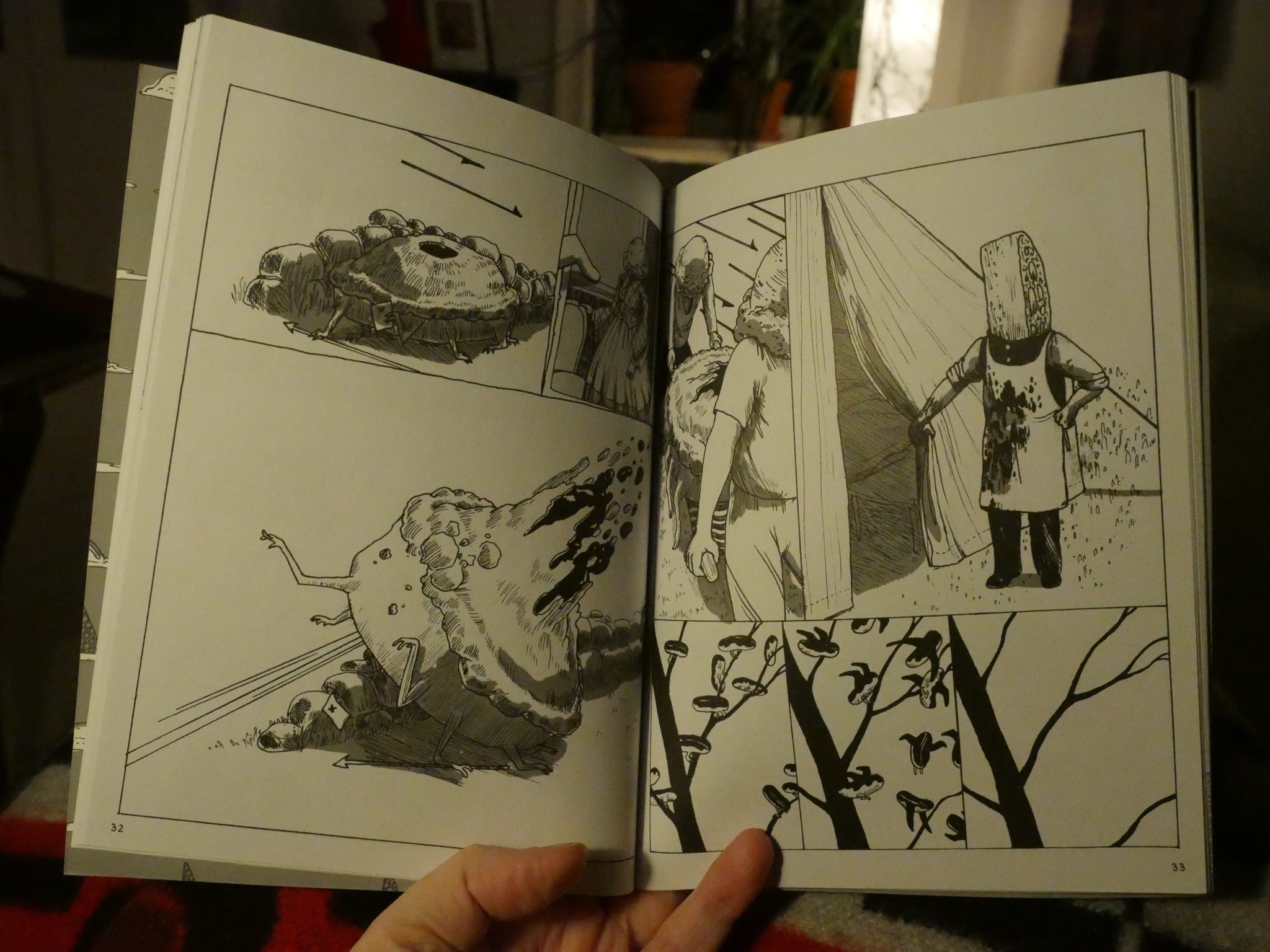
A little book of delightfully absurd little stories. It’s not as much “dream logic” as “whaaa logic”, drawn in a number of different art styles. And it’s funny.
Someone Please Have Sex With Me by Gina Wynbrandt (2d cloud)
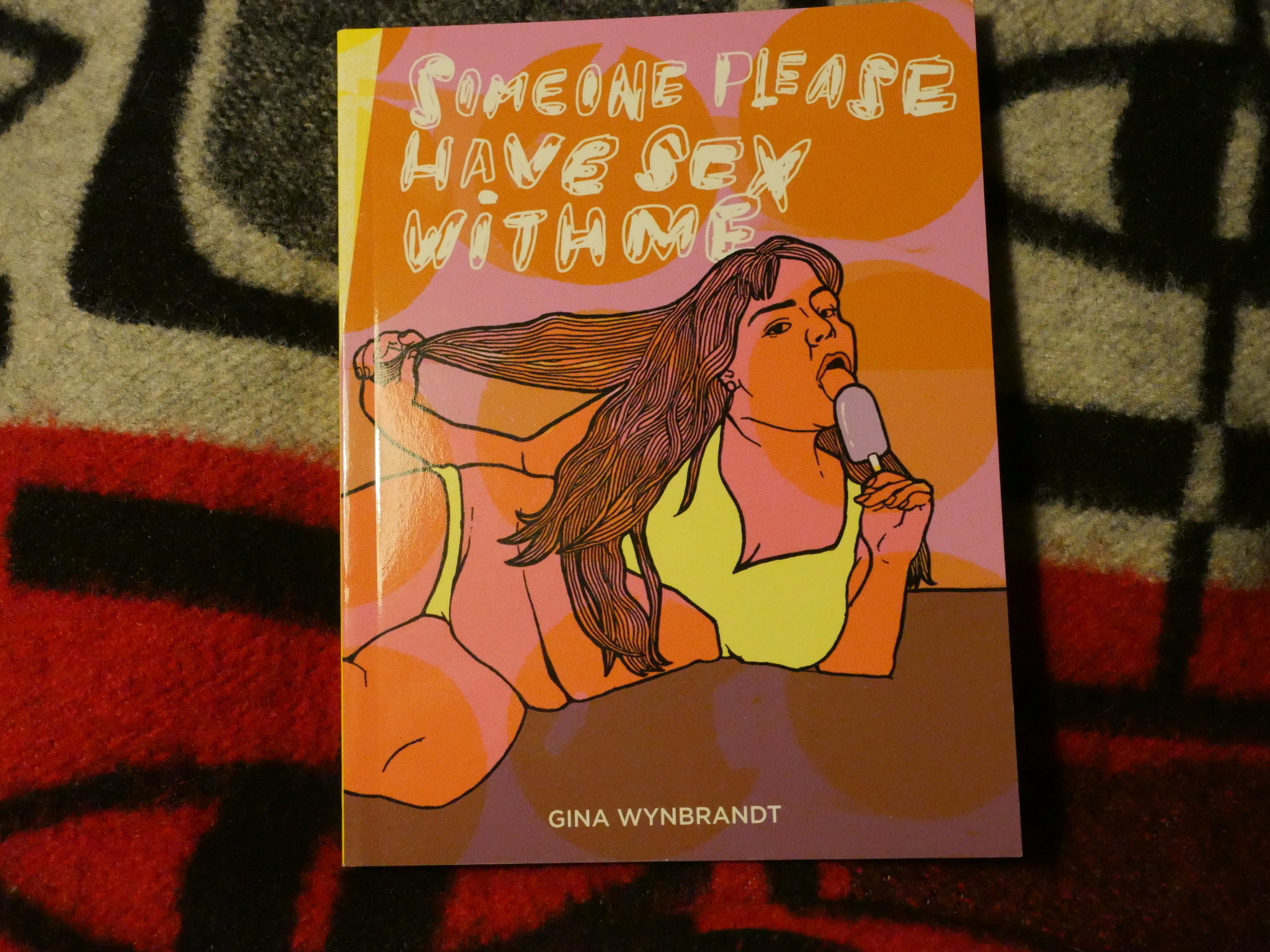

Hm, not as many 2d cloud books this year. Did I forget to sign up for one of the Kickstartererers, or did their output not quite gel with me? I seem to recall them dominating my “best of 2015” posts like Retrofit are doing this year…
Anyway! This book is excruciating and excruciatingly funny. You basically know most everything you need to know by looking at the cover: That’s a woman who really, really wants somebody to have sex with her. The artwork is pleasingly stiff and very posed, which works wonderfully for these stories. It’s sometimes so embarrassing that I had to hide behind a pillow while reading it, though.
Big Kids by Michael Deforge (Drawn & Quarterly)
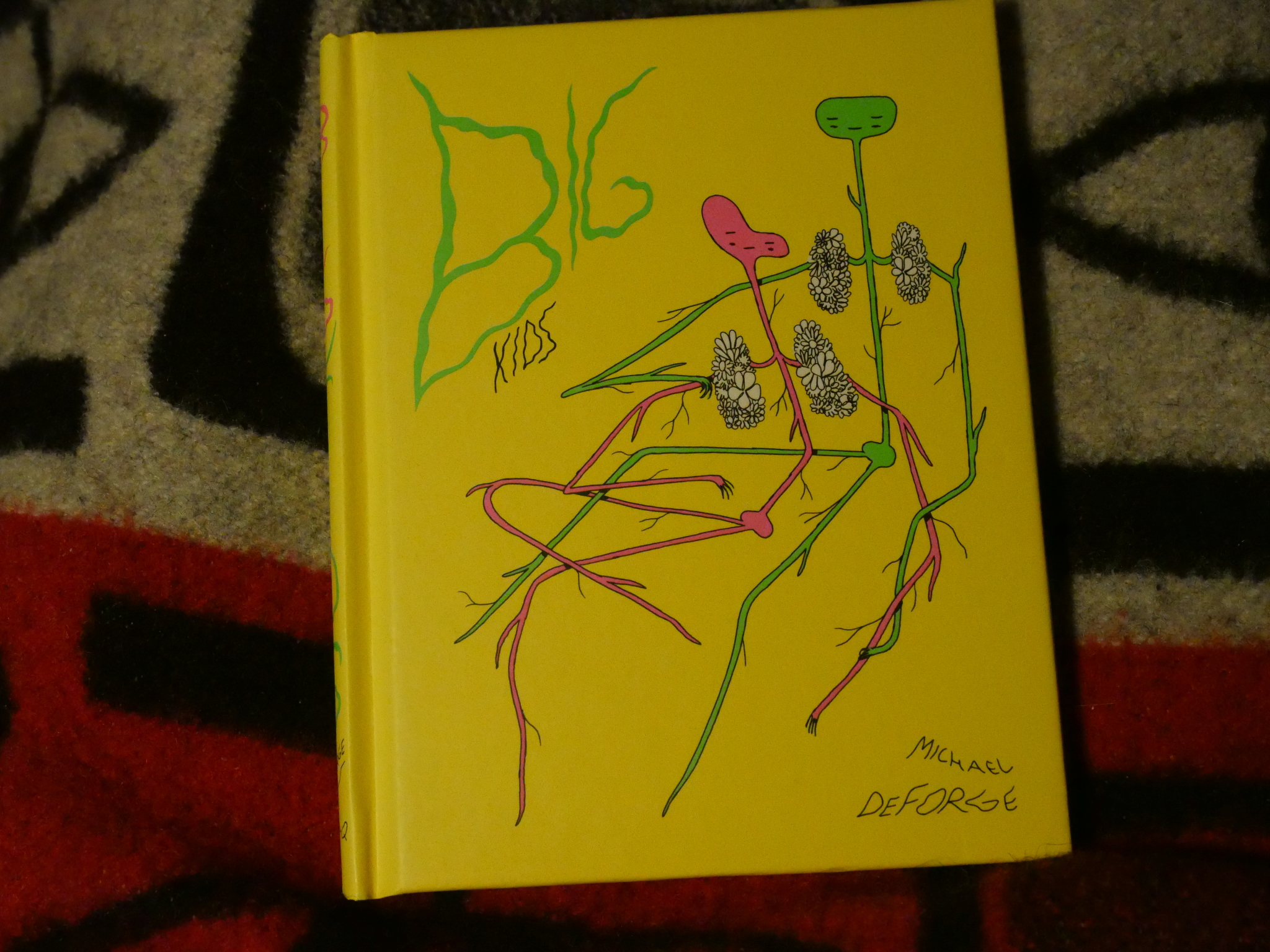
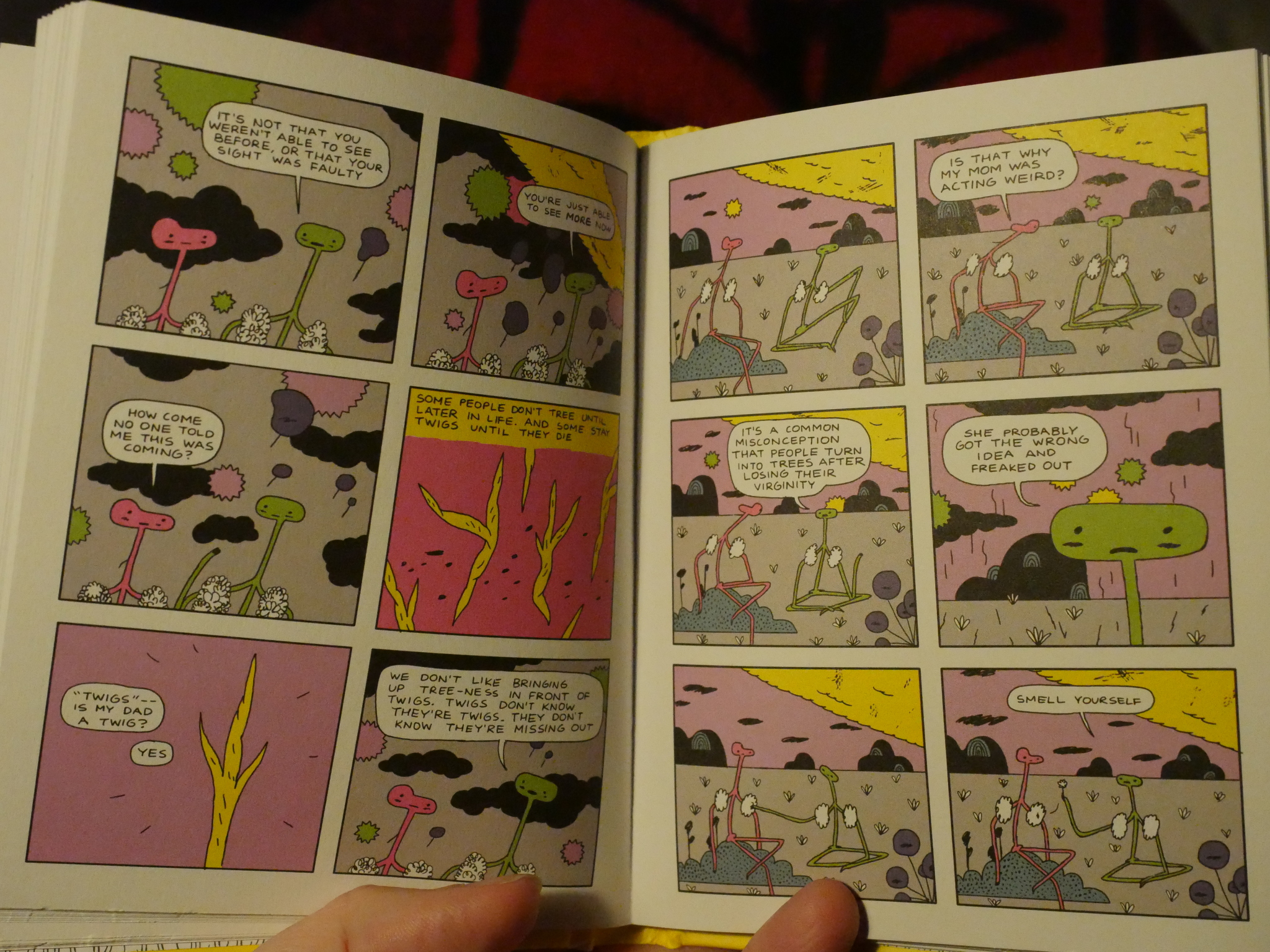
Well, you can’t have a list like this without this year’s Deforge book, but this time it’s even better than usual. The artwork continues to be beautiful, and this time it’s a longer story about… growing up, I guess. In a totally fucked up Deforge way. What’s not to like?
The Imitation Game by Jim Ottaviani and Leland Purvis (Abrams)
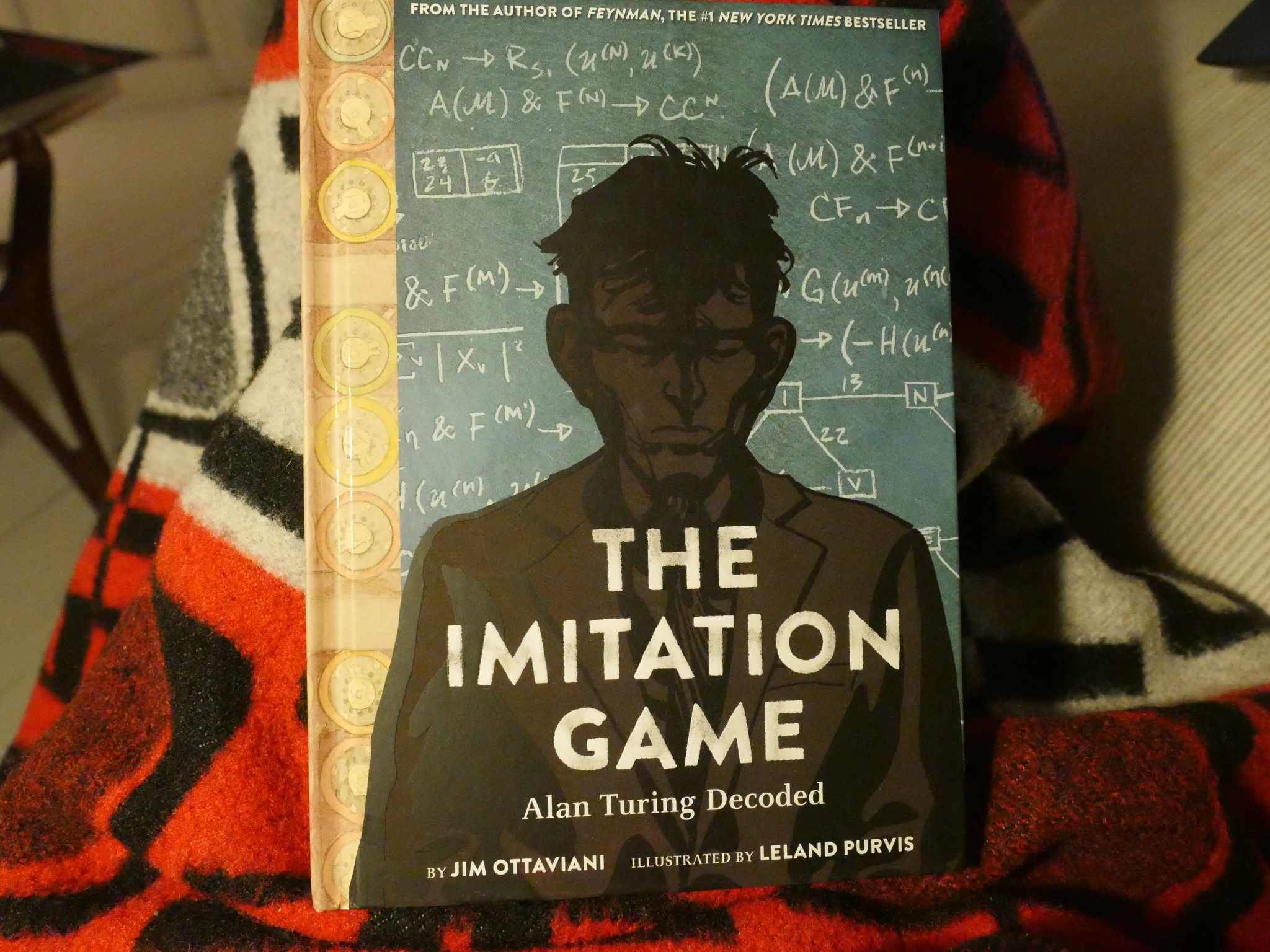
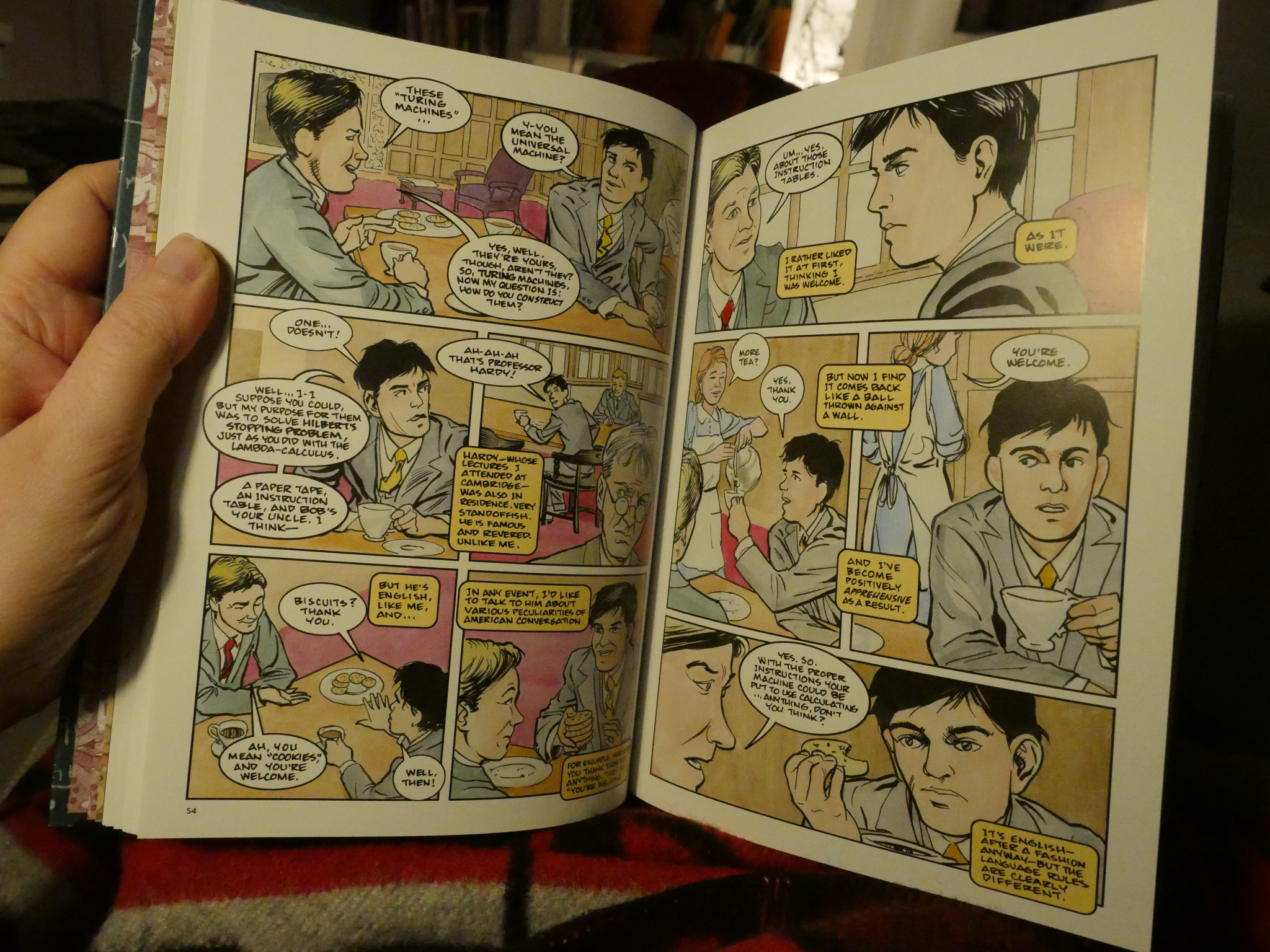
Ottaviani has been writing comics about science and scientists for decades now, and he’s really good at it. That is, he manages to convey their insights in an understandable way, and without dropping into lecture mode. This book is more about Turing’s difficult life than it is about science, but it’s still rather interesting.
Take It As A Compliment by Maria Stoian (Singing Dragon)
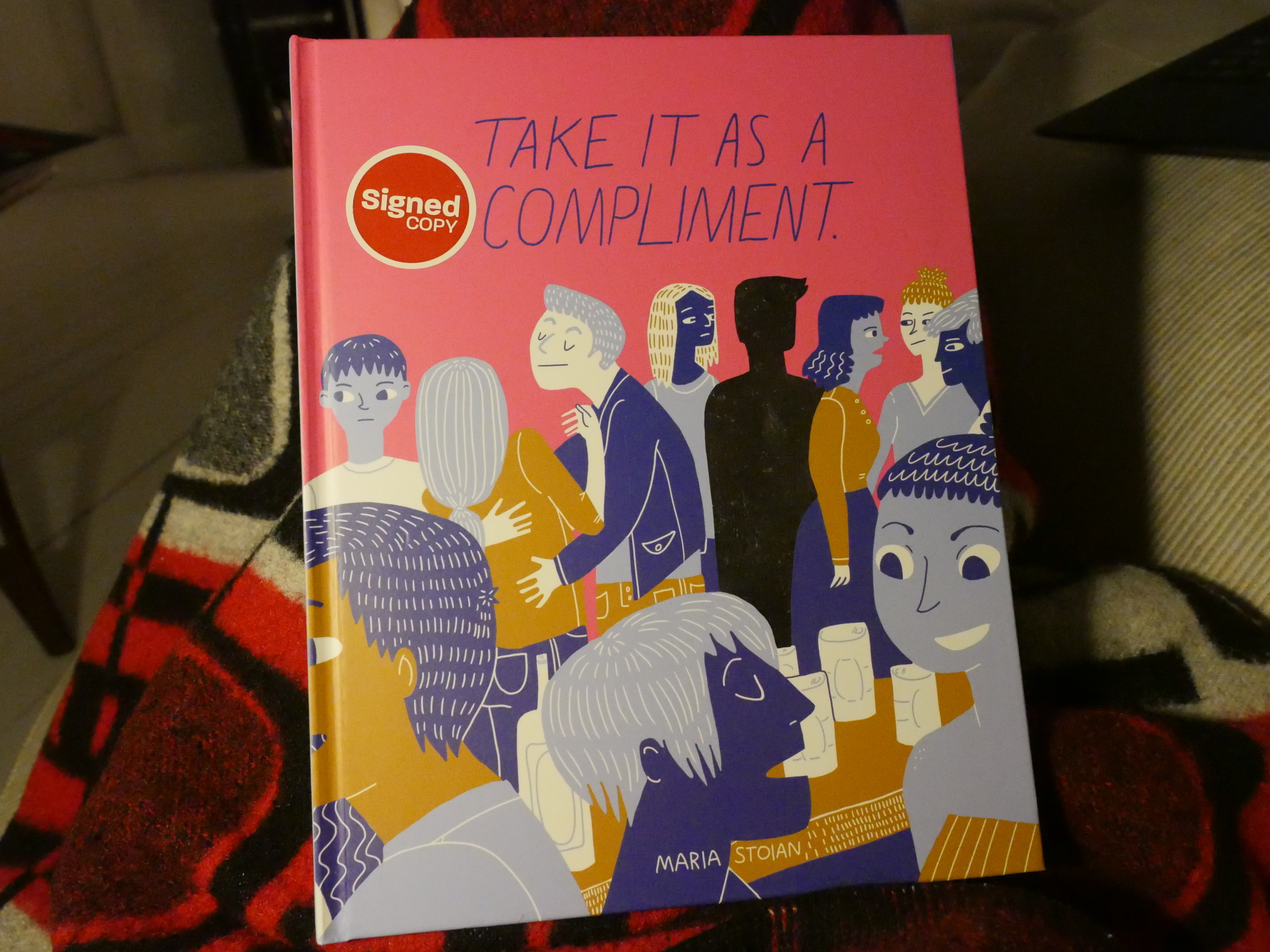

In this book, Stoian illustrates twenty different stories about sexual abuse apparently told to her by different people. Sounds fun, eh? While a project like this may have been a deadening reading experience, Stoian illustrates each story in a radically different art style. And they are all good.
Hot Dog Taste Test by Lisa Hanawalt (Drawn & Quarterly)

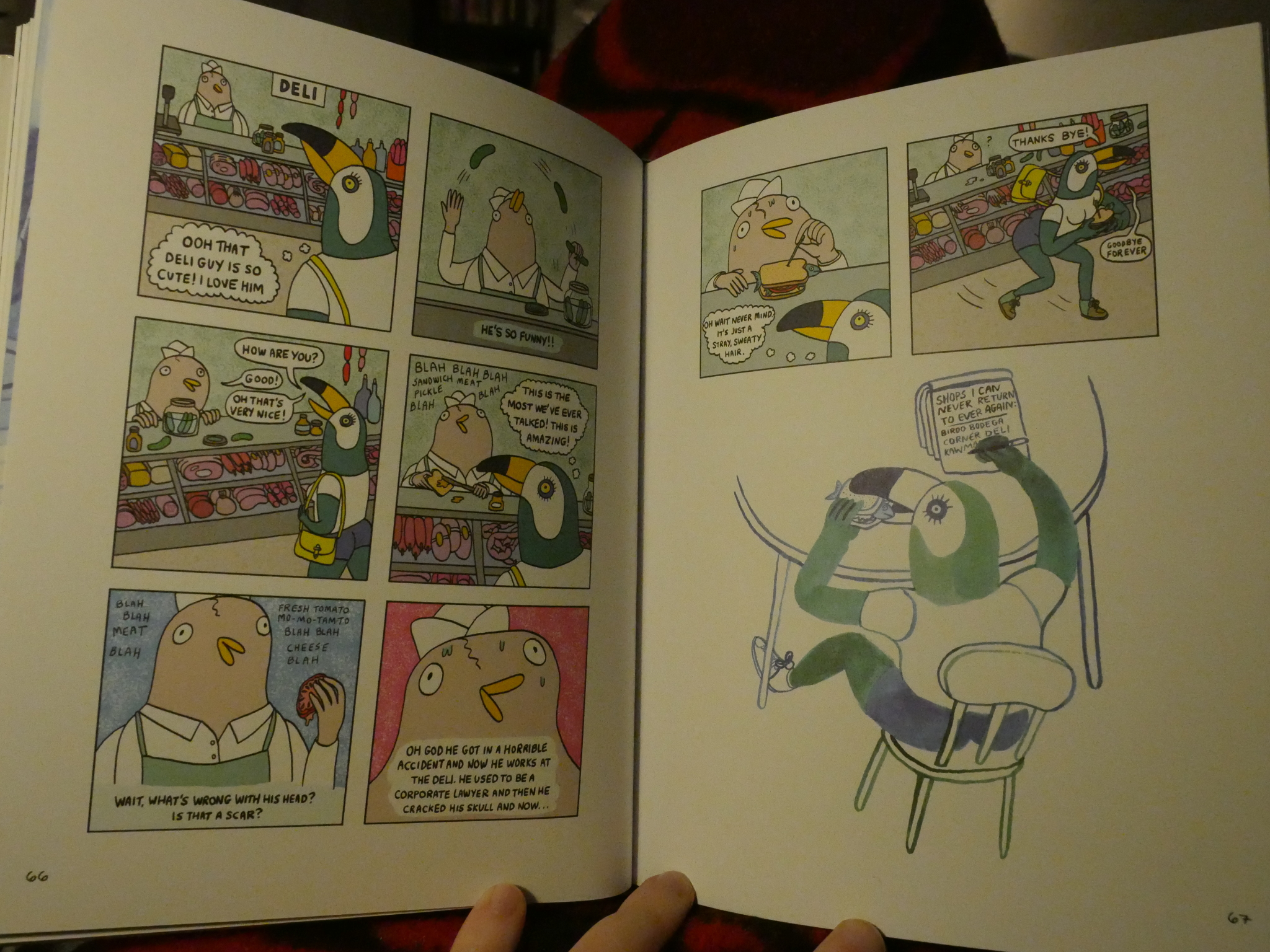
This has officially been declared as the funnies comic book of the year, but it’s also beautiful.
We All Wish For Deadly Force by Leela Corman (Retrofit)
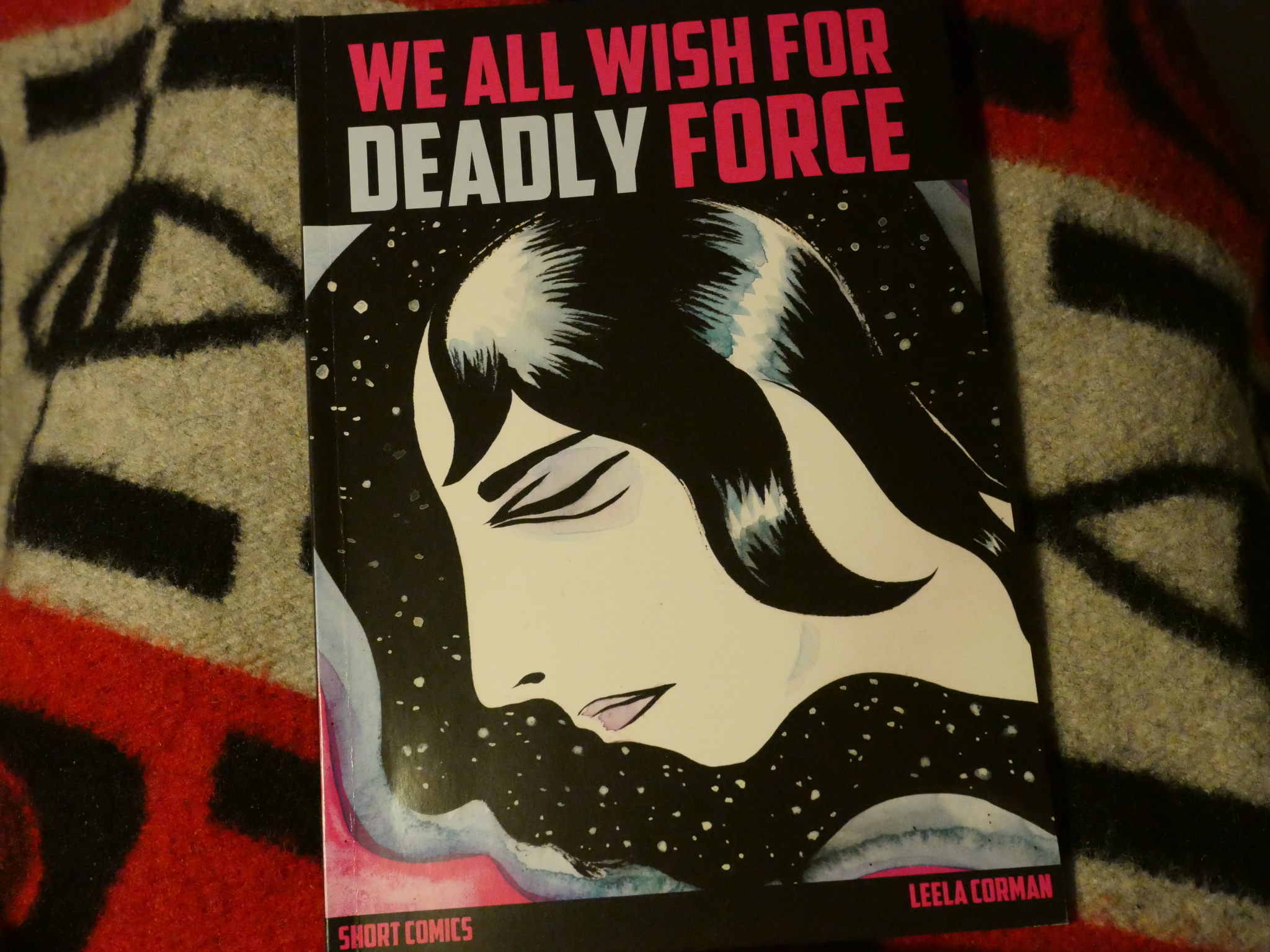
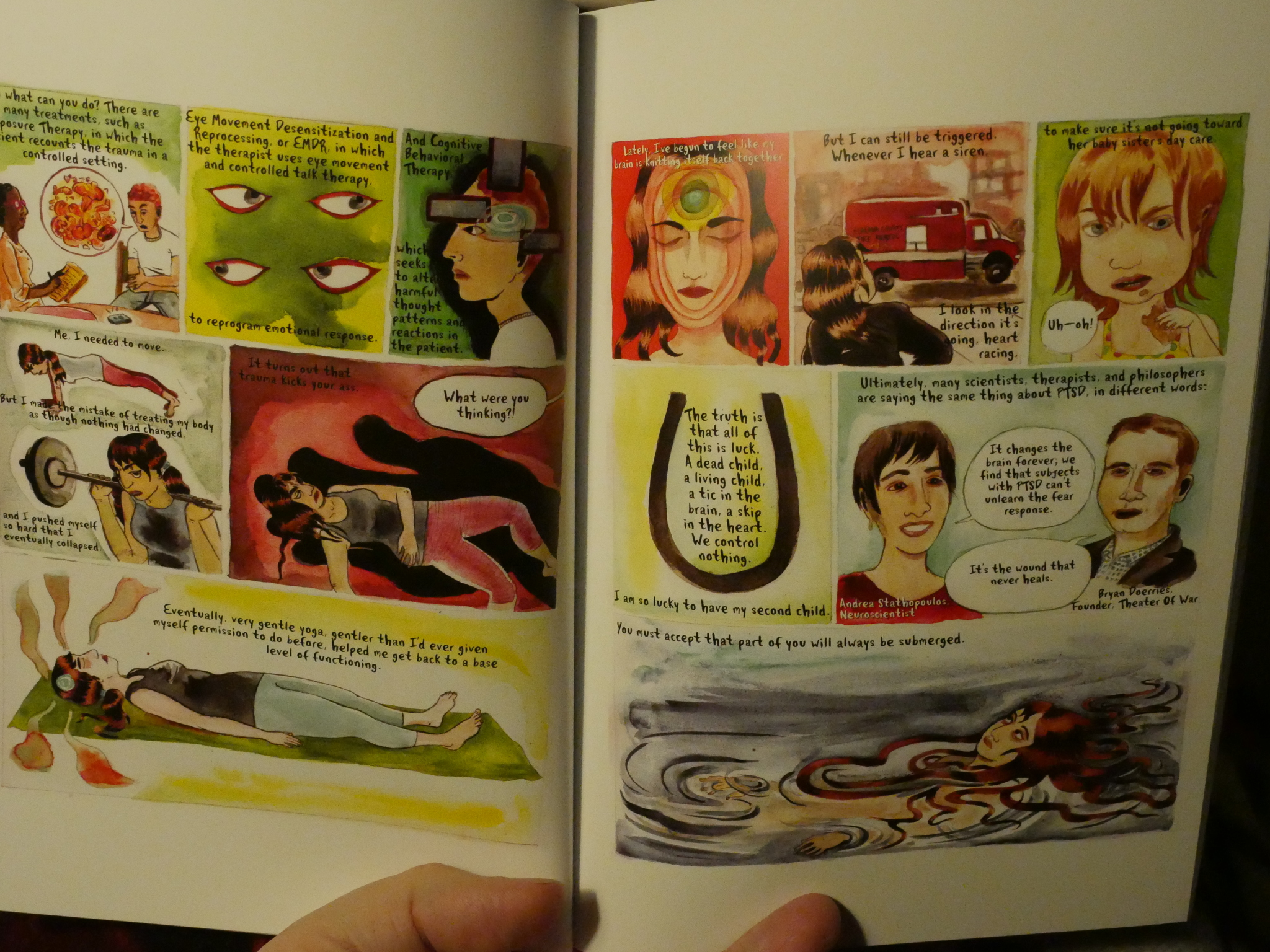
Oops. Another Retrofit book. This one collects various short stories from Corman that add up to something greater in aggregate. Most of these were drawn in the same period that her husband, Tom Hart, was making his book Rosalie Lightning, and many of the stories touch on the same subject.
I really love Corman’s weird, weird colours.
Wrinkles by Paco Roca (Fantagraphics)
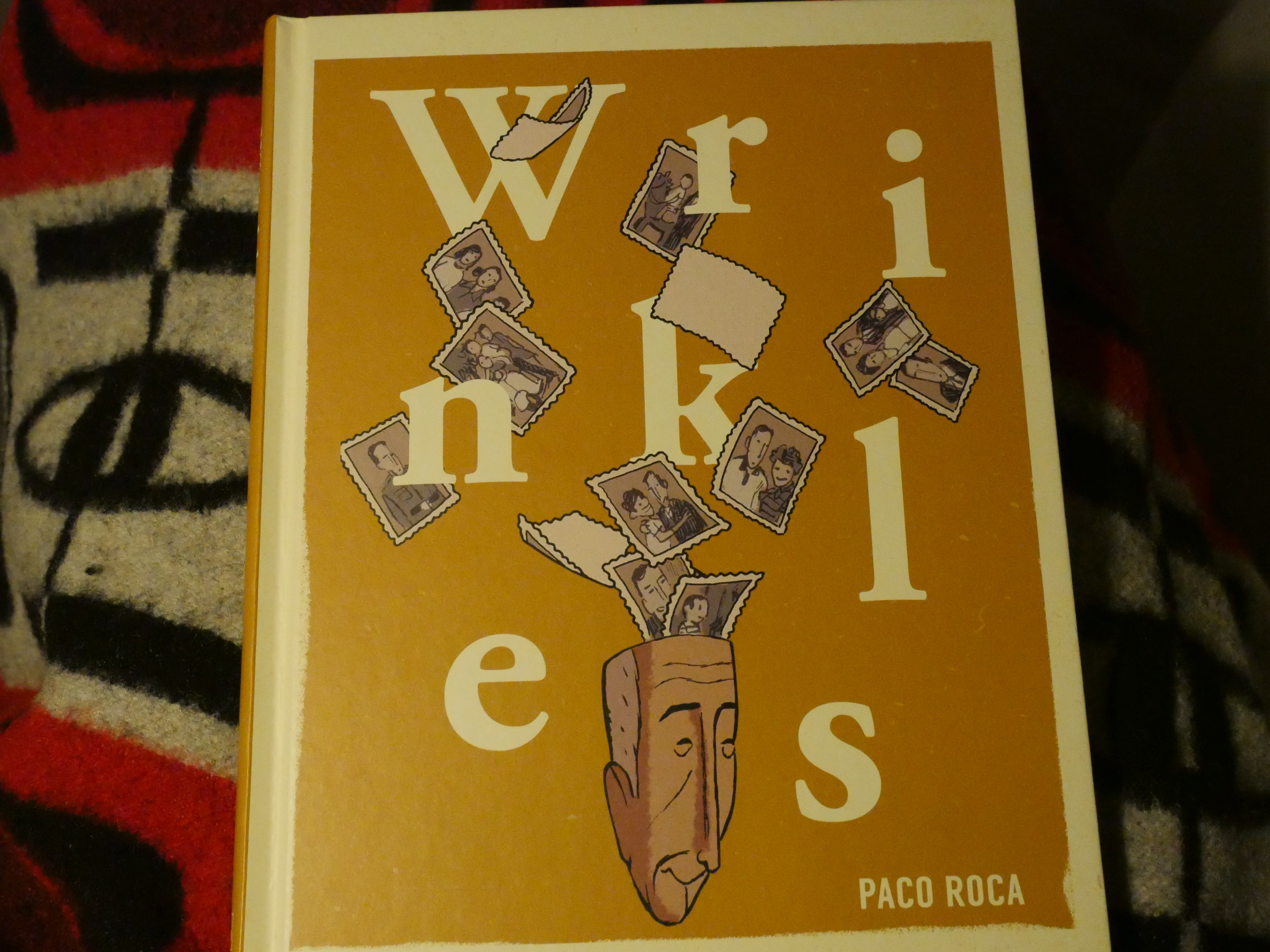
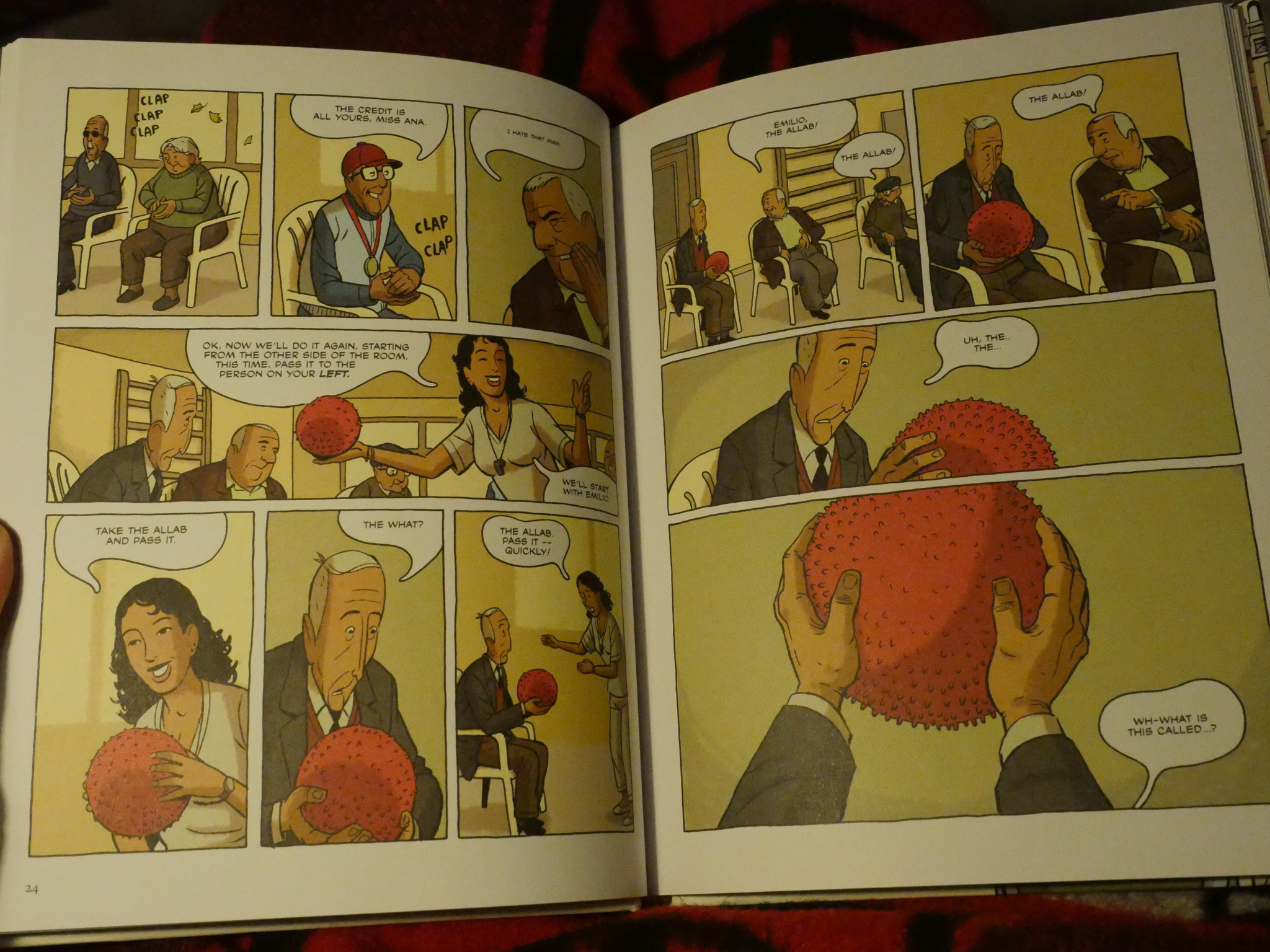
This is the US edition of an older French book, but let’s list it here, anyway.
While I was a bit sceptical about this book at first (it’s about an old guy with Alzheimers in an old folks’ home, and that seems like it could be a cynical and easy ploy to tug at people’s heartstrings) it’s really, really touching. I laughed and I cried.
Nod Away by Joshua W. Cotter (Fantagraphics)
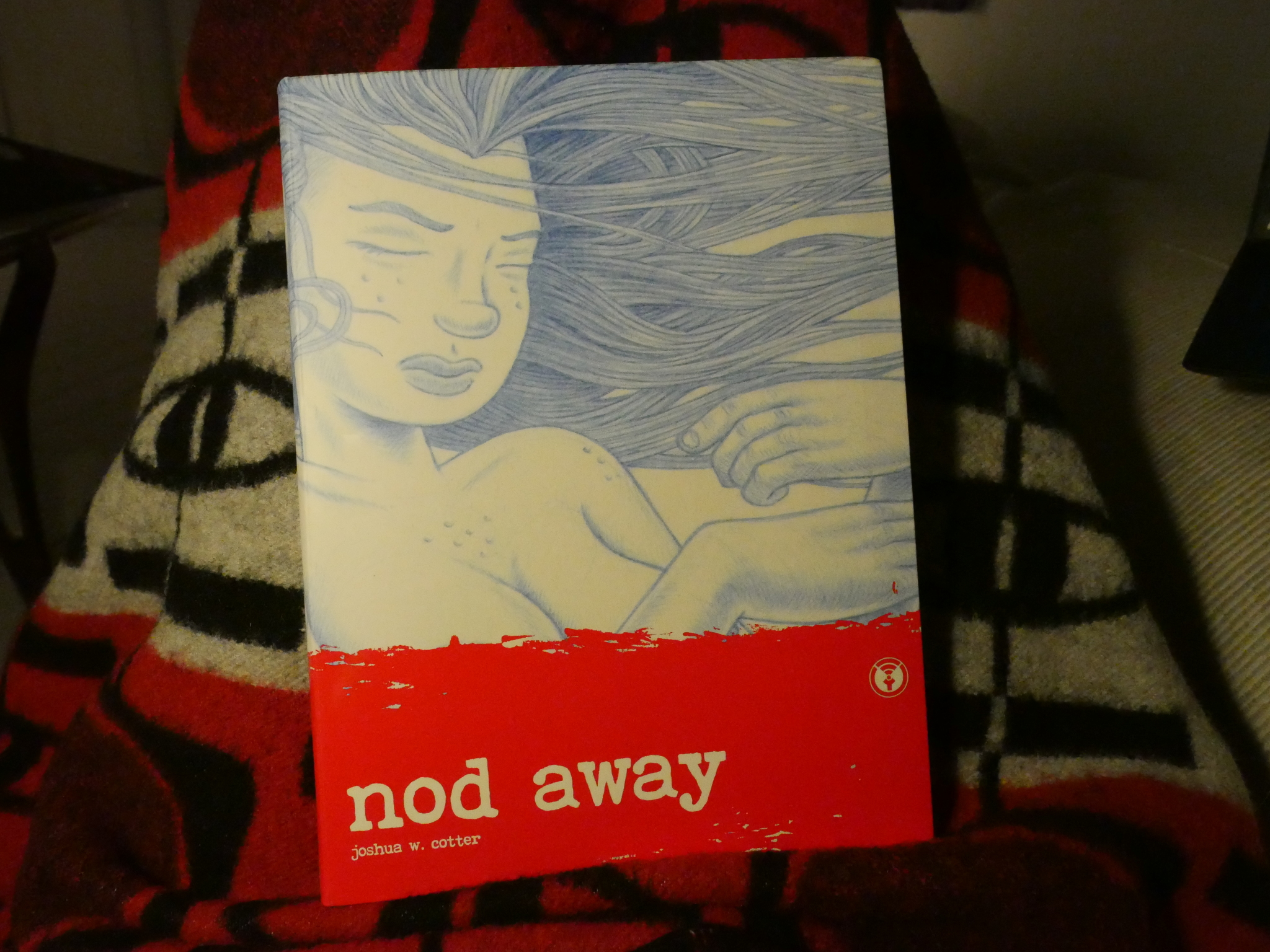
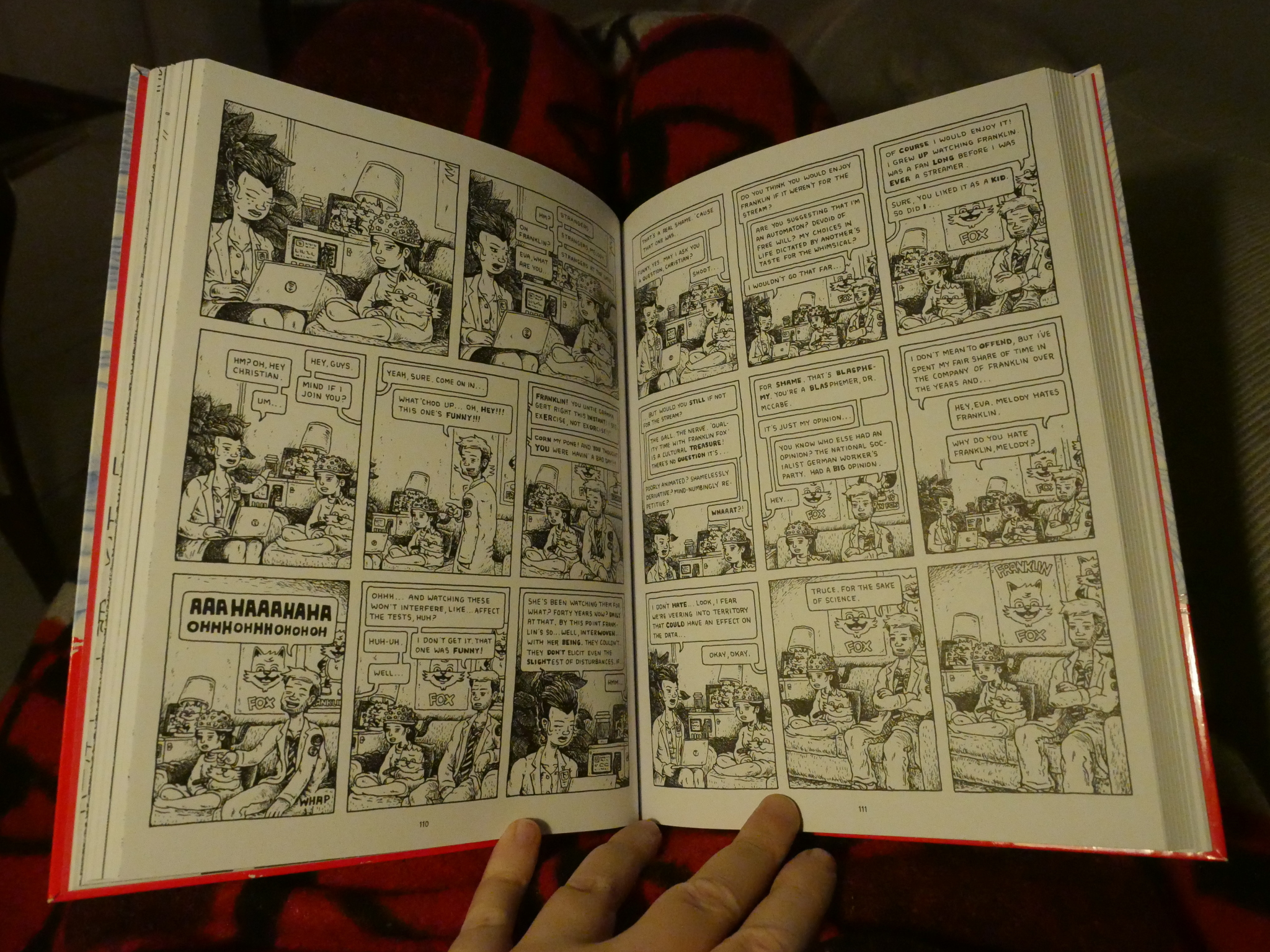
This is a weird, weird science fiction tale. There’s psychic experimentation, rocket ships and aliens from other dimensions, and it’s all so strangely put together. Yet it all works. It’s spooky and scary, kinda the comics equivalent of watching Alien the first time. Not that the plot is anything like that film or anything, but it’s… the feeling.
Beverly by Nick Drnaso (Drawn & Quarterly)
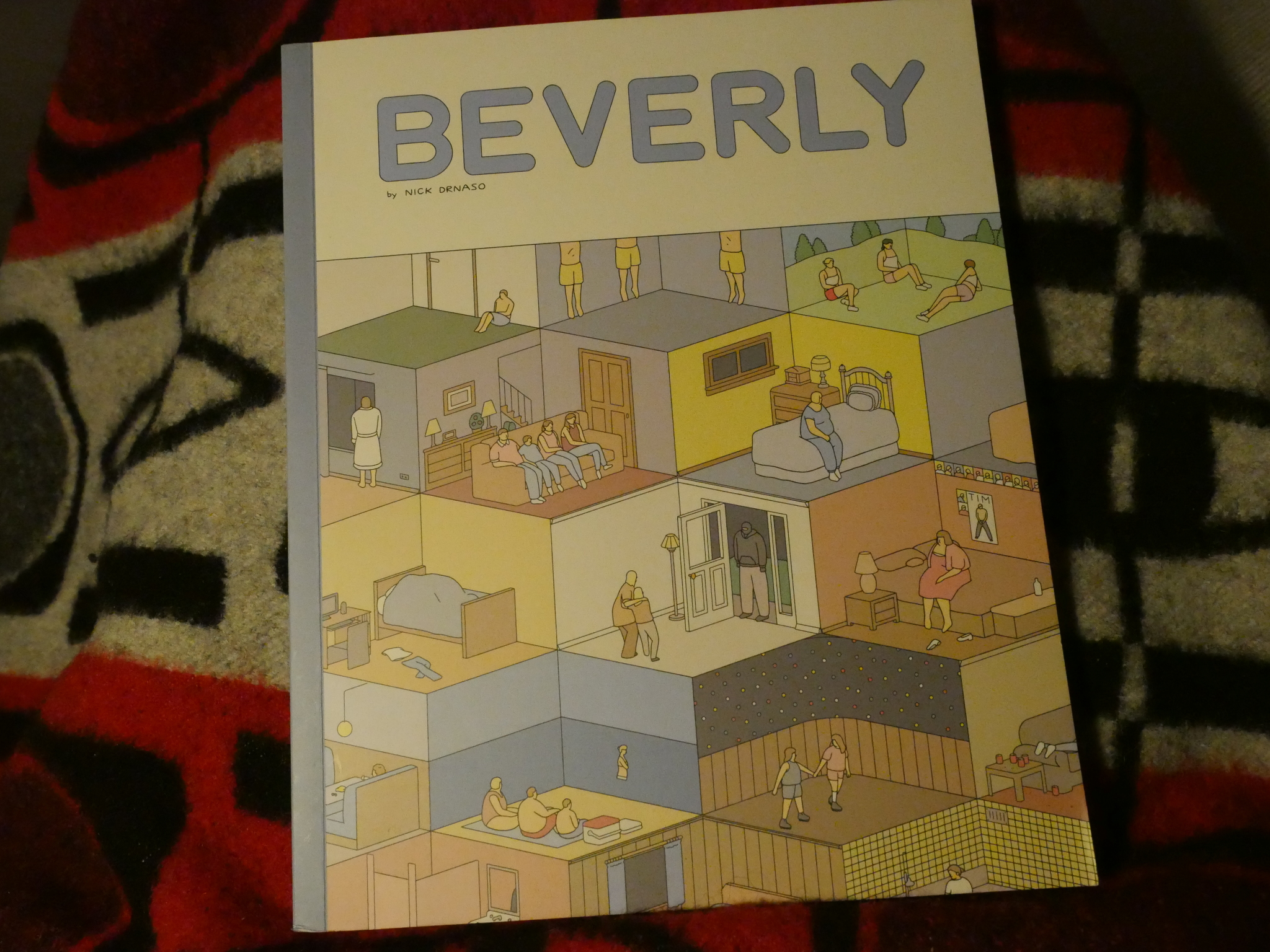
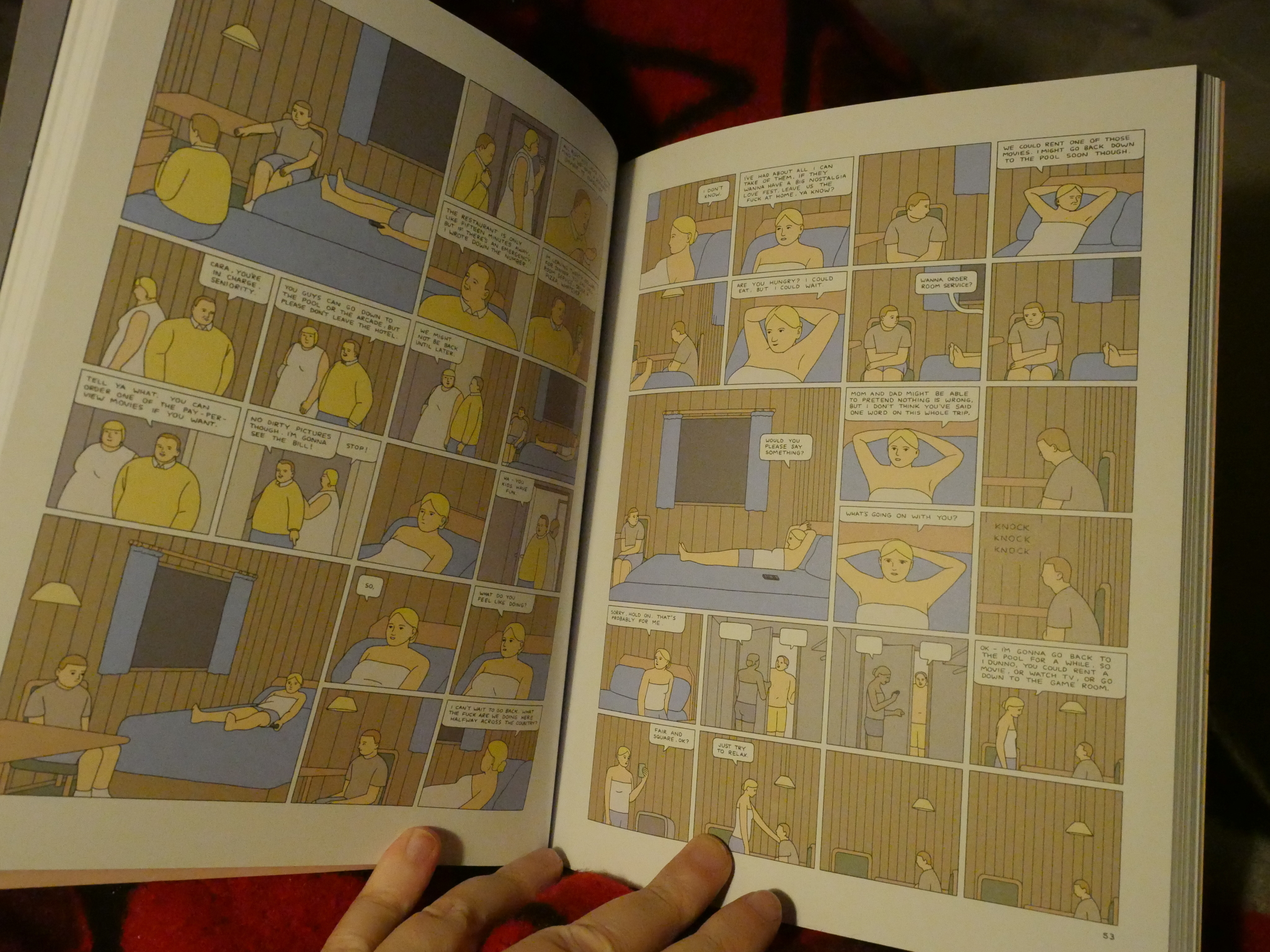
Finally we have this book, which I couldn’t quite make my mind up whether to include or not. Yes, it’s affecting and strange, but to my mind large parts of it just didn’t add up. That is, people seemed to be (over-)acting in ways that just strained my credulity. (For instance, when the sister walks in on the brother and her reaction to that situation.)
But there’s a lot to enjoy here, too, like the way Drnaso convincingly depicts the boy’s constant obsessive and unwanted fantasies: The way nothing is marked explicitly is just so on fleek.
So that’s it for 2016. That’s about half the number of books compared to my 2015 posts on the same subject, which means that either 1) I missed a bunch of books (which is possible since I was reading an inordinate amount of Fantagraphics books this year), or 2) the American art comics explosion that happened around 2011 is pretty much over. Instead of there seemingly being a new genius popping up every week, we’re down to one every couple of months.
This is sad. Buy and read all the books above to cheer yourself up.
But I read older comics this year, too! These are the most interesting ones.
The Best American Comics 2007 edited by Chris Ware (Haughton Miffin)
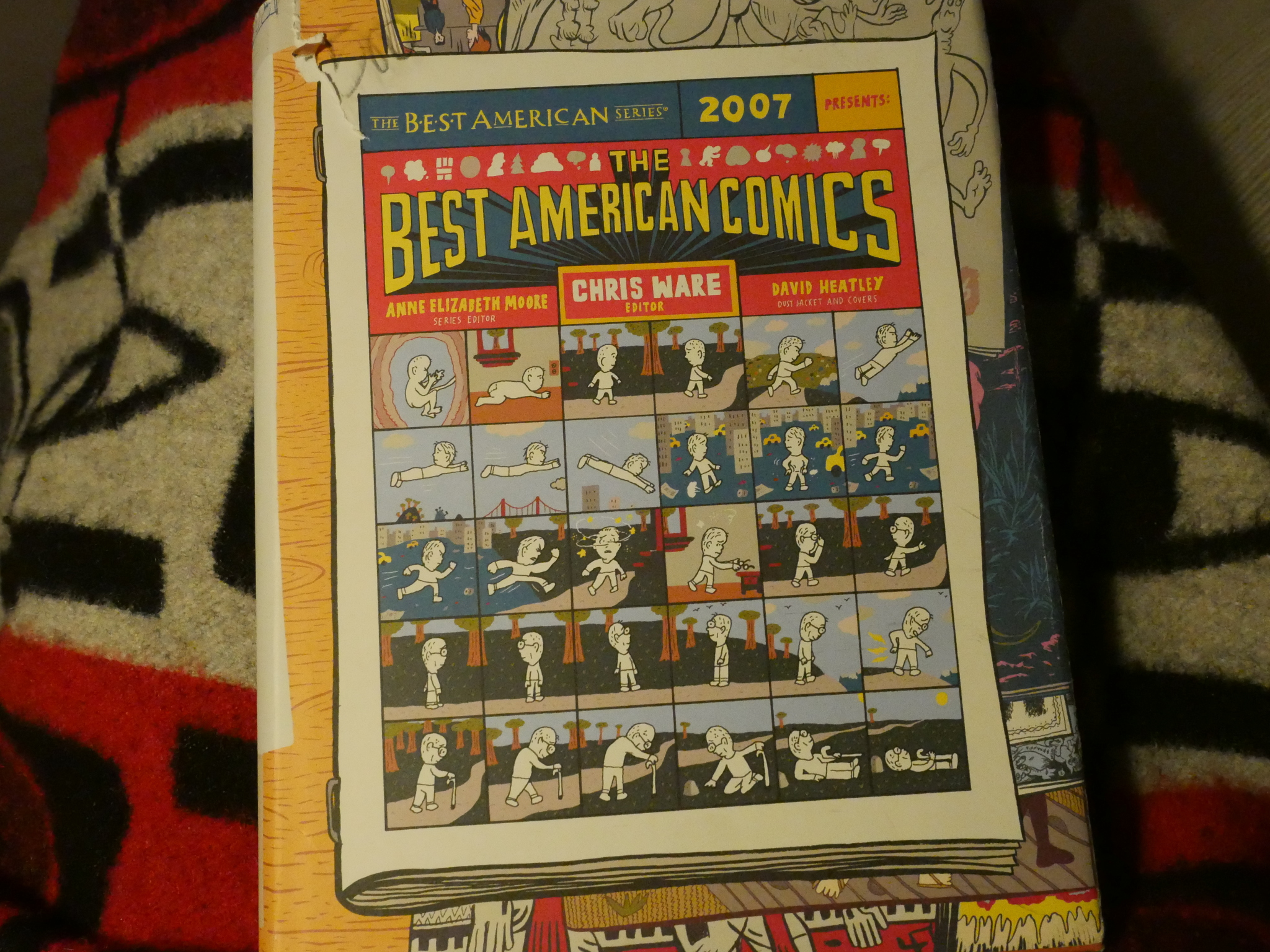
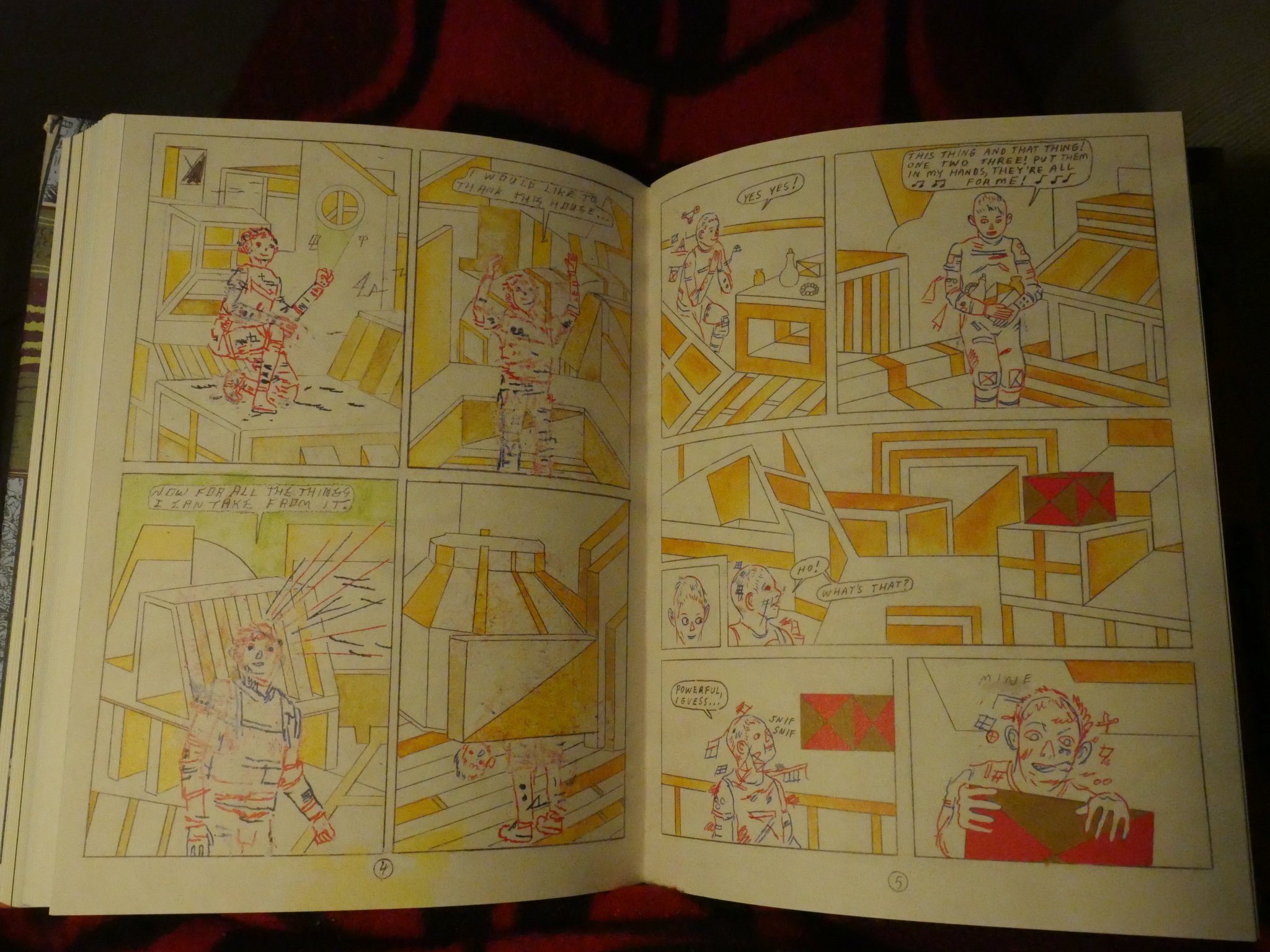
2007 was a very good year, and Ware has excellent taste. The other notable thing about this anthology is how many stories were picked from the now-defunct Fantagraphics anthology Mome. It provided a reliable, dependable way for shorter art comics to make their way into the world, and since its demise there’s been nothing to pick up the slack.
Yes, just put the comics on Tumblr instead. That’s the ticket.
I dag er den siste dagen av resten av ditt liv by Ulli Lust (No Comprendo Press)
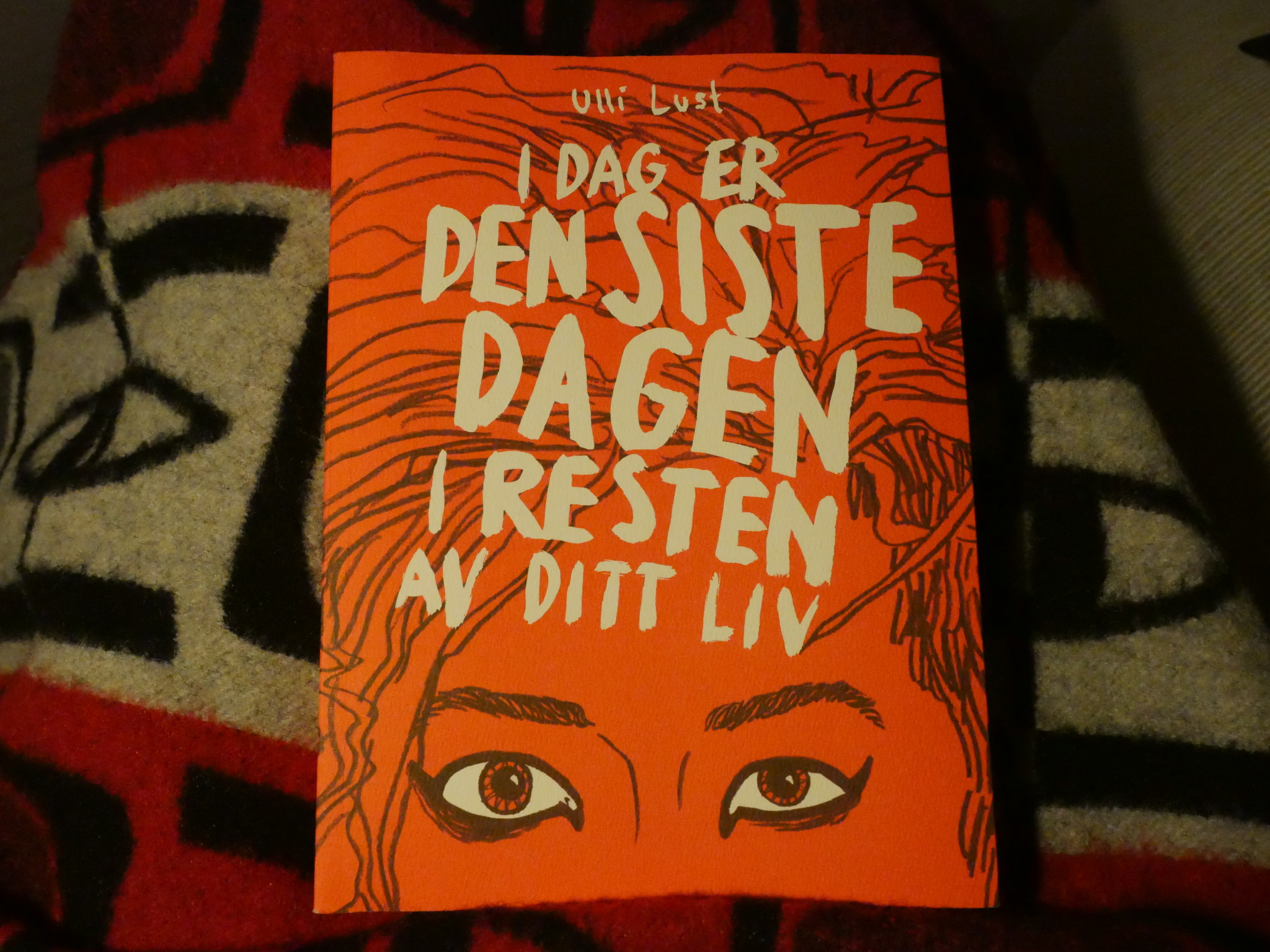

Fantagraphics published an English language version of this brick of an autobio comic book. It’s about Lust as a youngster going to Italy with no money. Hilarity doesn’t ensue, but it’s a fascinating story. Completely engrossing, and I can’t wait to read her next book.
Everything is Teeth by Evie Wyld and Joe Sumner (Pantheon)
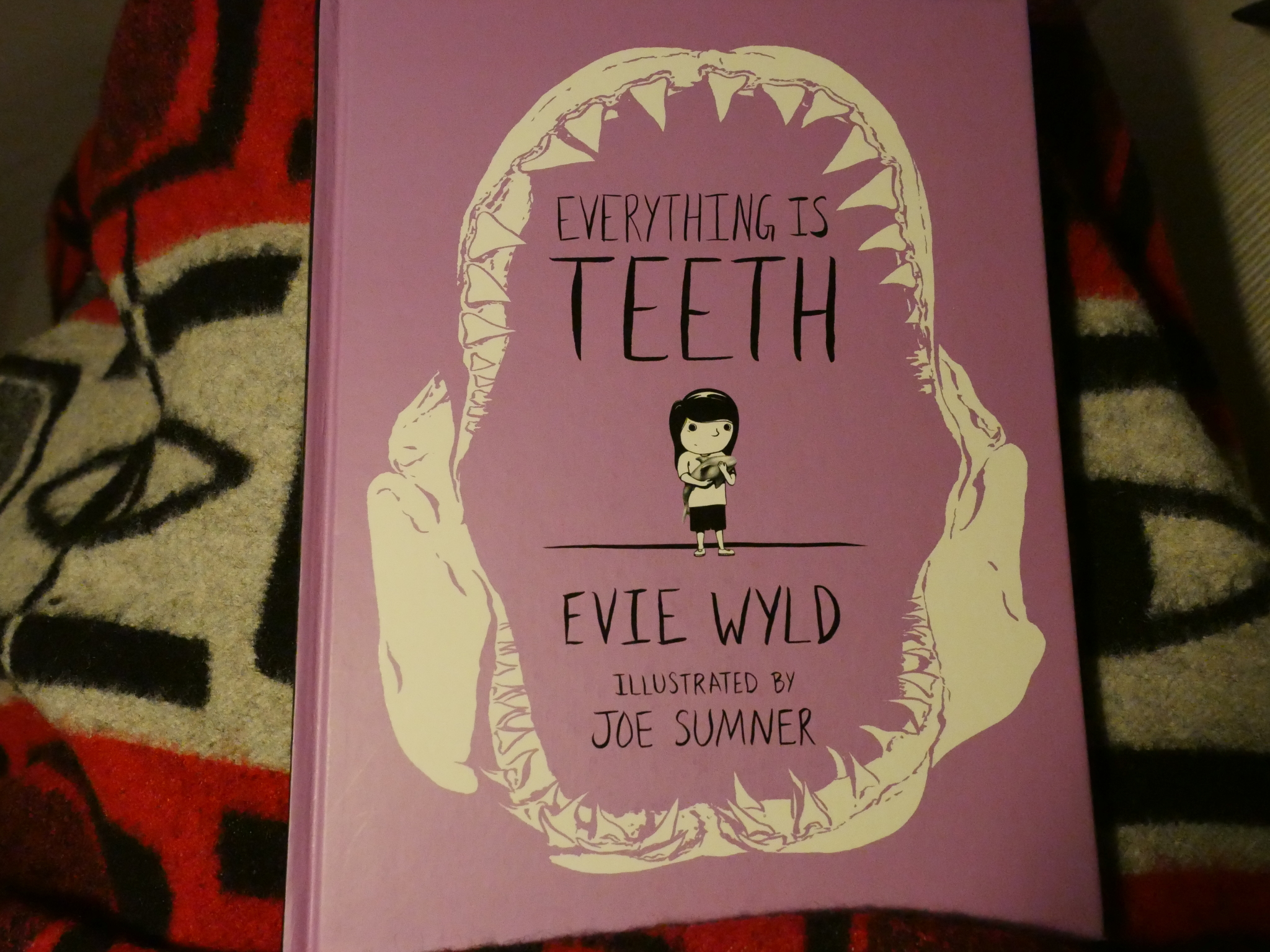
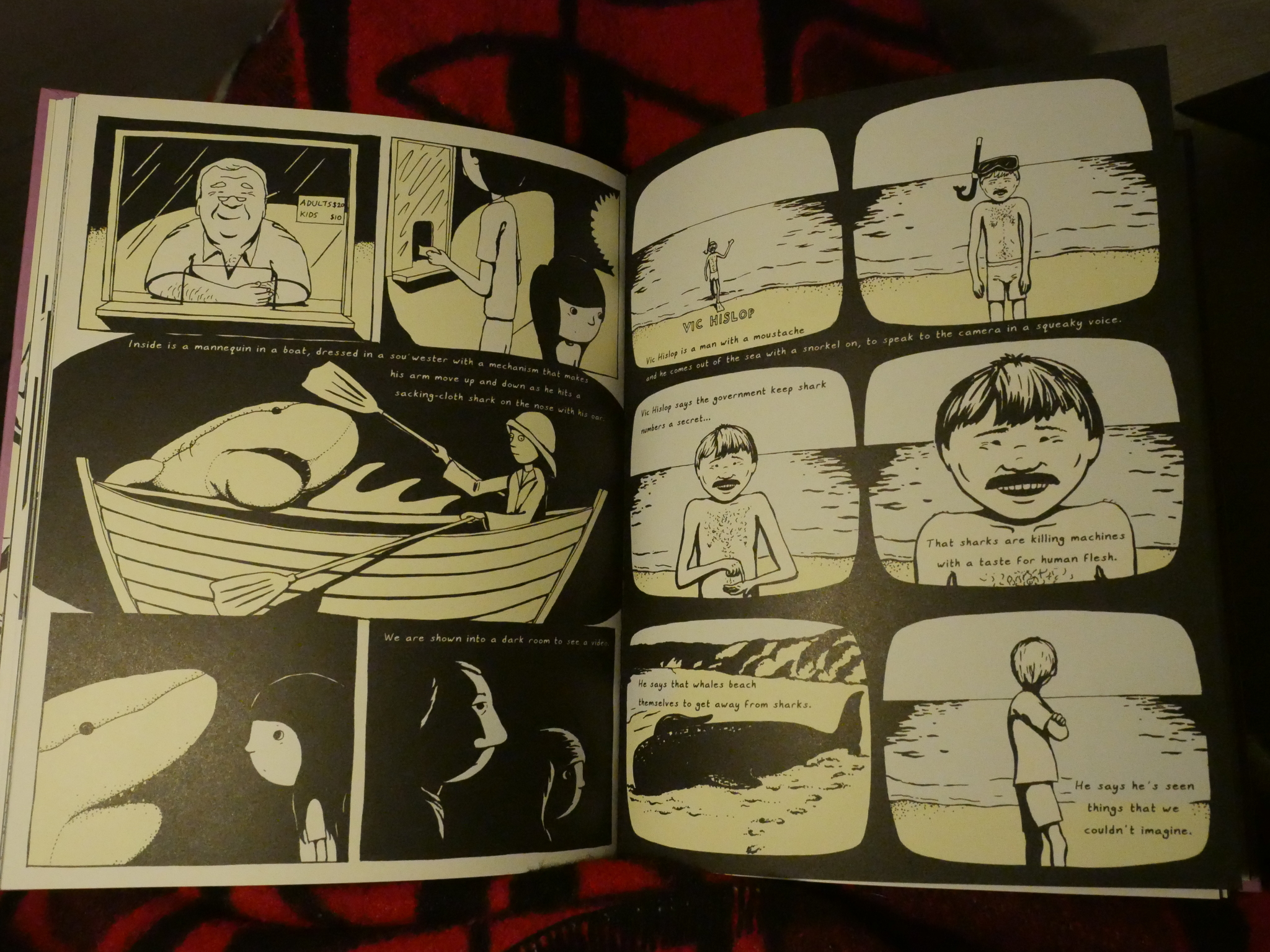
I’m always suspicious of comics that have a writer/artist combo, especially when the artist is termed “illustrator” and gets a smaller font on the cover. These books almost always suck. This one doesn’t. It’s about one girl’s obsession with sharks, and it’s wildly interesting. The artwork is rather on the basic side, though.
Mimi and the Wolves vol II by Alabaster (self-published)
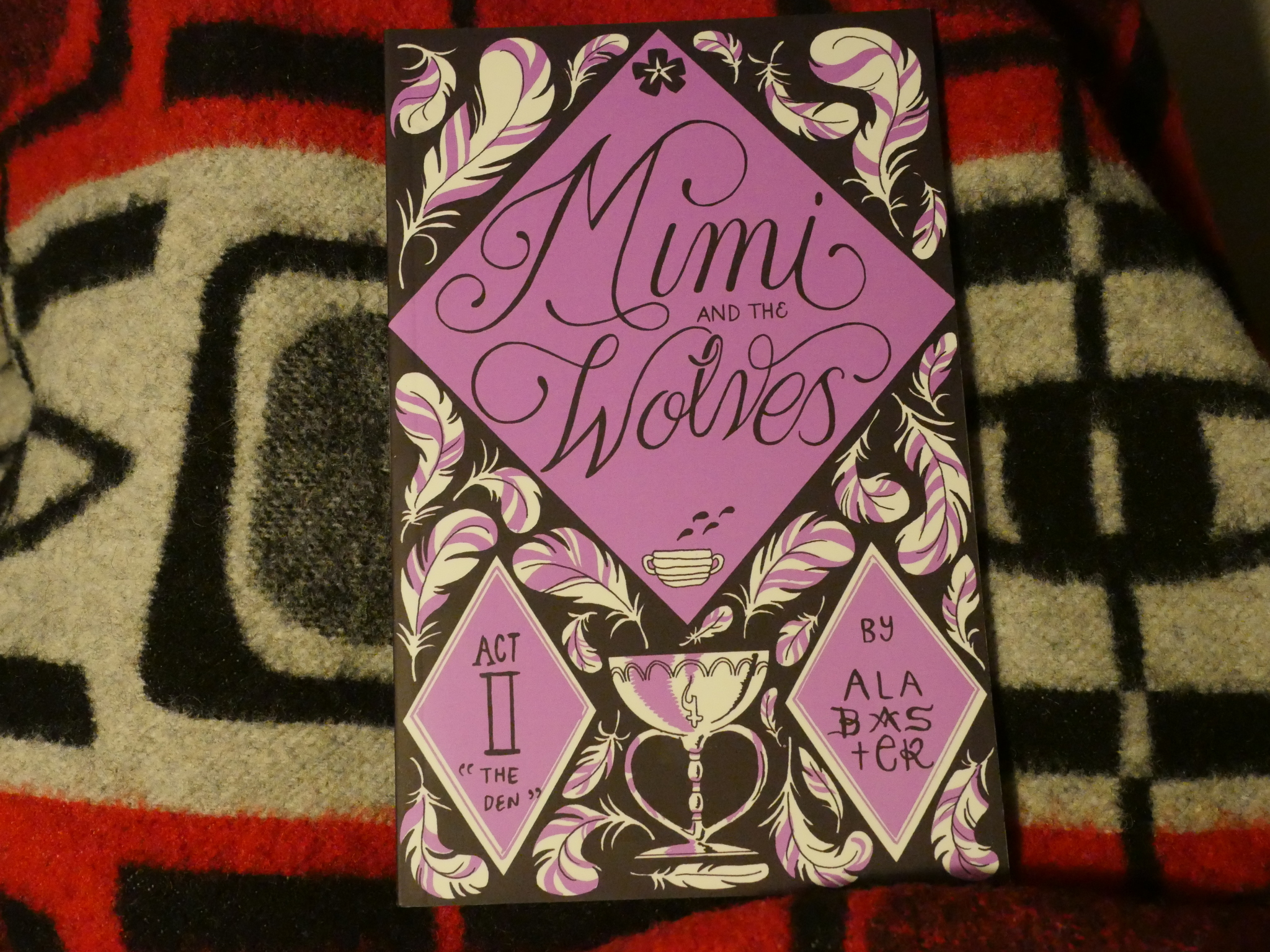
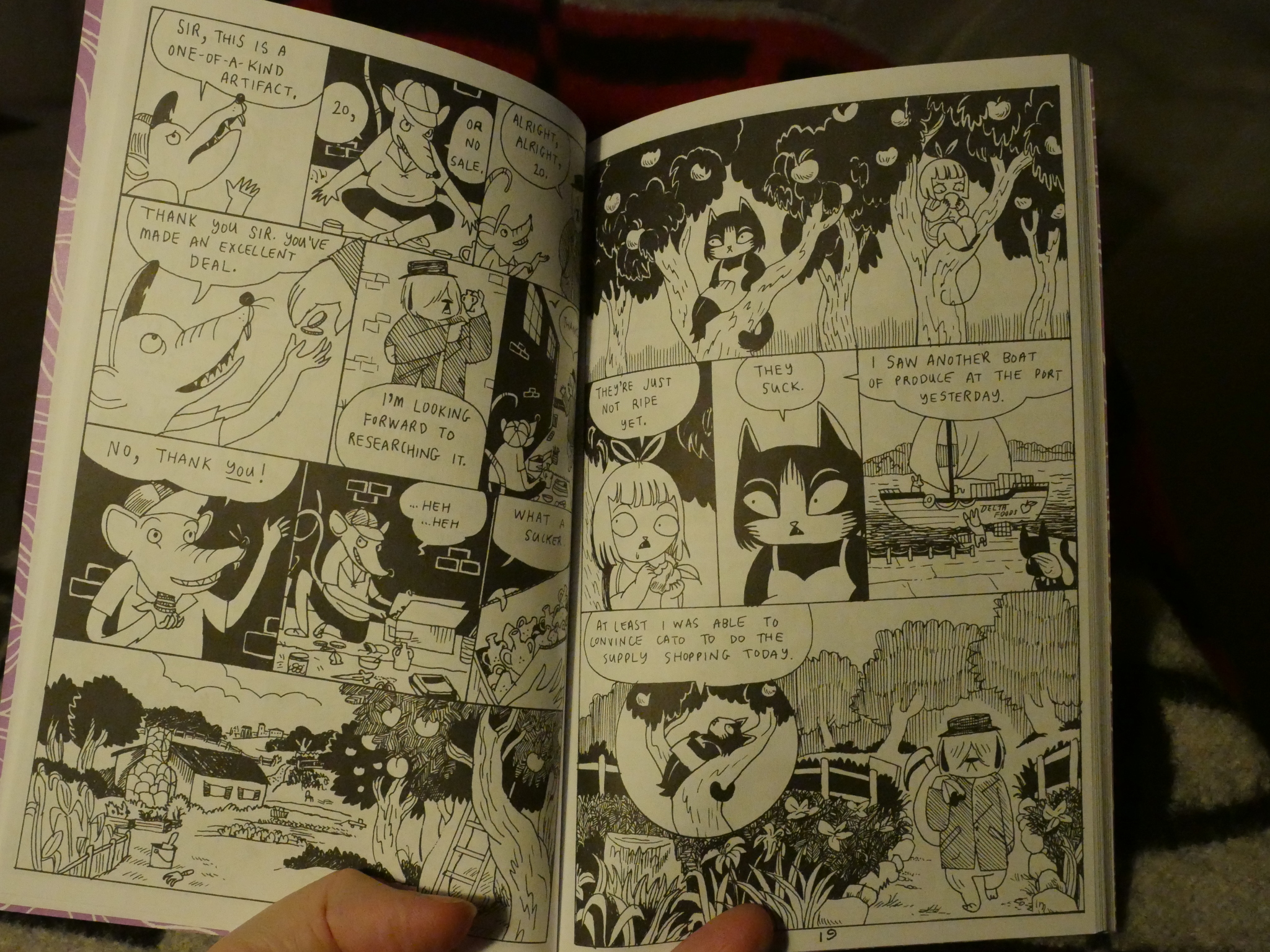
This little book is just so strange. It’s difficult to know what to make of it, but it just has this unnerving vibe going on that makes it hard to shake.
Happy Stories About Well-Adjusted People by Joe Ollmann (Conundrum Press)

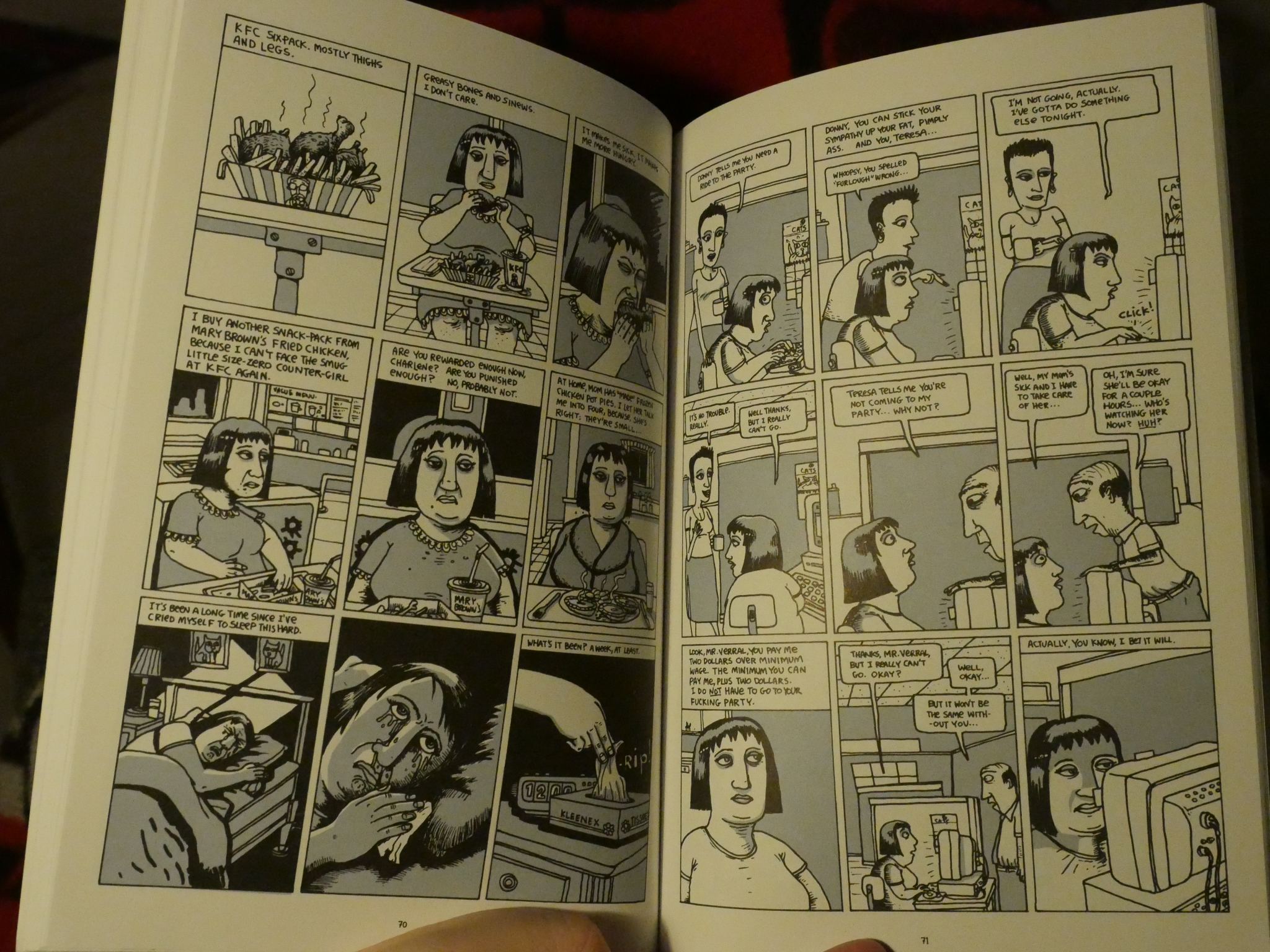
Yes, the title is sarcastic. But very little else about this book (which collects short stories from the last couple of decades) is predictable. There’s just something humane and true about Ollmann’s depiction of these mostly rather hapless people.
Houses of the Holy by Caitlin Skallrud (Uncivilized Books)
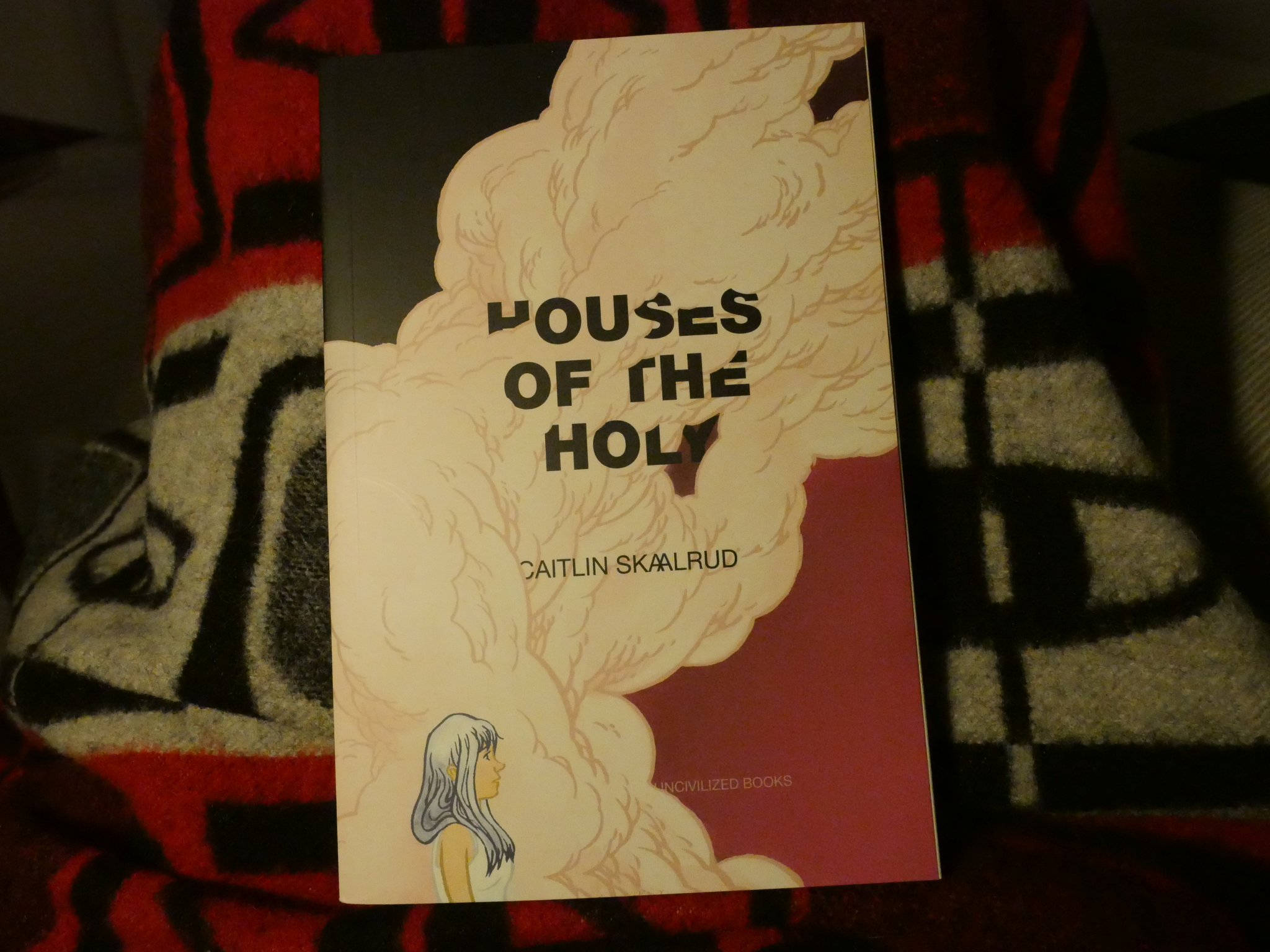
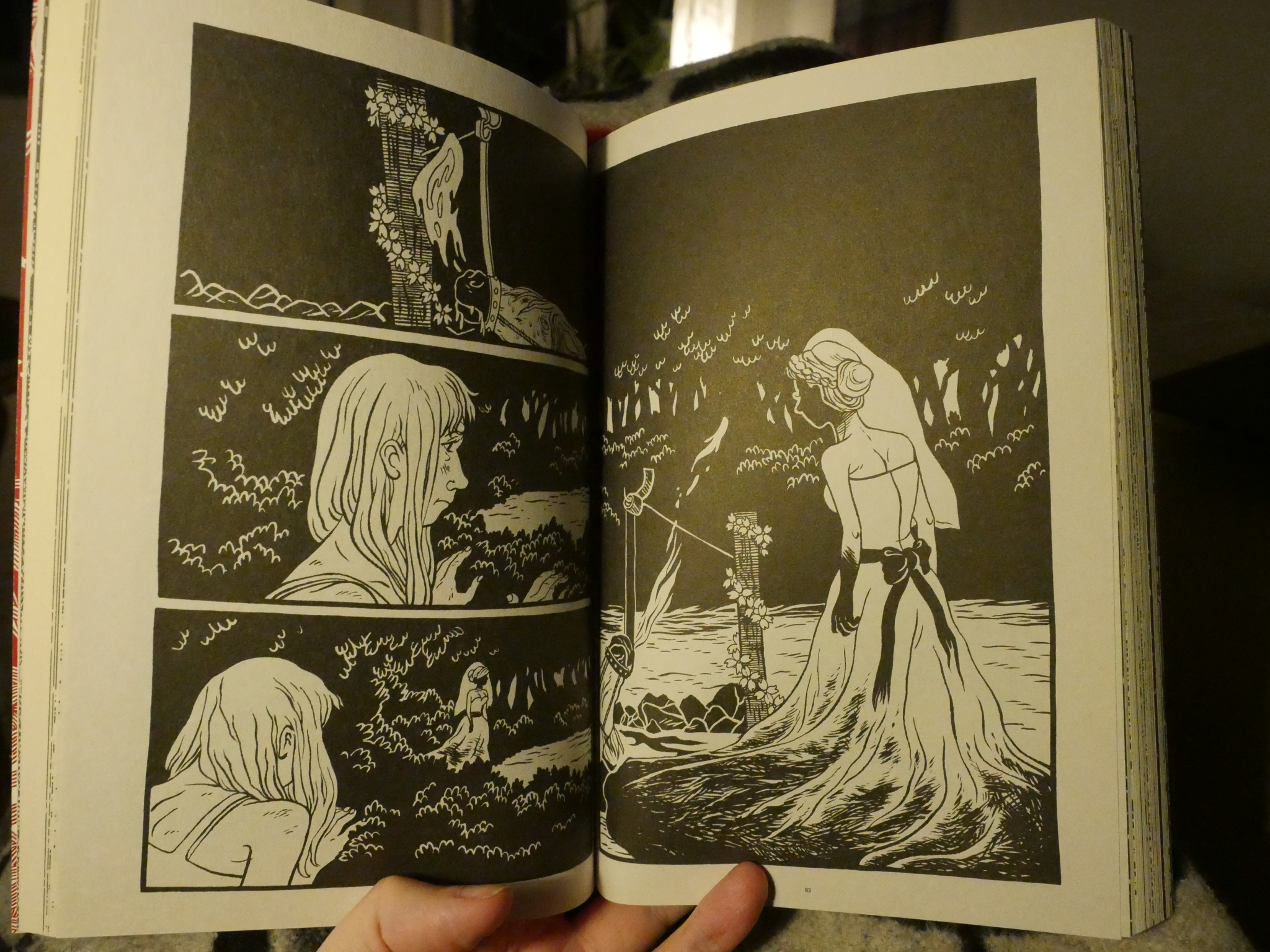
Man, this is an experience to read. It’s pure comics, and it’s like nothing else. I have nothing more to say about it.
Sunday in the Park with Boys by Jane Mai (Koyama Press)
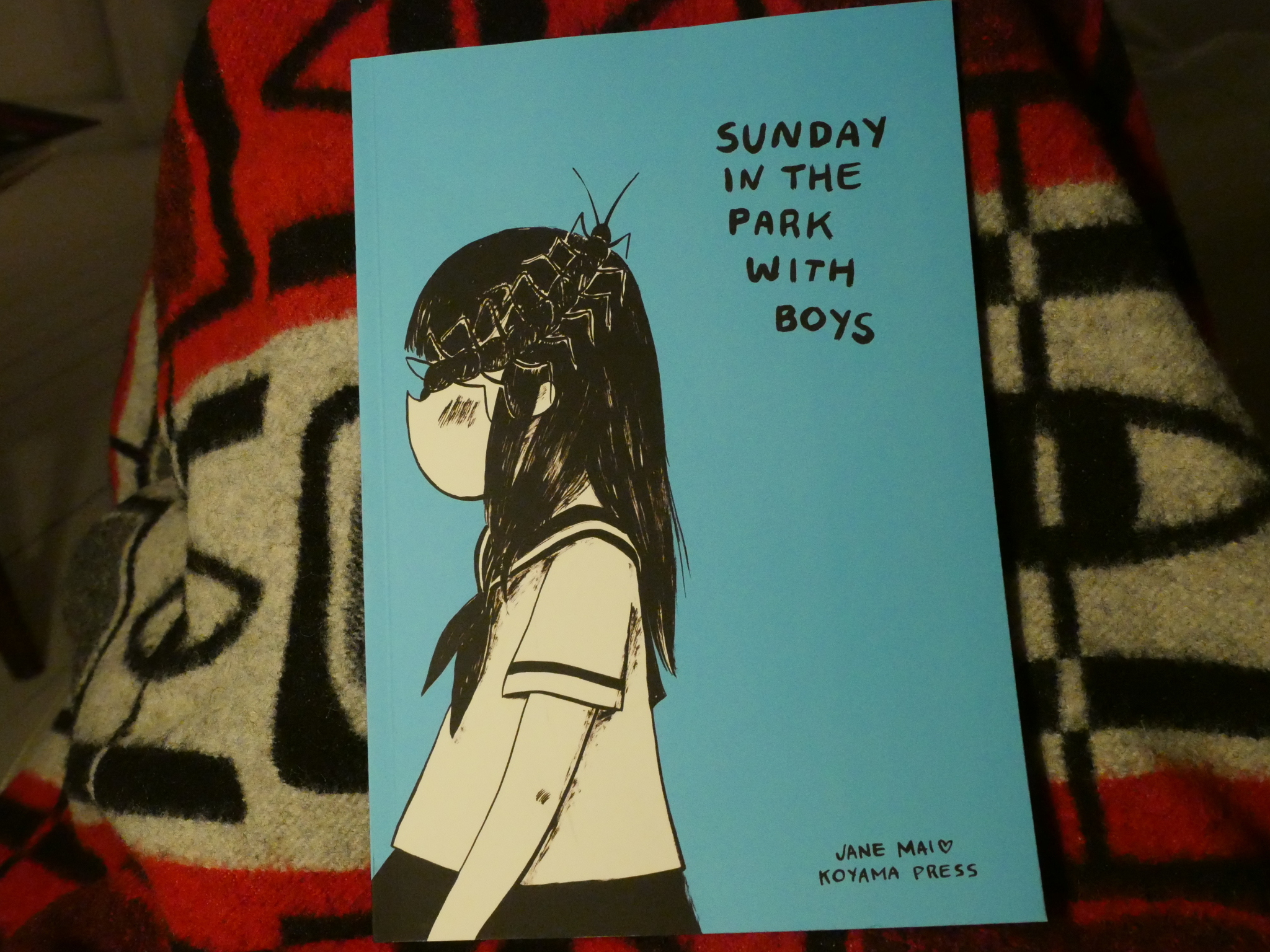
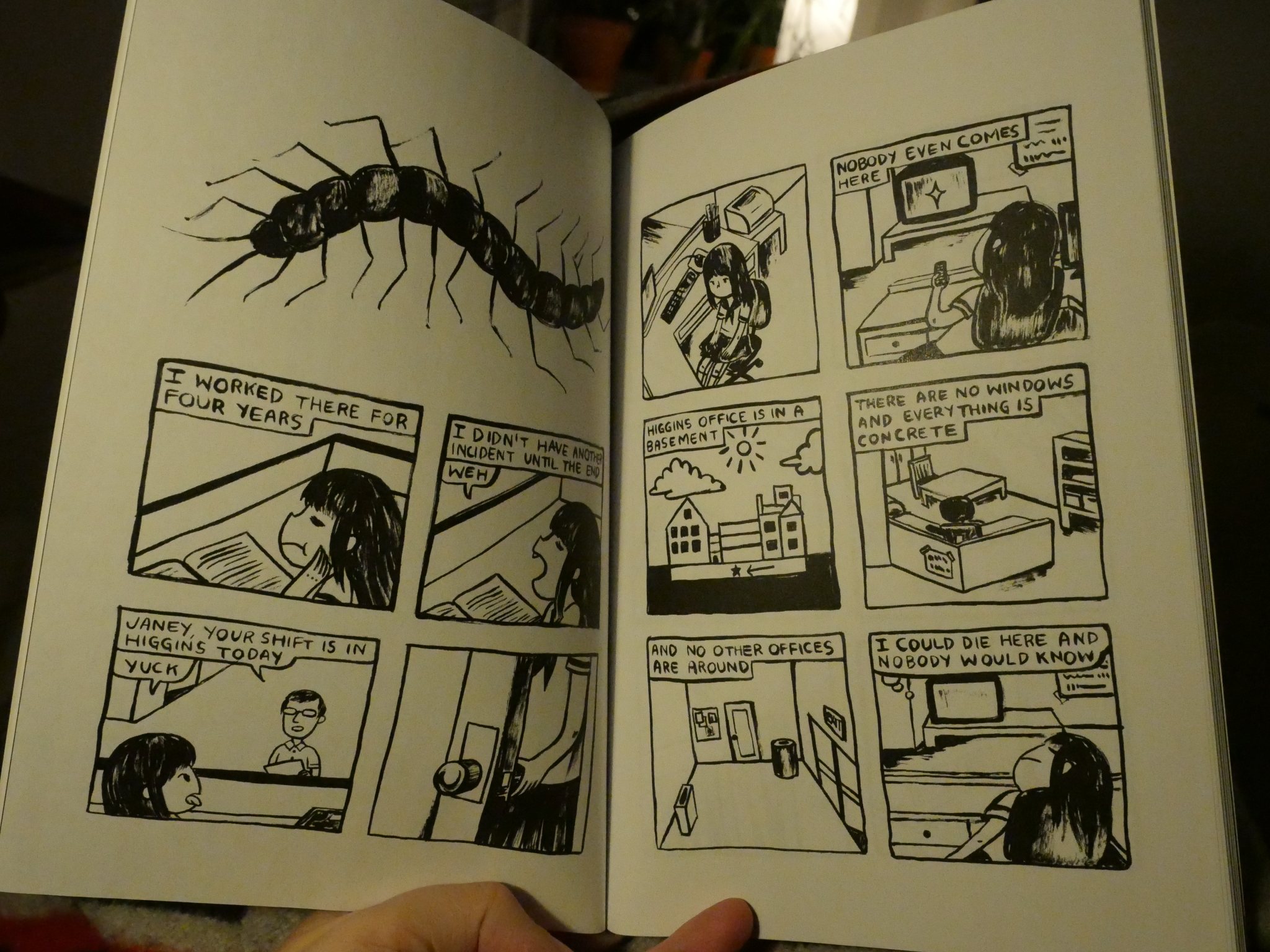
Mai’s charming artwork coupled with sometimes creepy symbolism and melancholy mood is just perfect for this booklet. Comics about depression seems to be a major movement these days.
Berlin: A City Divided by Susanne Buddenberg and Thomas Henseler (Avant-Verlag)
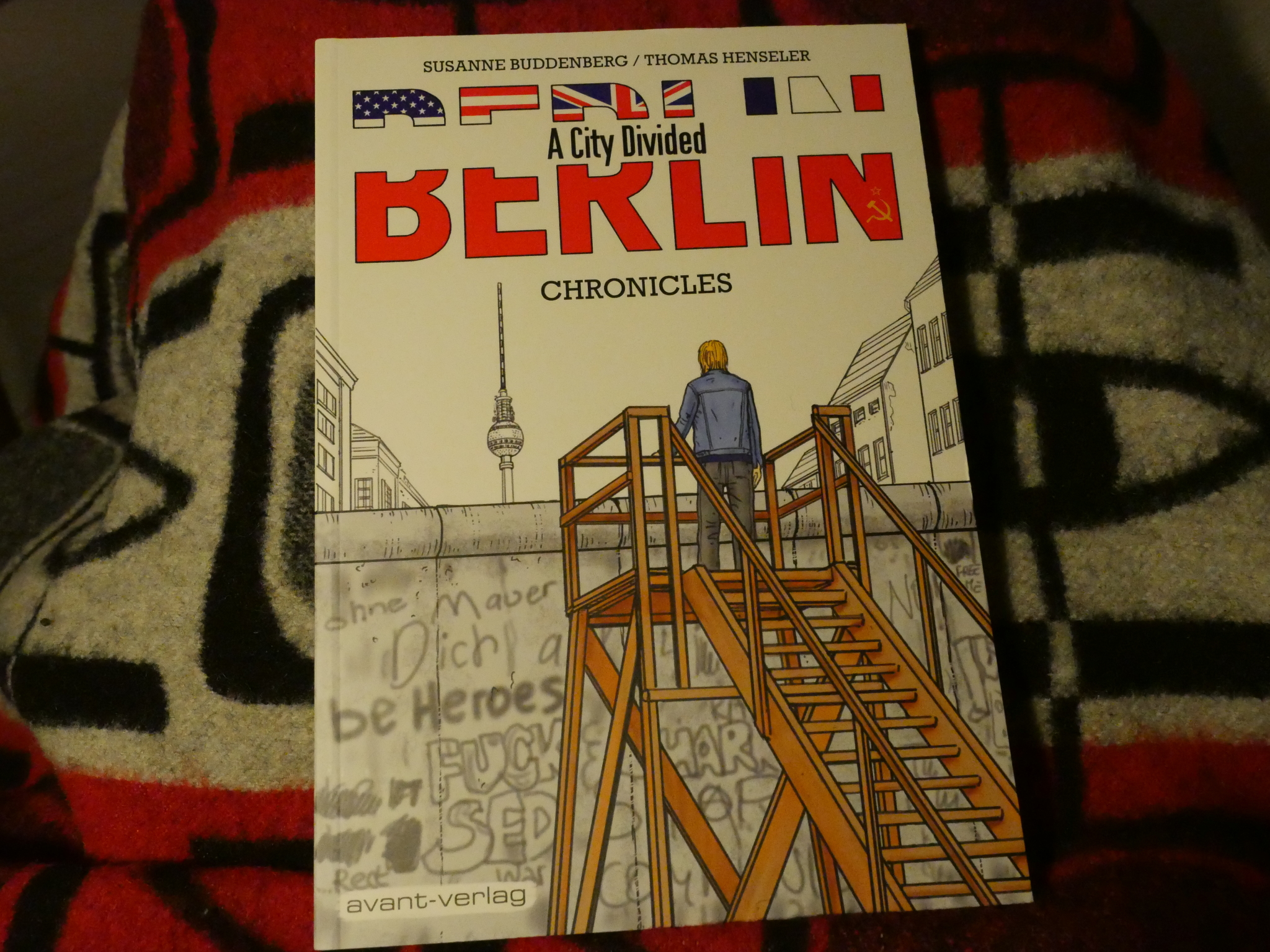
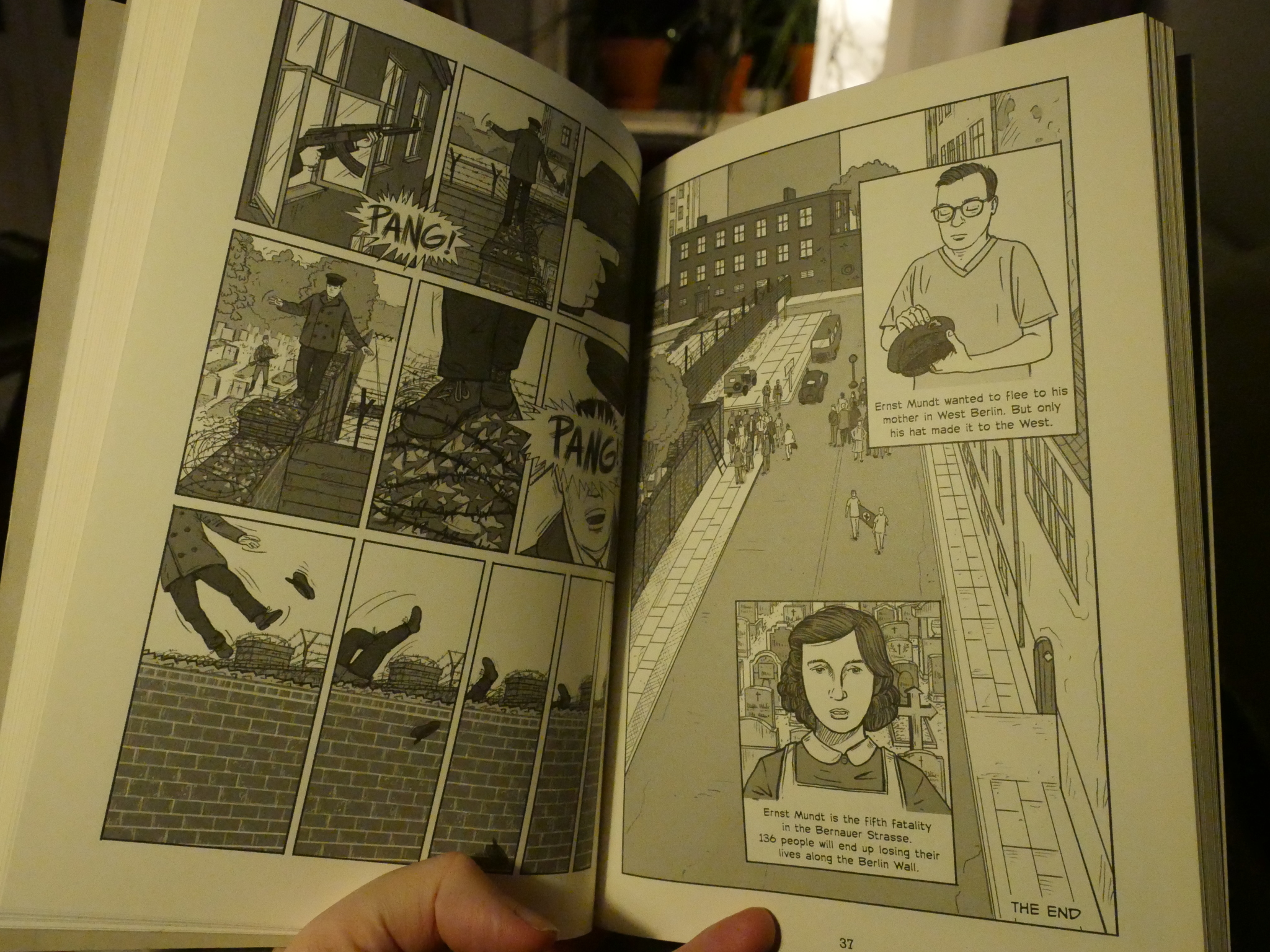
These aren’t really very good comics. They were made as part of the anniversary celebration of the fall of the wall in Berlin, and they’re about all the people who were killed trying to escape from East Berlin. Even if they’re basic as comics, they pack a wallop. Putting names and faces to the people who were meaninglessly shot, in the middle of Europe, just a few decades ago, is powerful.
➡ by Marc-Antoine Mathieu (Reprodukt)
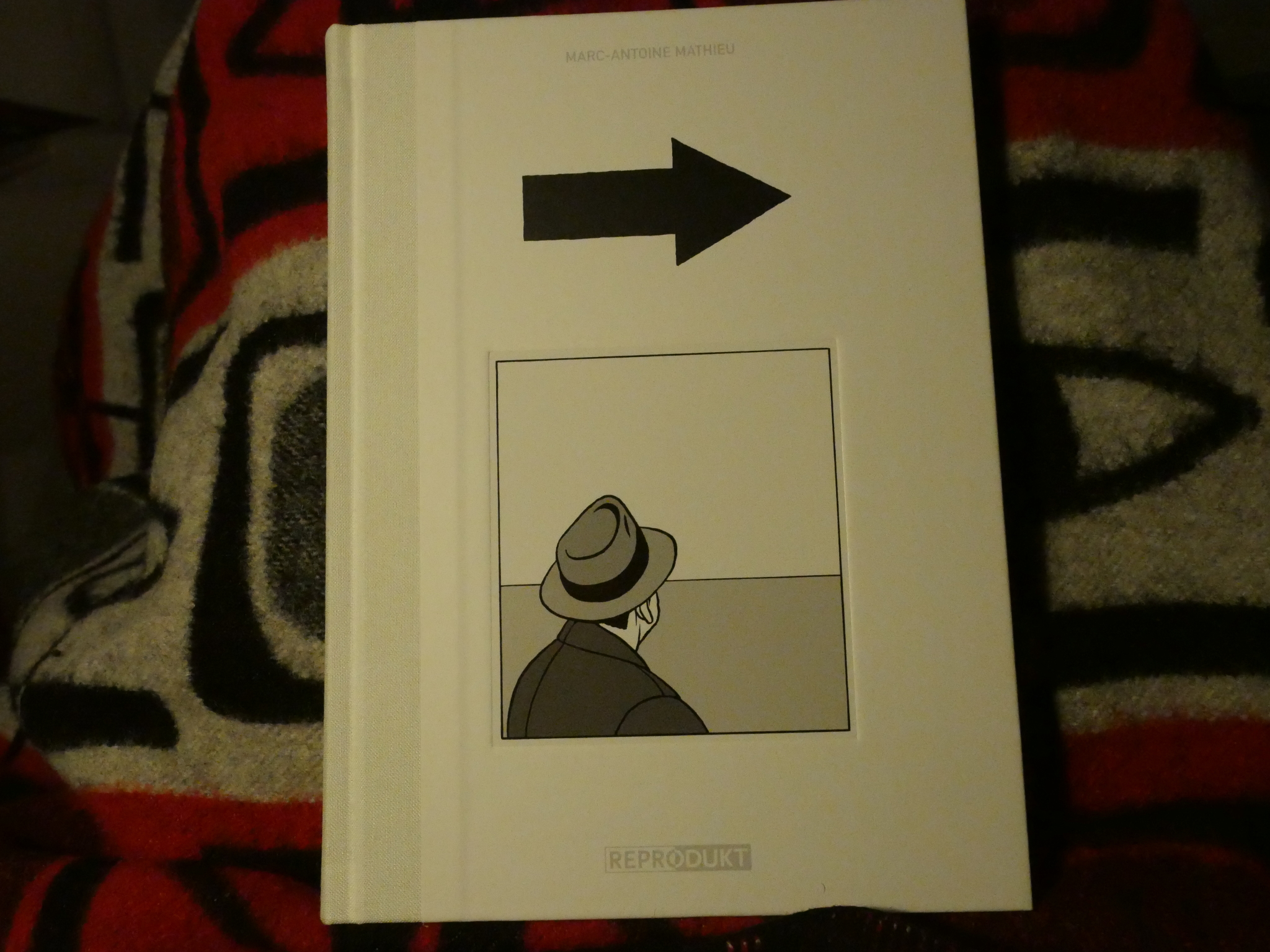
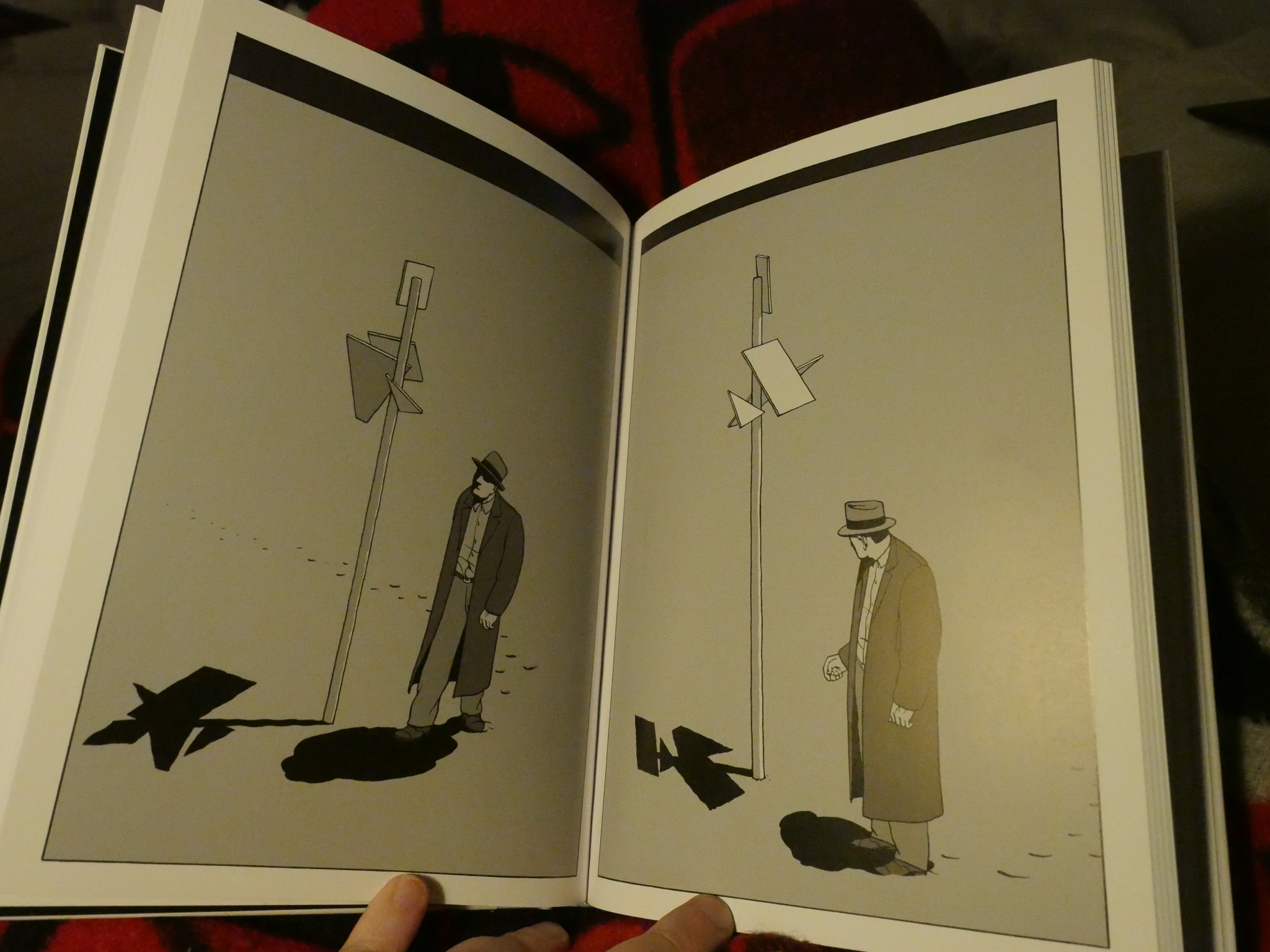
This wordless book is all about comics formalism tomfoolery. We follow this character through a landscape where he follows various arrows, and it’s a bit entrancing. Like a less propulsive Yuichi Yokoyama, perhaps.
Soppy by Philippa Rice (Square Peg)
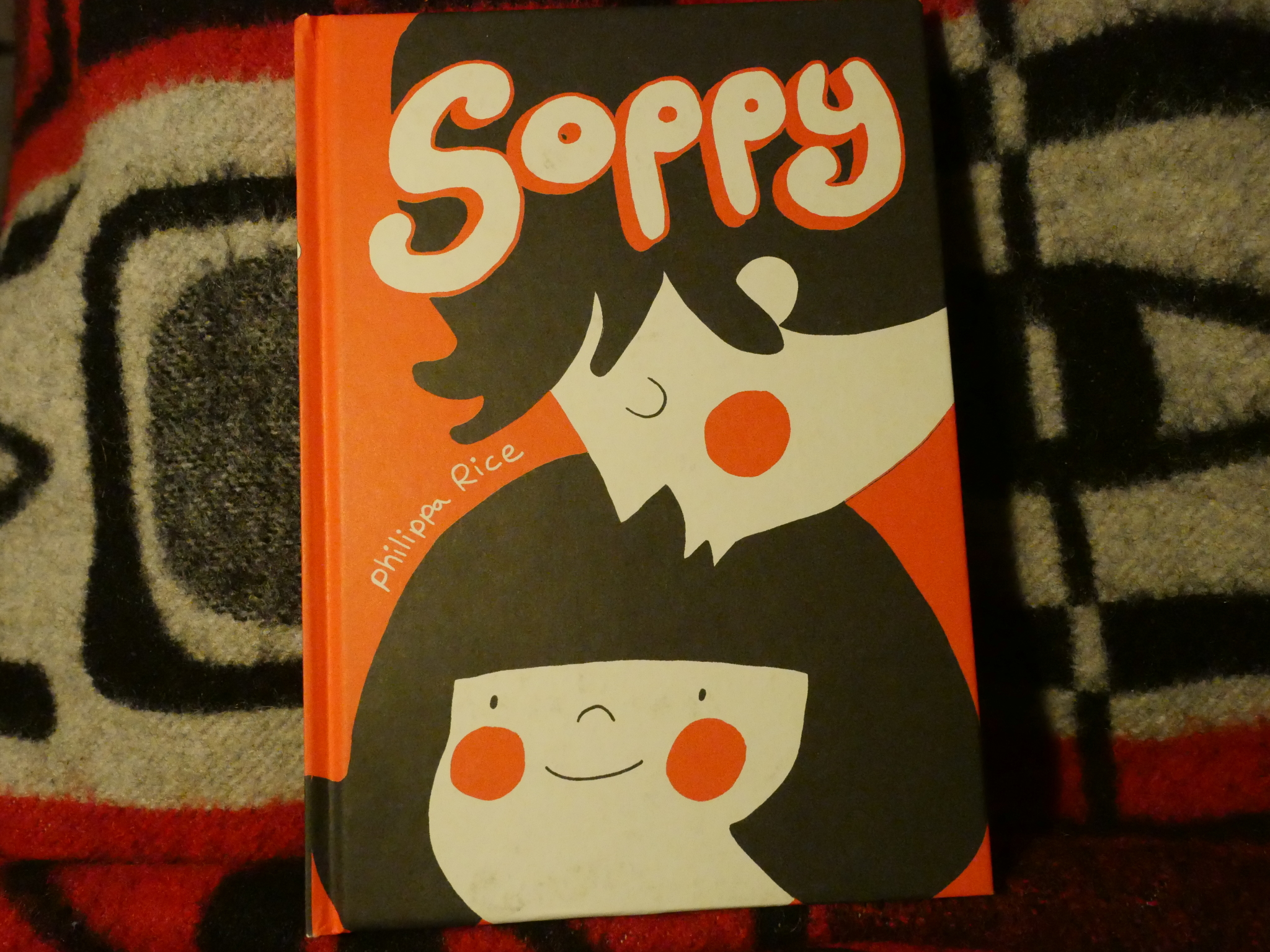
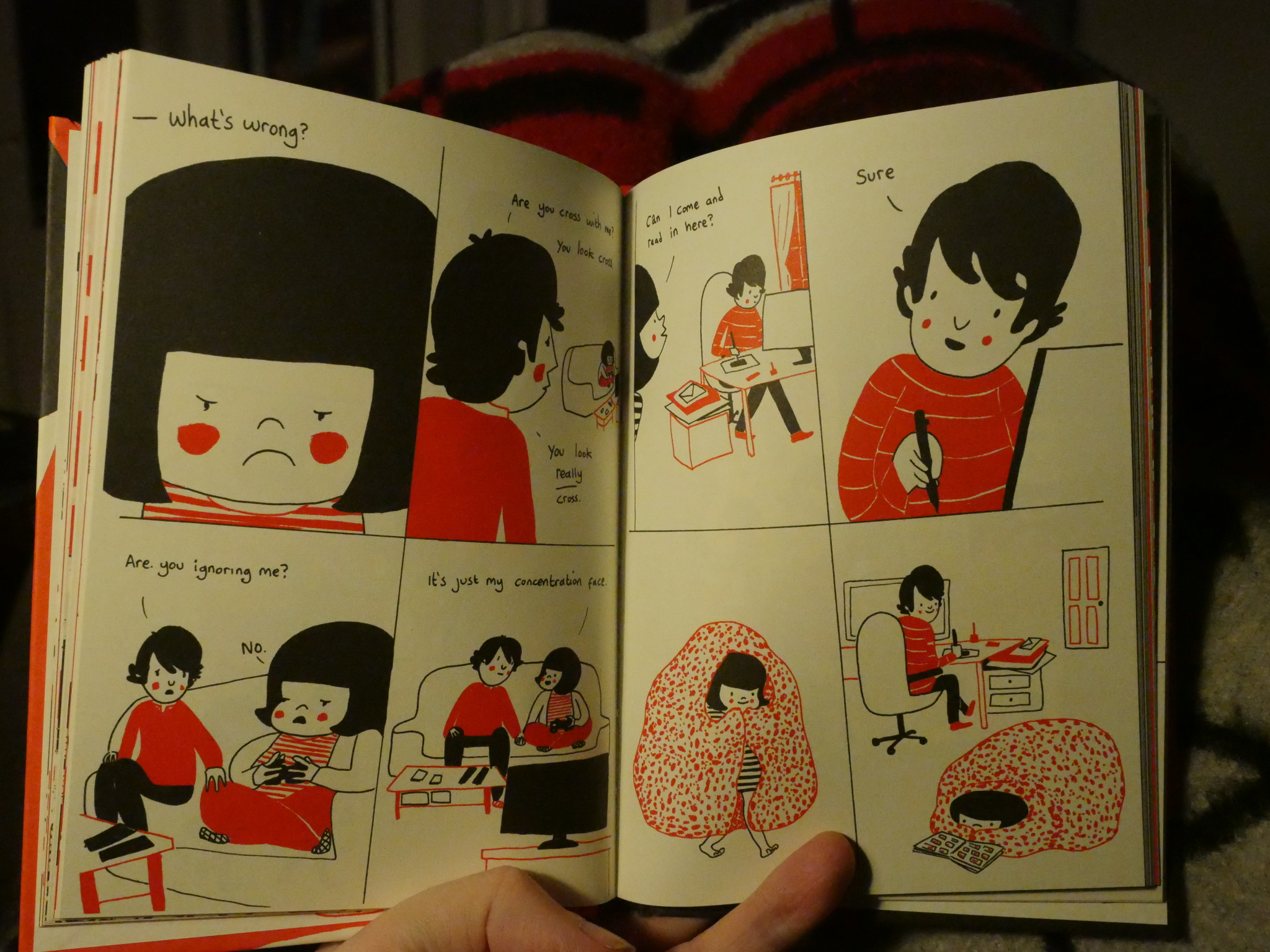
As the title promises, this is a soppy book. It’s all about love and togetherness and all that vile, drippy stuff.
But it’s just so cute! So cute!
Rough Age by Max de Radiguès (One Percent Press)
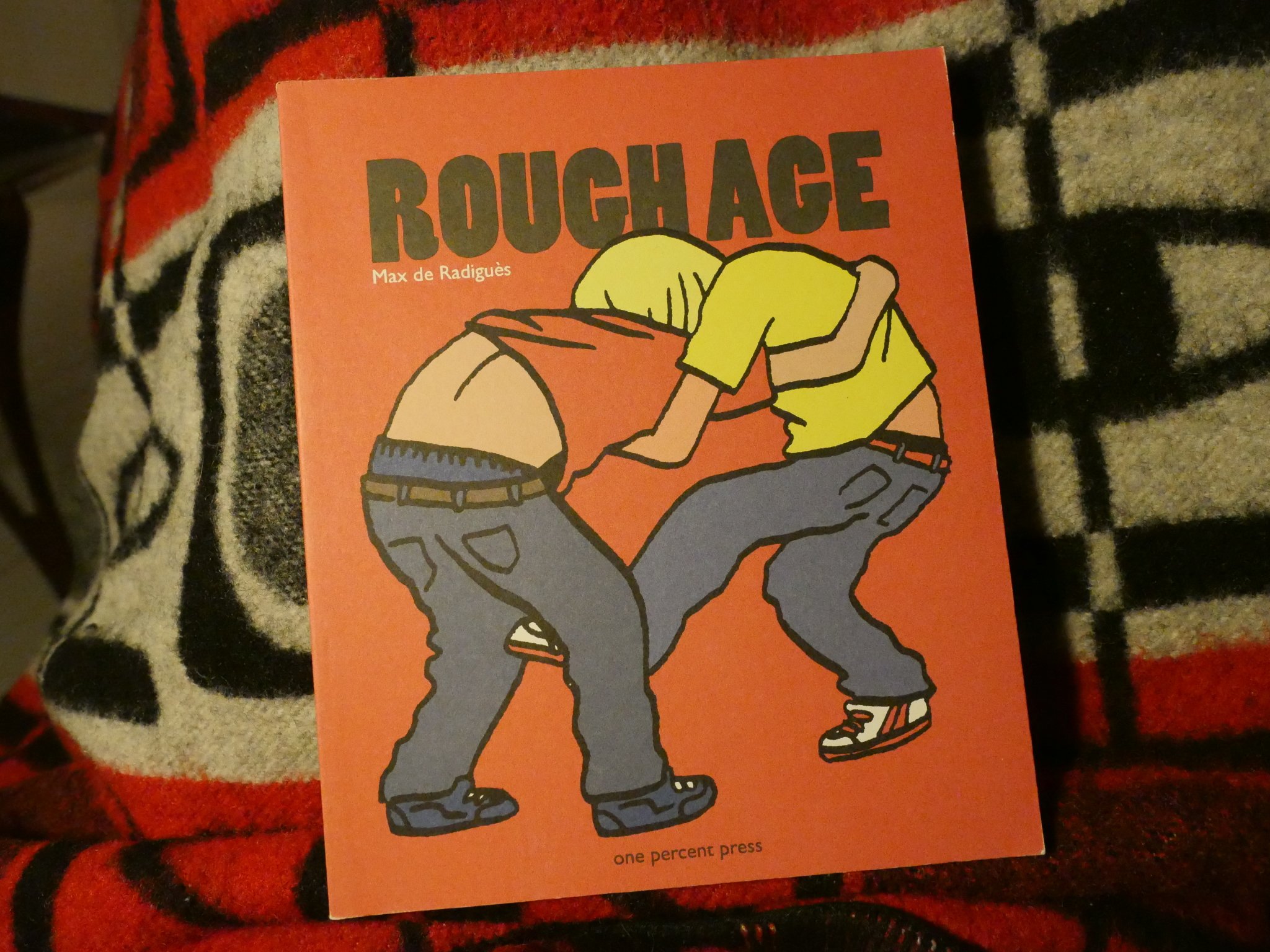
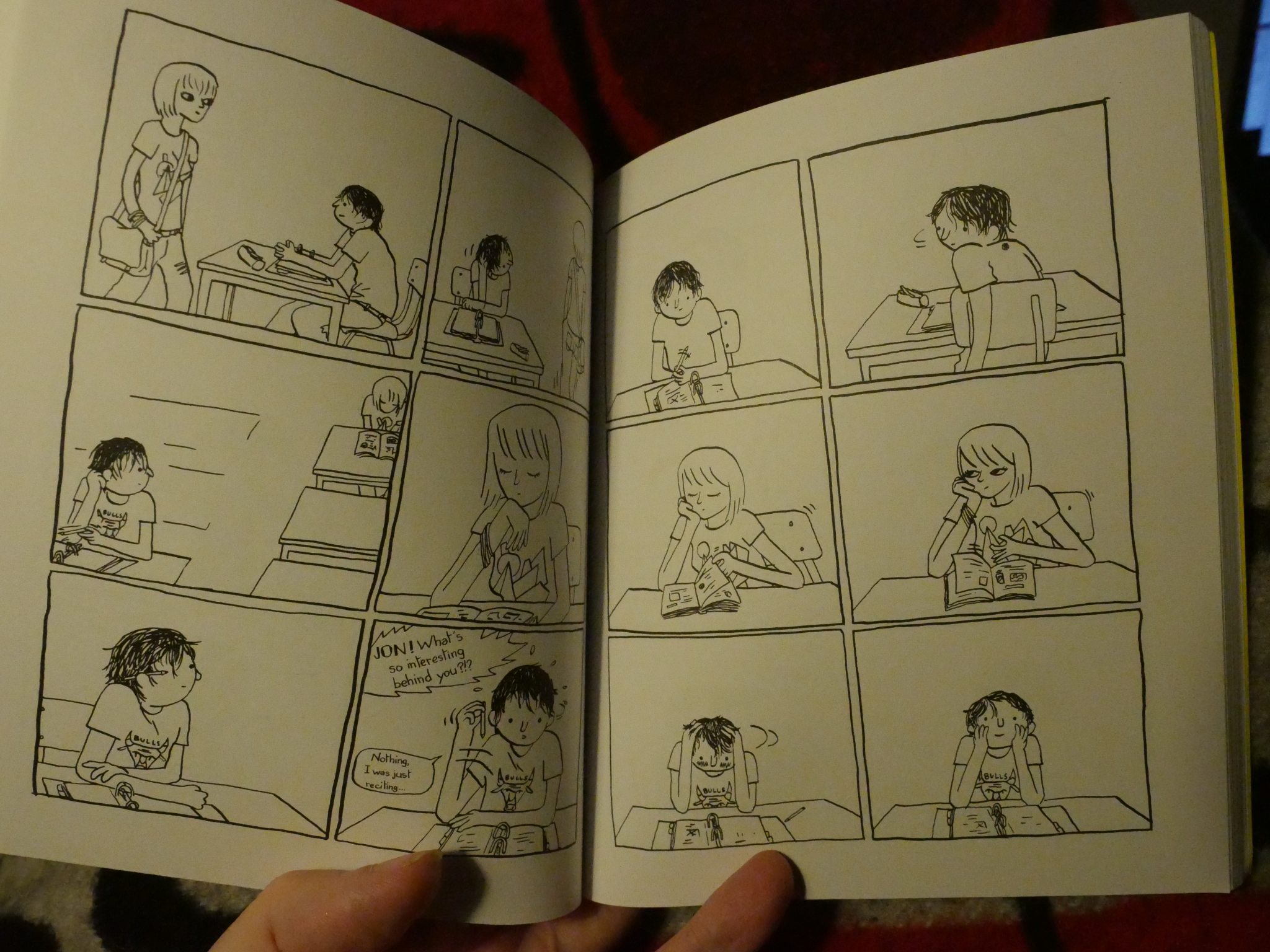
Yes, this is another one of those books about teenagers and growing up and stuff, and perhaps that should be a verboten subject for a few years. Just to clear the backlog of those books. But when it’s this good, what are you gonna do?
Unlovable vol 3 by Esther Pearl Watson (Fantagraphics)
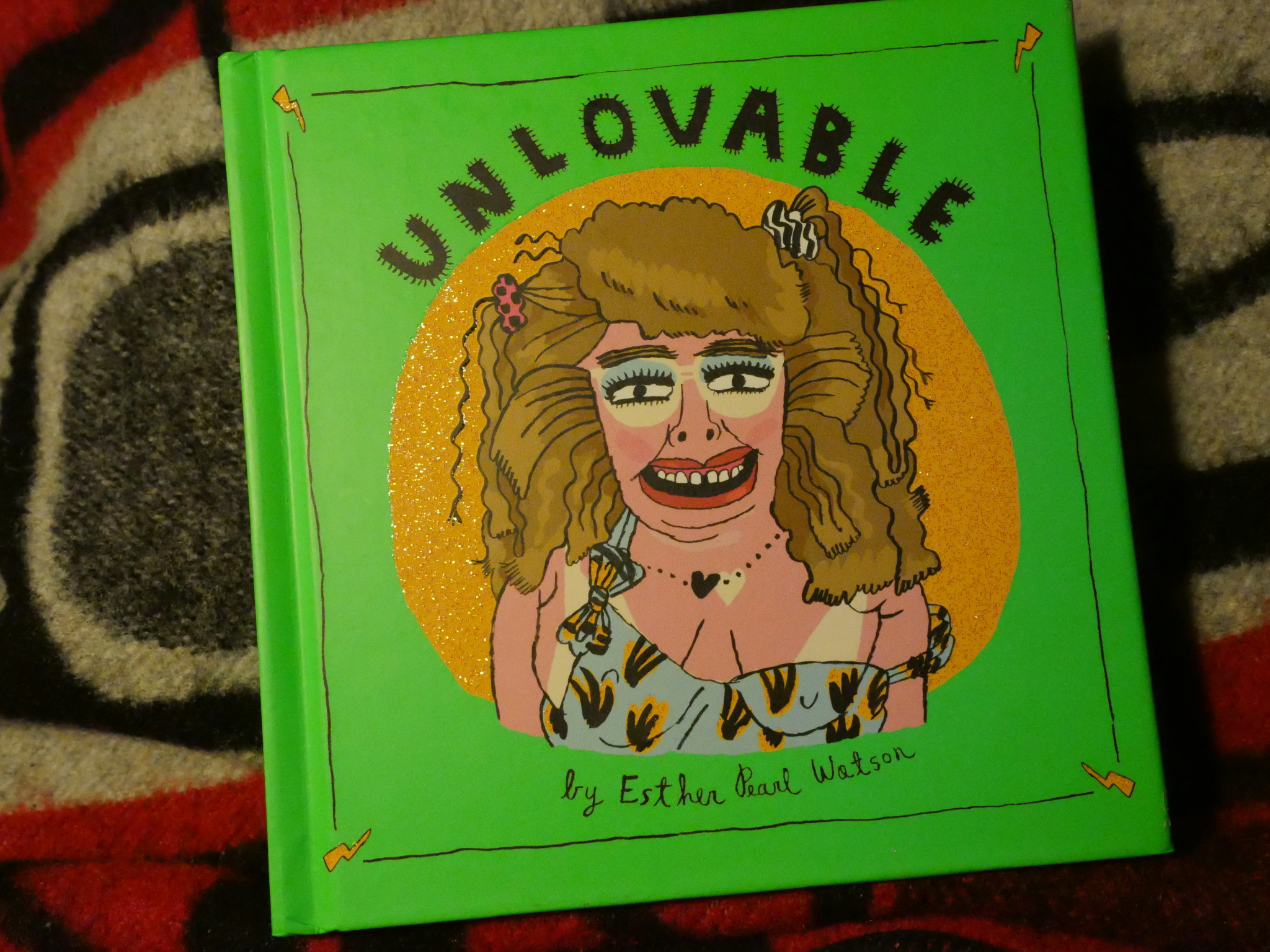
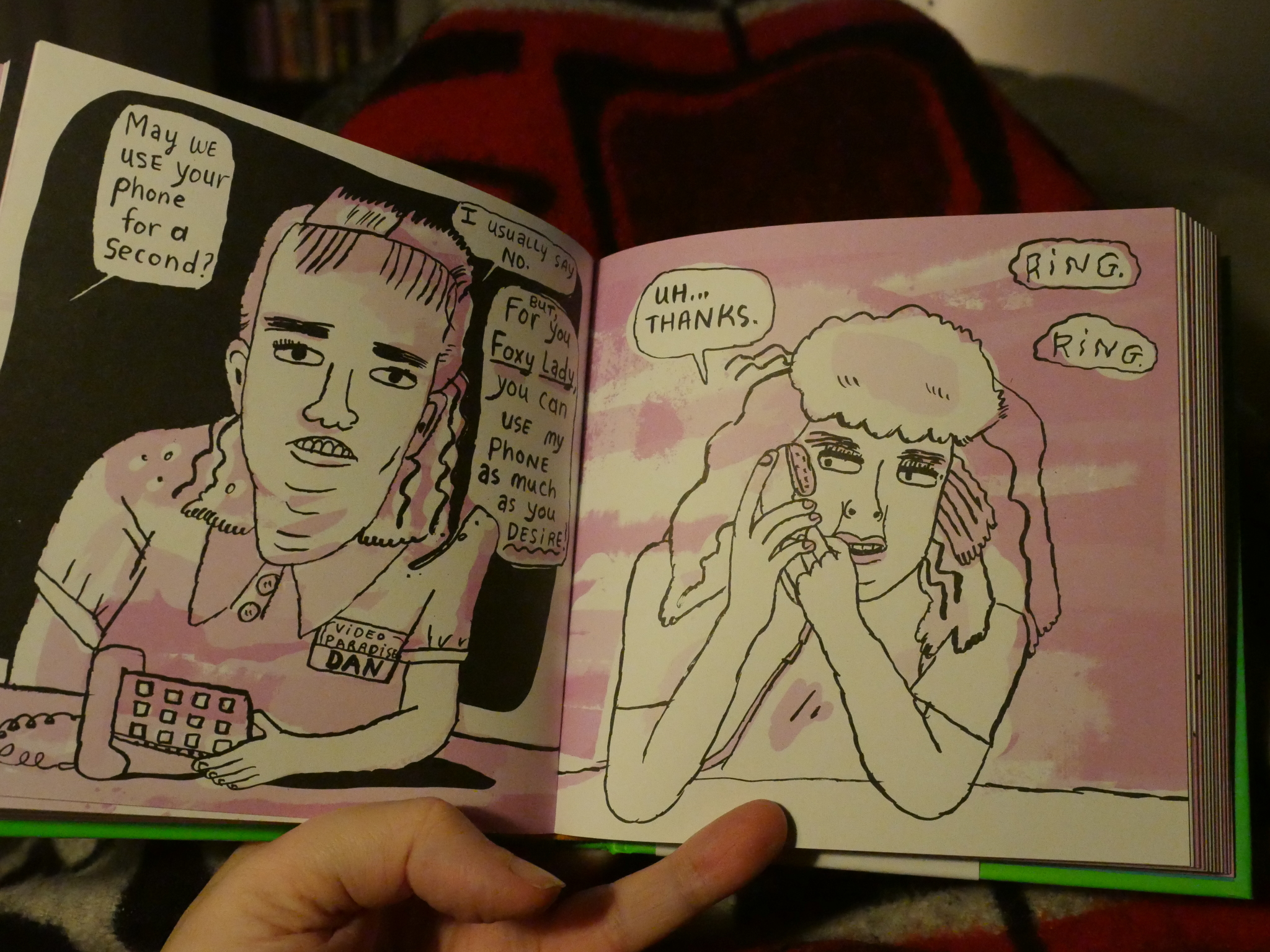
Watson still claims that these books are totes based on a real diary that she found in a gas station restroom. Who knows, it may even be true? In any case, by volume three you would perhaps suspect that this well had run dry, but it def hasn’t. It’s just as hilarious and embarrassing as ever. If Watson feels like putting out a new volume every couple of years, I’ll continue to be a loyal reader.
One Year in America by Elisabeth Belliveau (Conundrum Press)
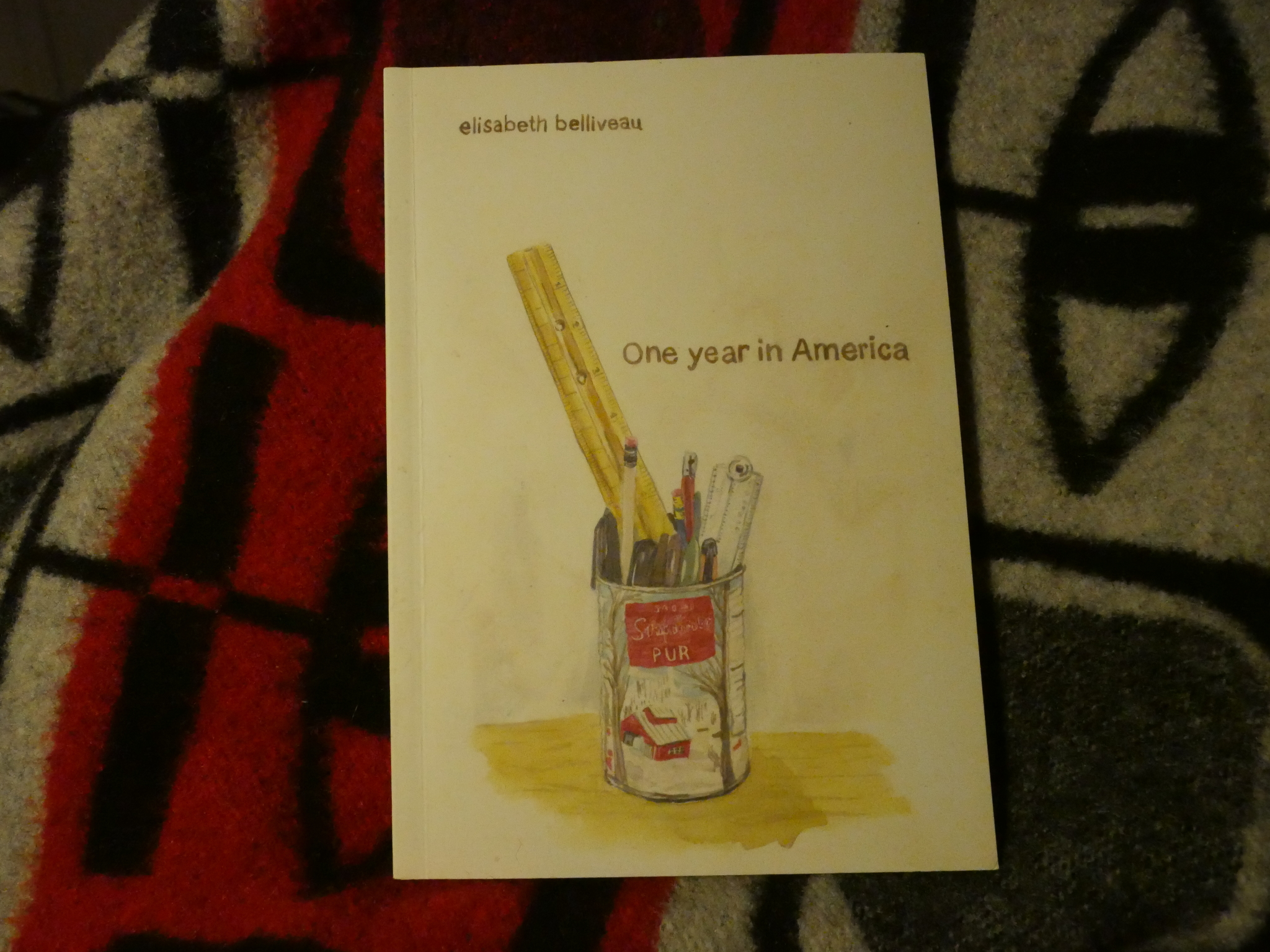
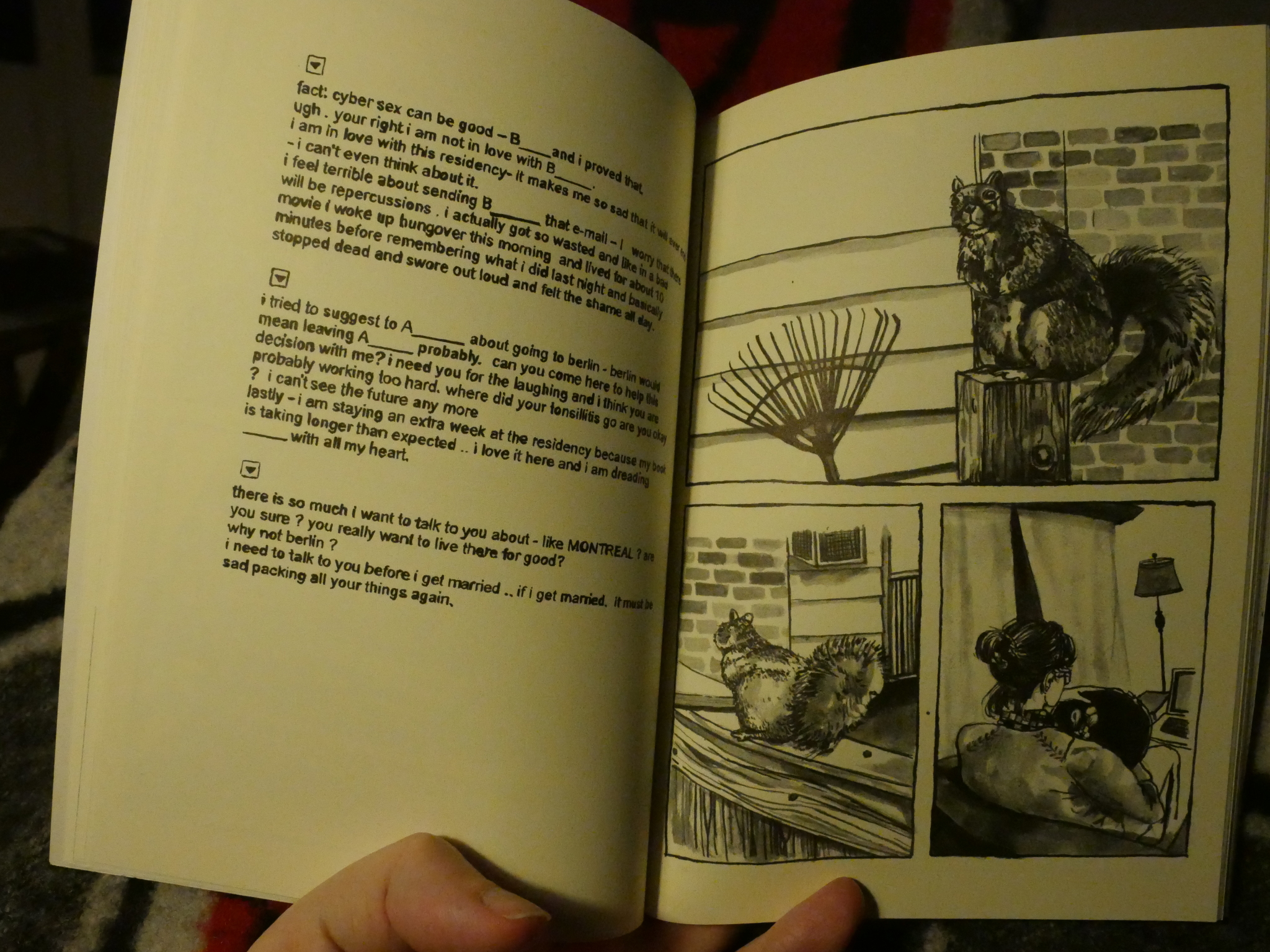
A kind of epistolary comic, it’s charmingly drawn with ink and washes. It’s melancholy and oblique, but seems optimistic, anyway. It’s one of those muted reading experiences where everything goes all quiet in your head.
Rough House 3 (self-published)
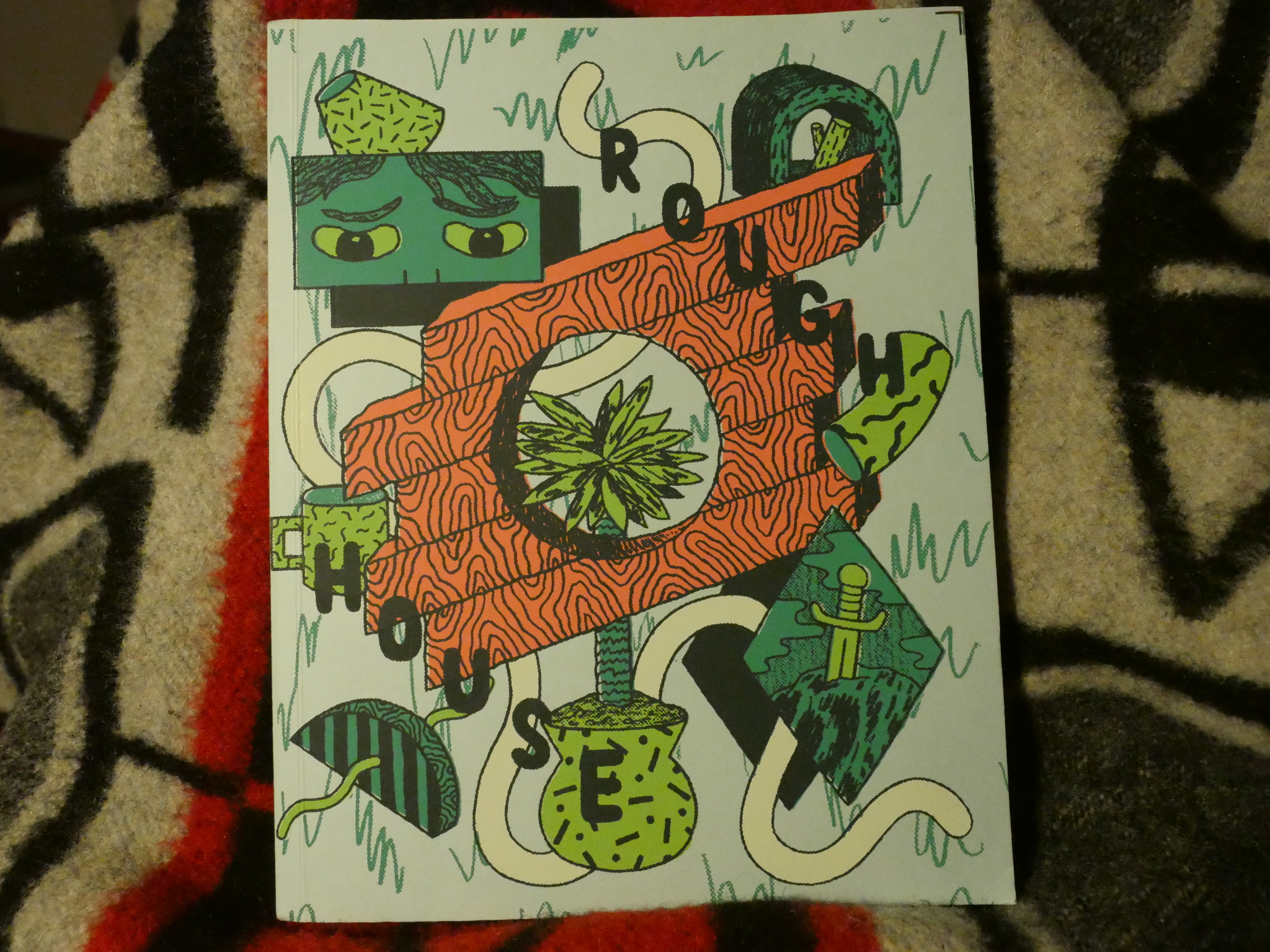

This thick anthology (with no editor listed) was all risograph printed, and this is definitely the largest book I’ve seen made with that technique. Must have been a lot of work putting it all together. Anyway, it has an impressive list of contributors, and even if there’s all sorts of comics approaches represented, it seems to work well as a unit. Anthologies that work this well are a rarity these days.
New Construction by Sam Alden (Uncivilized Books)

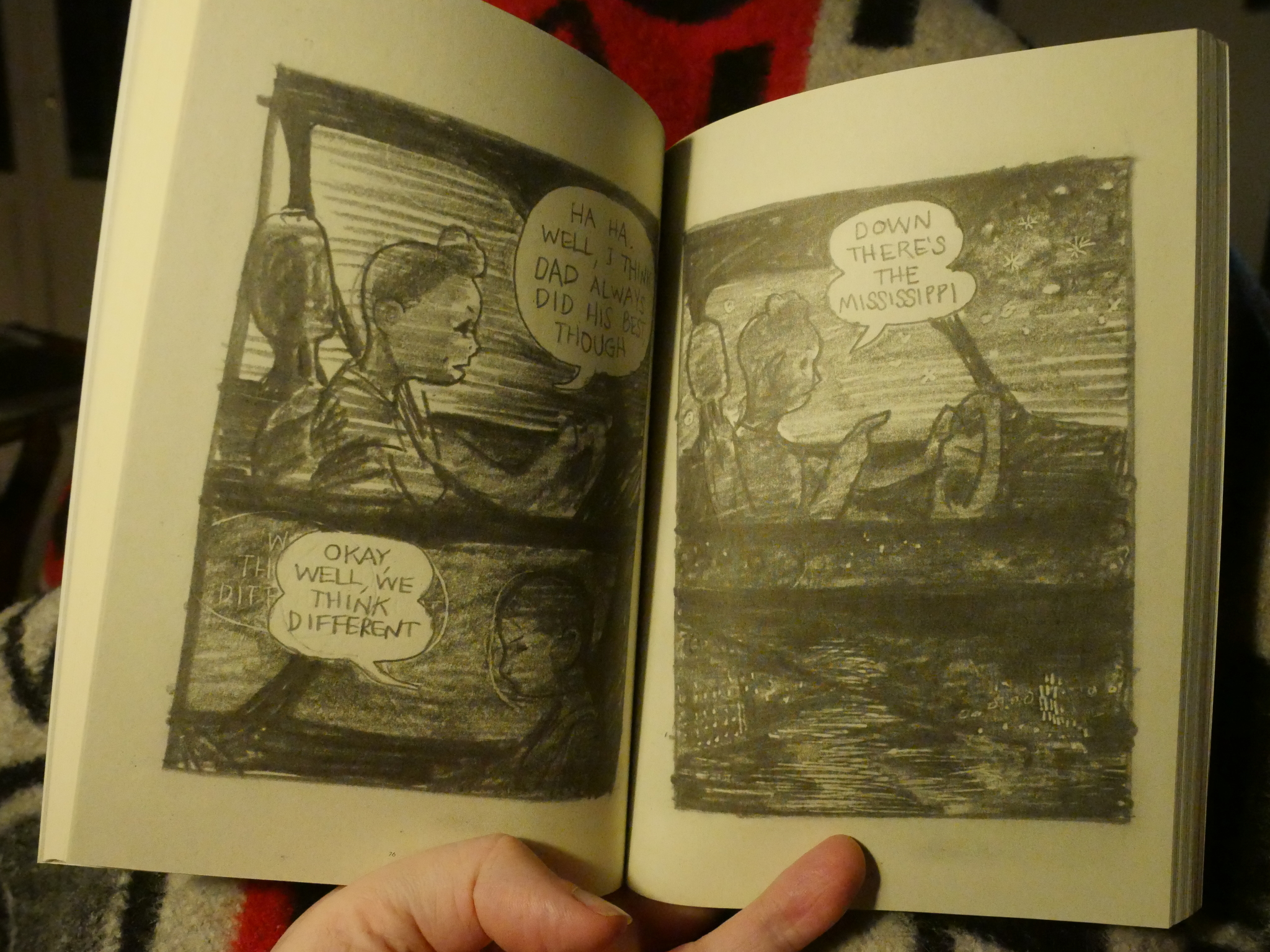
This small, but thick and smart little book is typical Sam Alden. That is, it’s just brilliant, from the sketchy pure pencil drawings, to the decompressed pacing, to the emotionally draining stories. Genius!
Don’t Cry Wolfman Chicago by Nate Beaty (self-published)
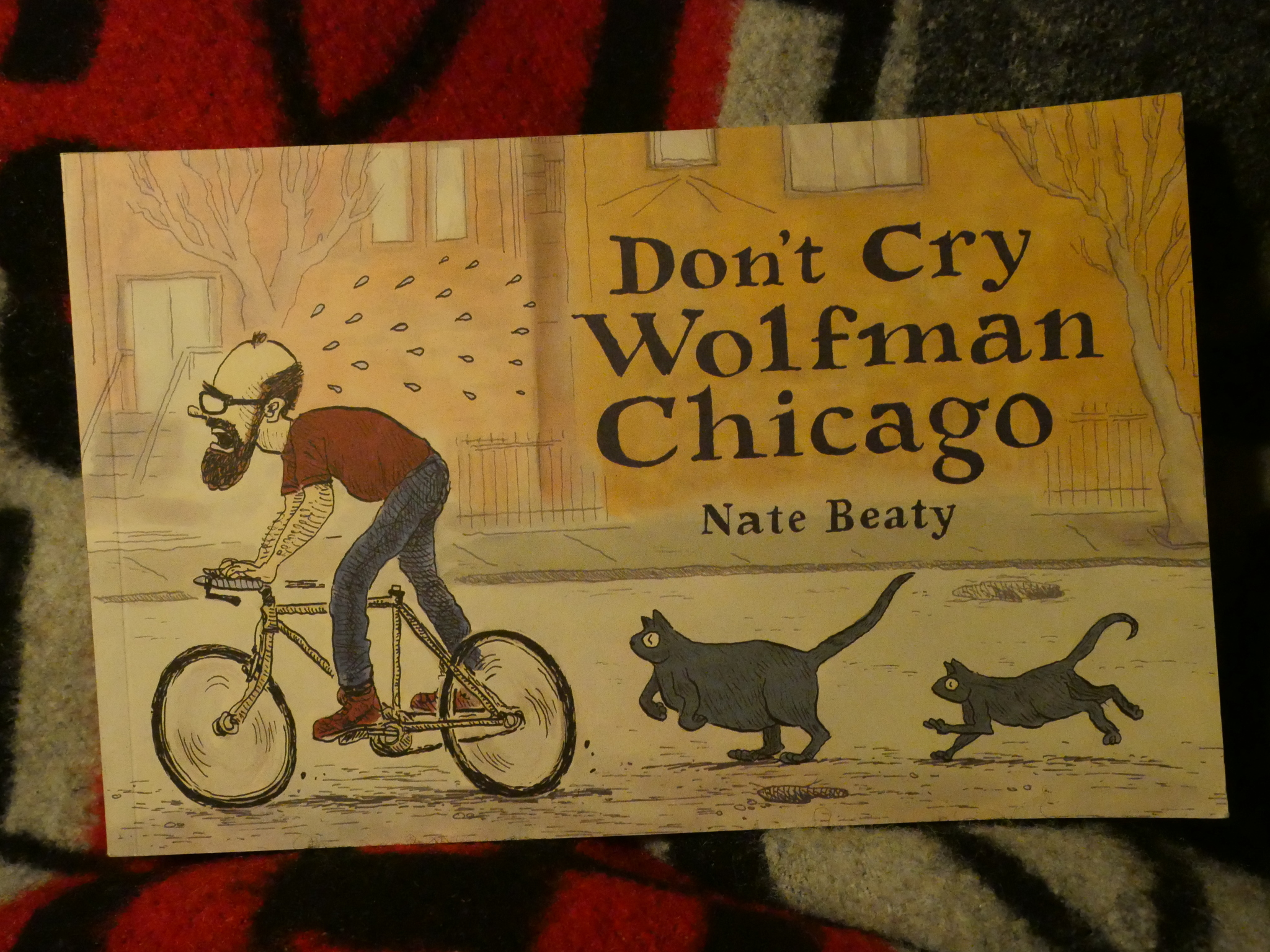
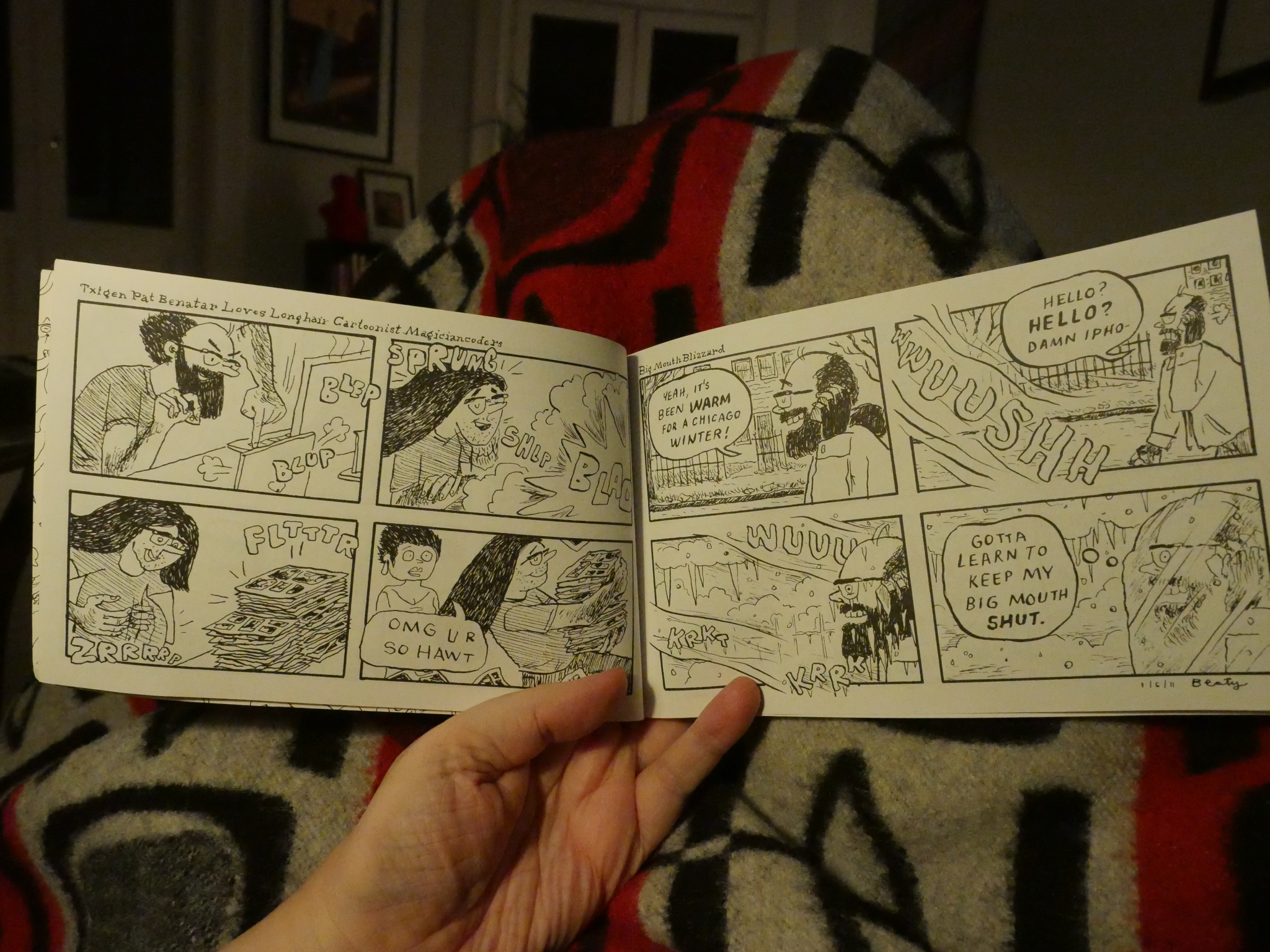
This is a collection of comics originally published on dar web, so it is no surprise that these are comic strips. That is, of the funny kind. And when they are funny and absurd, they are very funny and very absurd (see left). And sometimes they’re just kinda ordinary (see right). But there are way more yays here than mehs.
Second Avenue Caper by Joyce Brabner and Mark Zingarelli (Hill and Wang)
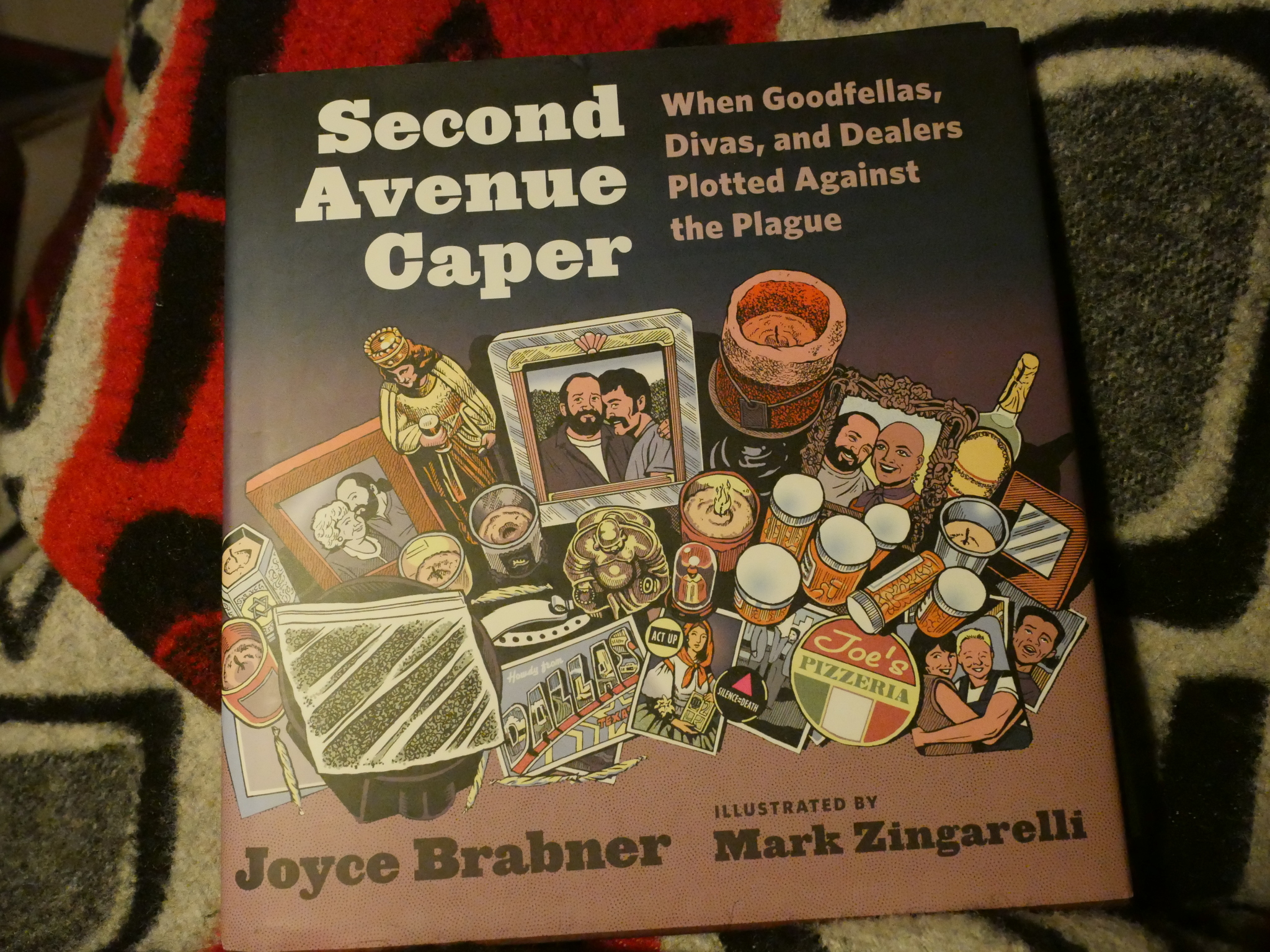
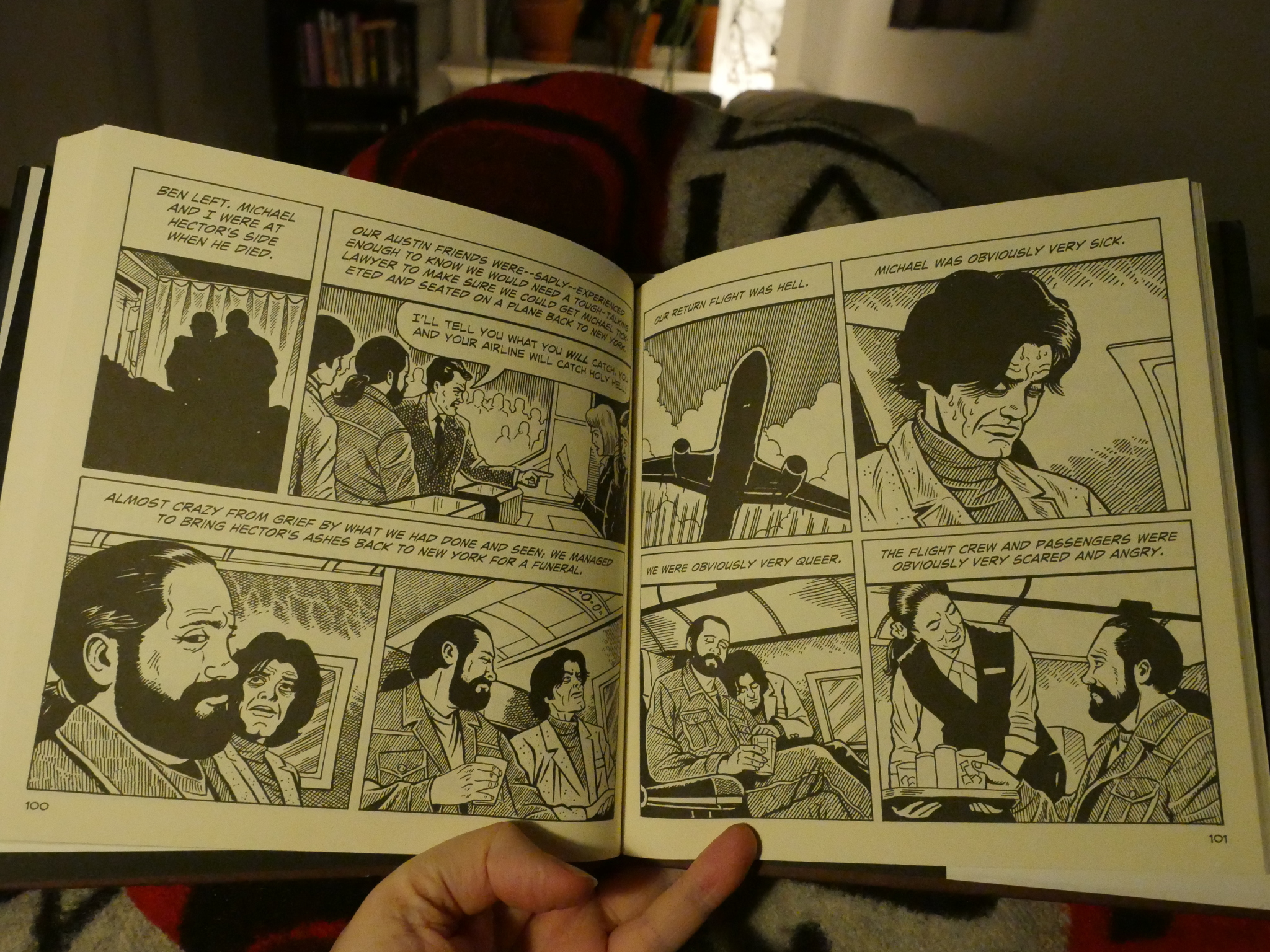
Hey! Old-fashioned narrative non-experimental comics. Gotta have some of those, too.
And when I started on this one, I was a bit sceptical again (so suspicious) because 1) it’s made by a writer/artist pair, and 2) it’s another one of them worthy subjects. But this works, too. It’s about AIDS and the 80s and smuggling experimental drugs from Mexico to sick people. It’s told very straightforwardly with no tricks to try to make things more dramatic or melodramatic than it was, and holding back really works here. It’s honest, interesting and very readable.
Loiterers by Simon Bossé (Conundrum Press)
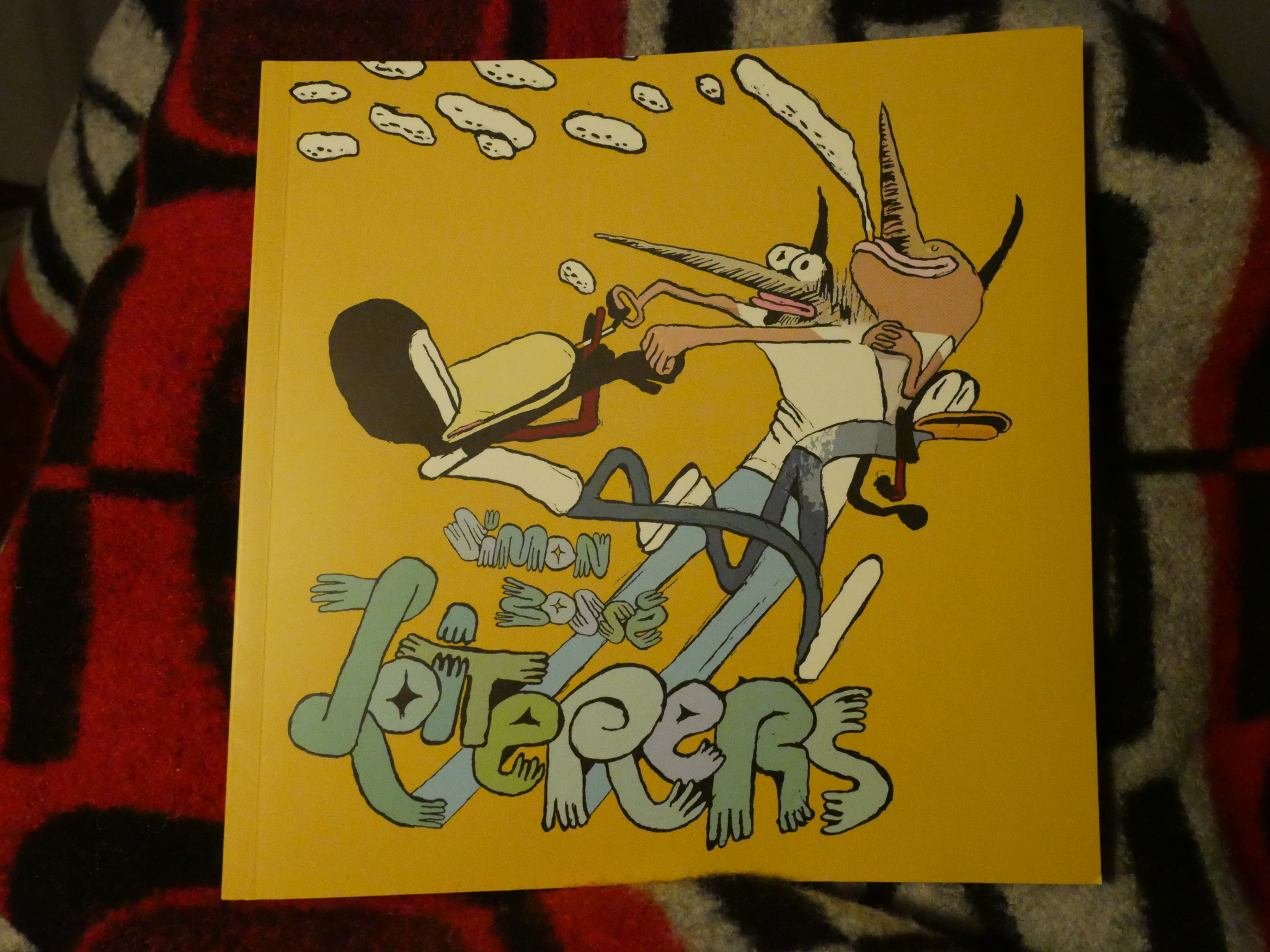
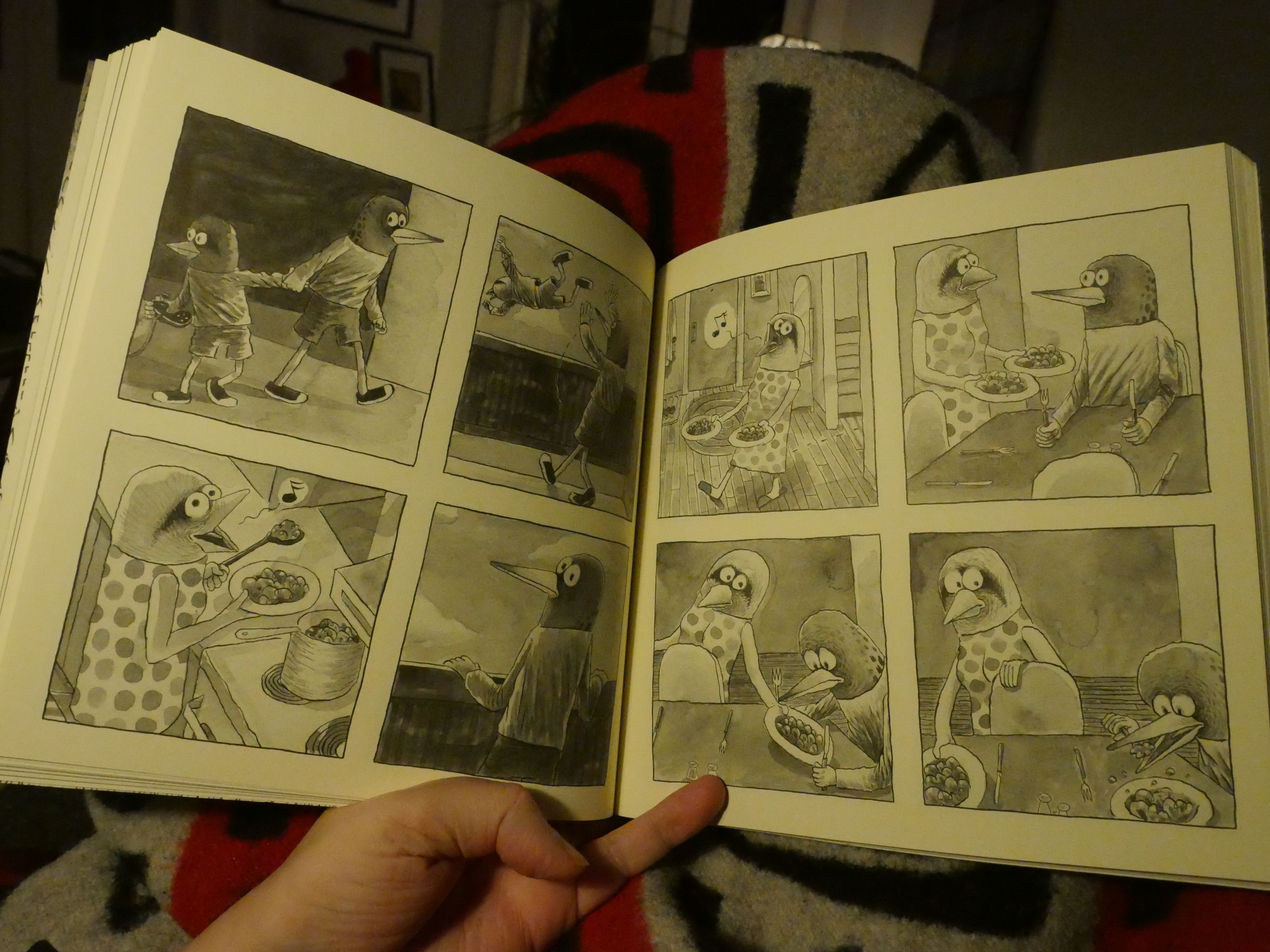
This book consists of mostly wordless short stories, all with this layout. Many of the stories imagine what it would be like if animals were kinda like humans and kinda like the animals depicted. Sometimes it’s funny and sometimes the effect is downright nightmarish: Above we have a child cuckoo that moves in with a family, proceeds to push the other children off the balcony and then pretends that everything is OK. The mother senses that something is off, but… what? Didn’t there use to be more children?
Creepy.
Oh, that’s the last of the books. Just look:
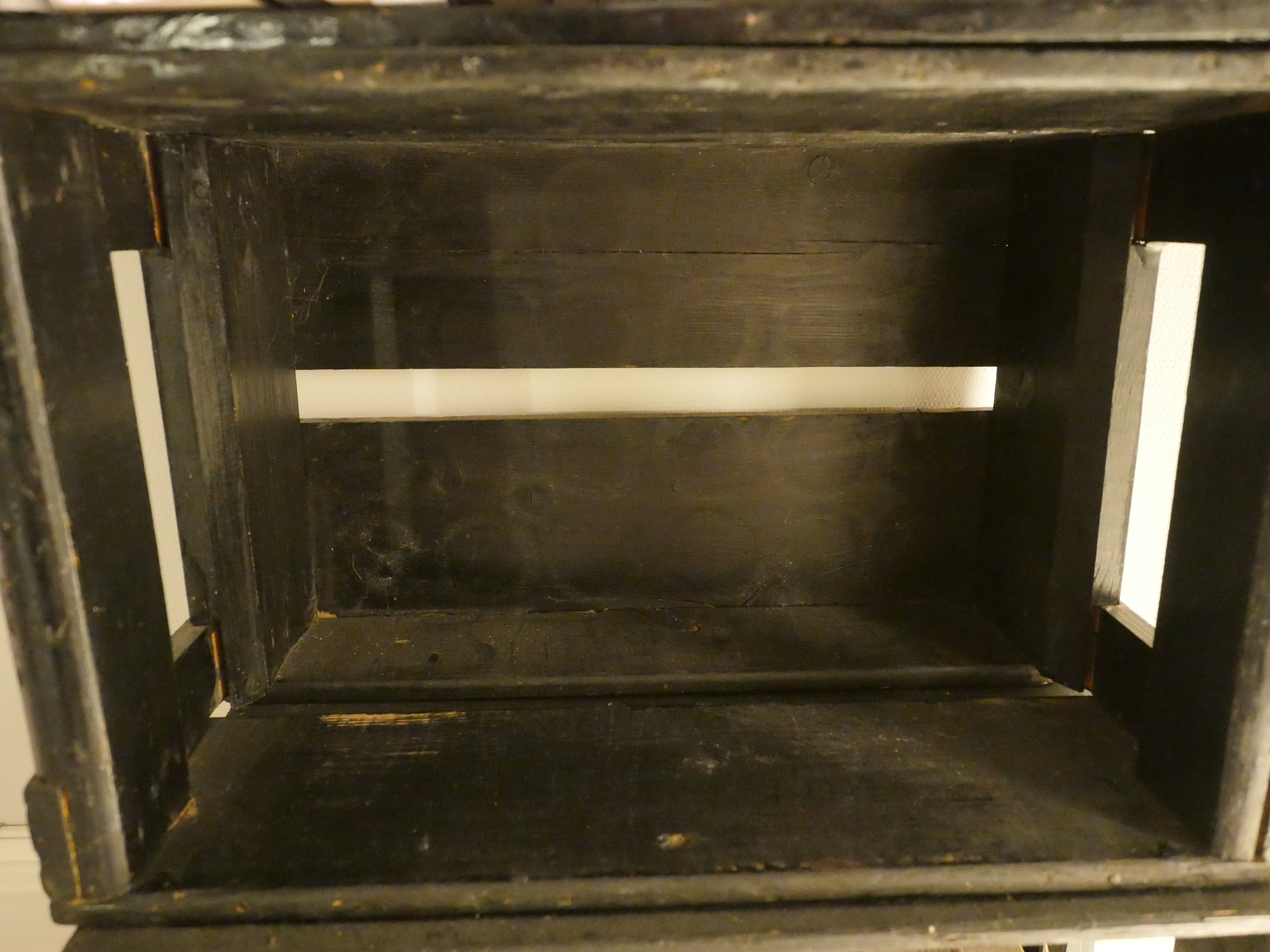
So here’s to 2017. As a year it’ll probably suck worse than many a year before it, but perhaps there’ll be some good comics.
